Based on my experience of visiting Tanzania at various times of year, the best time to visit truly depends on what you want to do and see as each safari season brings something different.
I’ve written this in-depth guide to help you confidently choose the very best time to visit Tanzania for you! Whether it’s all about the perfect Big Five safari, an epic Kilimanjaro hike, or the ultimate Zanzibar beach trip – or all three! – this article will help you get your timing just right.
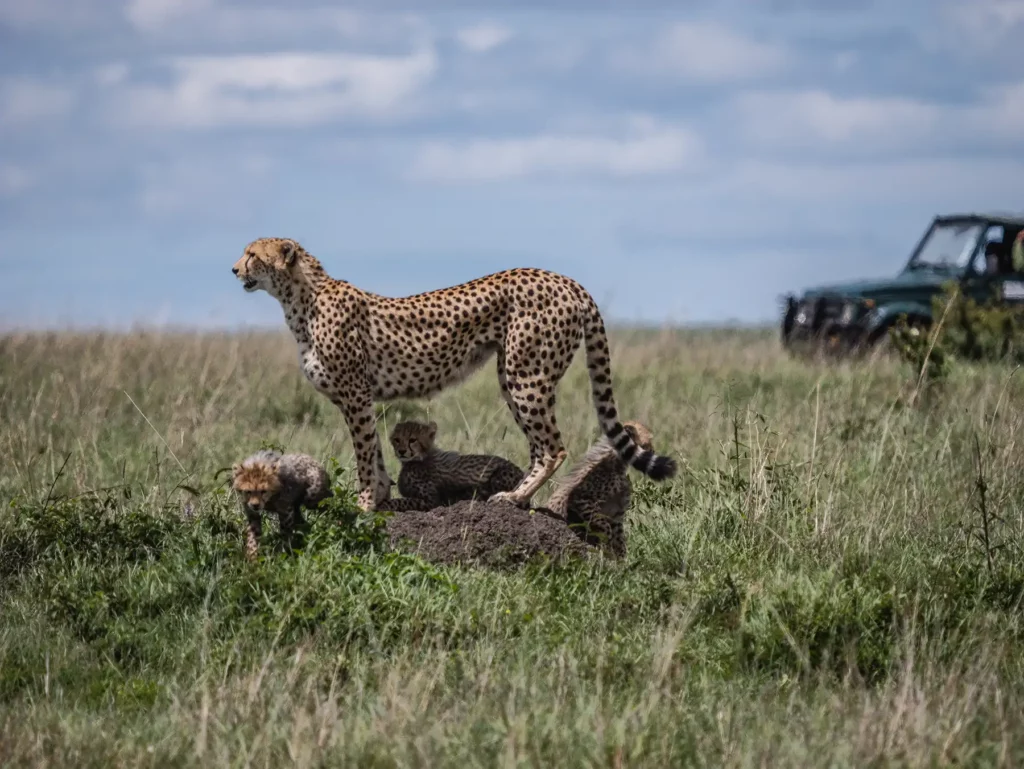
Below I’ve rated each month of the year in Tanzania as either excellent, good, okay or poor, based on wildlife viewing and weather conditions. You can click any block to learn more about a particular month.
It’s essential to be in the right place at the right time of year, depending on what you want to do and see.
For example, if you want dramatic scenes of thousands of wildebeests crossing the crocodile-infested Mara River in Northern Serengeti, you’ll want to visit Tanzania from mid-July to September.
On the other hand if you want to witness an awe-inspiring 8,000 baby wildebeests being born per day, with hungry predators are lurking all around, then January and February in southern Serengeti is the right time and place for you.

If you want to see the Big Five (lion, leopard, elephant, rhino, buffalo) in Tanzania you have a wider window.
Whilst the consensus view is that the best time to see the Big Five in Tanzania is during the dry season from June to October, when animals gather around water sources and vegetation is thinner, making wildlife easier to spot, I’ve actually had more success spotting the rarest of the Big Five, black rhinos, in the wet season.
Why? Because during the dry season the black rhinos retreat to the forests to feed as they are browsers. In contrast, in the rainy seasons the grass is lusher and thicker and so they can be found in the open feeding on this dense grass making them much easier to spot.

My Favourite Month: September 👑
My personal favourite month to visit Tanzania is September. The weather is incredible, it’s less busy than peak season in August, and it’s also better value for money. The Mara River crossing, part of the Great Wildebeest Migration, is in full swing in Northern Serengeti.
What’s more, big cat spotting is out of this world!
If you fancy a challenge, your September Tanzania itinerary can also include a climb up Mount Kilimanjaro, followed by some relaxation on the beaches of Zanzibar at the end!
However, when it comes to Tanzania, your preferences can mean that a different month may actually be better for you. Therefore I highly recommend you read on to learn more about the pros and cons of each time of year so that you can make the perfect choice.
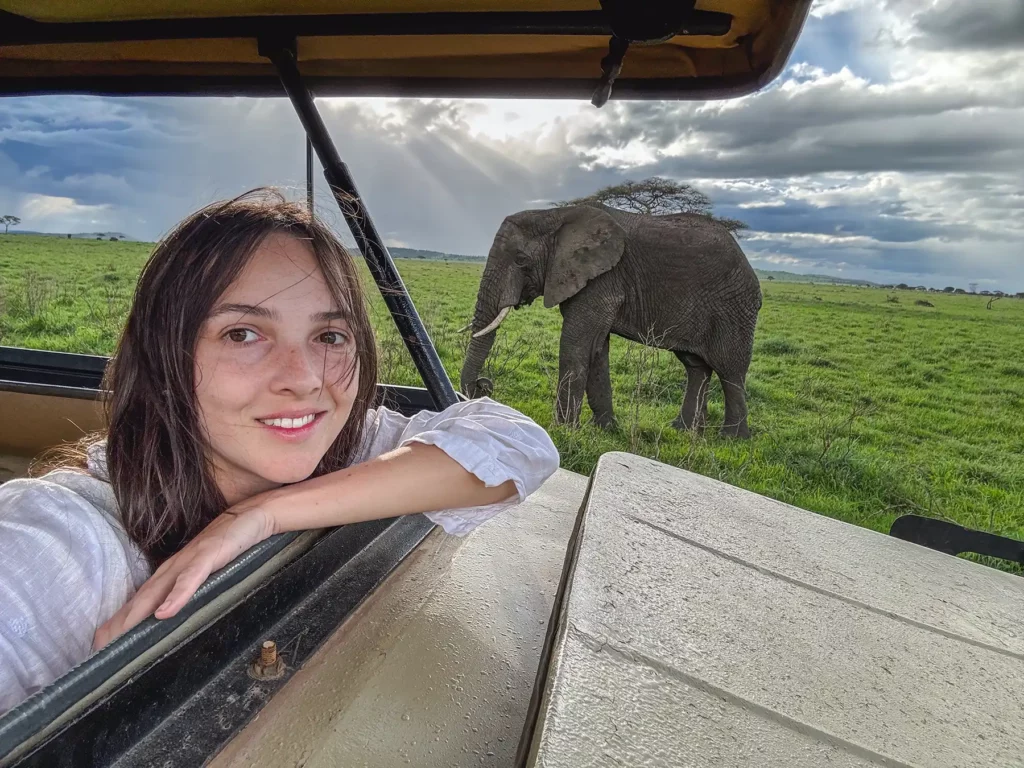
Embark on the Safari of Your Dreams
Save time and ensure an incredible safari experience by getting quotes from my recommended local safari companies
I’m here to make booking your perfect safari quick, easy and risk-free.
Join the rapidly growing tribe of over 1,000 travellers who’ve booked their dream safari using my insider tips and recommendations.

It takes under 60 seconds to fill out the form and in under 48 hours you will receive multiple, no-obligation proposals from my favourite local tour operators with glowing online reviews.
Get your free no-obligation safari quotes and my top safari tips and recommendations
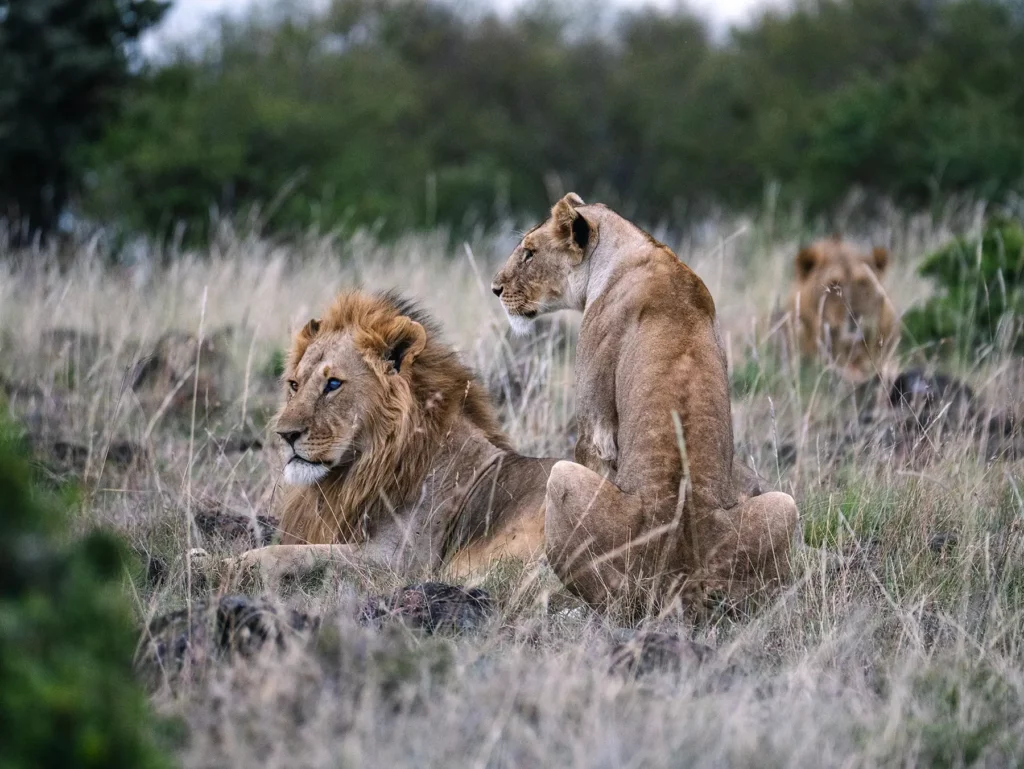
A Quick Visual Guide to the Best Months to Visit Tanzania
If you want to know more about which activities work best in which months, and how costs fluctuate throughout the course of the year, you’ll find the chart below helpful. It shows what you can expect each month in terms of cost, weather, wildlife, the great migration, Zanzibar and hiking Kilimanjaro.
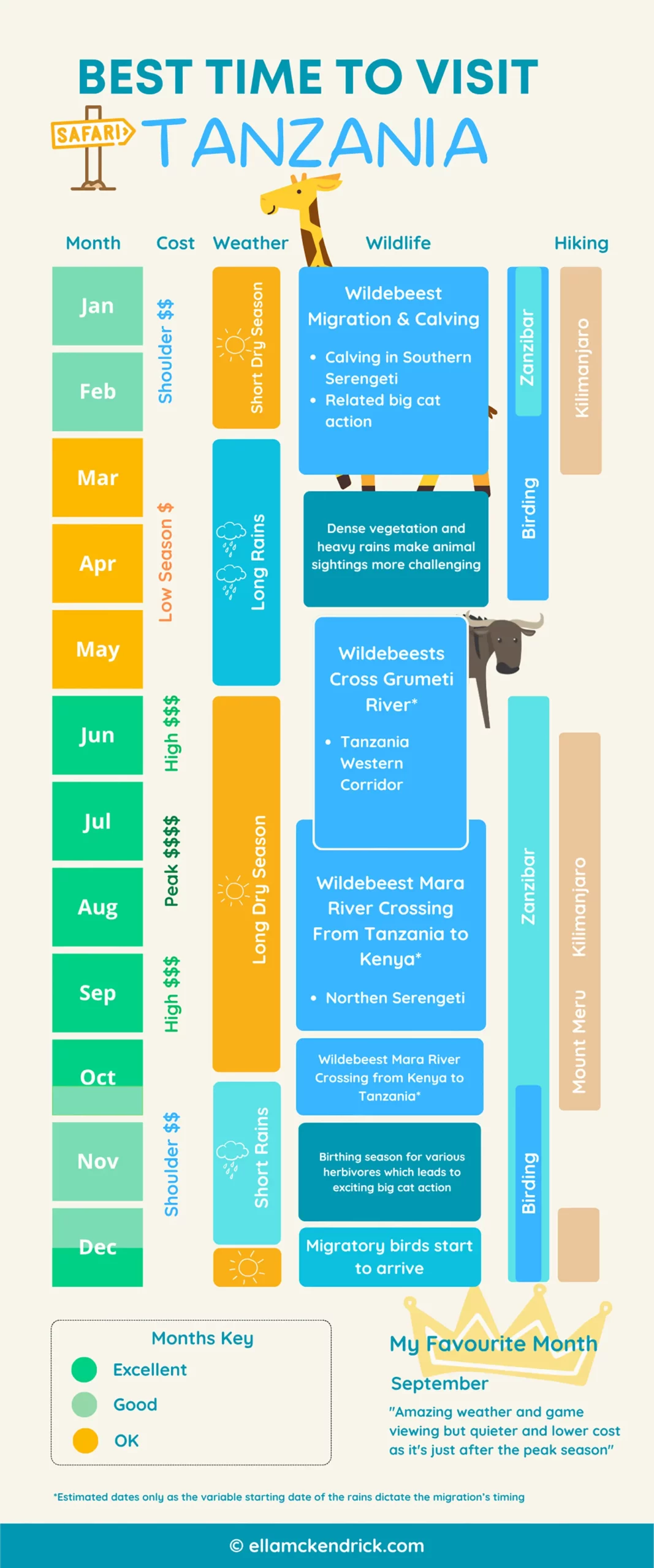
If you’re in a rush, I’ve detailed the best times for some popular actives below. However, with nature and wildlife things are not always quite that simple, so I’d recommend reading my comprehensive guide below to ensure you have all the information necessary to make an informed decision.
| Activity | Best Time |
|---|---|
| Seeing the Big Five (lions, elephants, rhinos, leopards and buffalos) | All year apart from the long rains between mid-March and mid-May |
| Seeing lots of baby animals including the Wildebeest calving | January and February on the Ndutu Plains of Southern Serengeti |
| Visiting Zanzibar | Long dry season from June to October |
| Hiking Kilimanjaro | Mid-June to Mid-October and December to mid-March |
| Mara River Crossing – the highlight of the Great Migration, where approximately 1.5 million wildebeest cross the crocodile-infested river | Mid-July to mid-October but August will give you the maximum chances. Location: Mara River, Kogatende in Northern Serengeti. |
| Visiting both Kenya and Tanzania | June to October so you can see the wildebeest crossing from both sides |
In This Guide
- The Important Role of the Rains
- Photo Comparisons For Different Times of the Year
- Month by Month Breakdown
- Best Time to Visit Tanzania for Safari
- Worst Time to Visit Tanzania for Safari
- Best Time to Visit Tanzania for the Wildebeest Great Migration
- Best time to Visit Tanzania for Baby Animals
- Best Time To Visit the Top Safari Reserves in Tanzania
- Best Times to Visit Both Tanzania and Zanzibar for Safari and Beach
- Best Time for Hiking Kilimanjaro
- Best Time To Visit Tanzania for Birdwatching
- Tanzania High Season Vs Low Season
- Cheapest Time of Year to Visit Tanzania
The Important Role of the Rains
The variable timing of the rains dictates the timing of most of the natural events in Tanzania. If the rains arrive a little early, things like calving season and migrations will happen earlier. Likewise, if the rains come a little late, nature will delay things accordingly!
Planning your visit in the middle of the expected times for events maximises your chances.
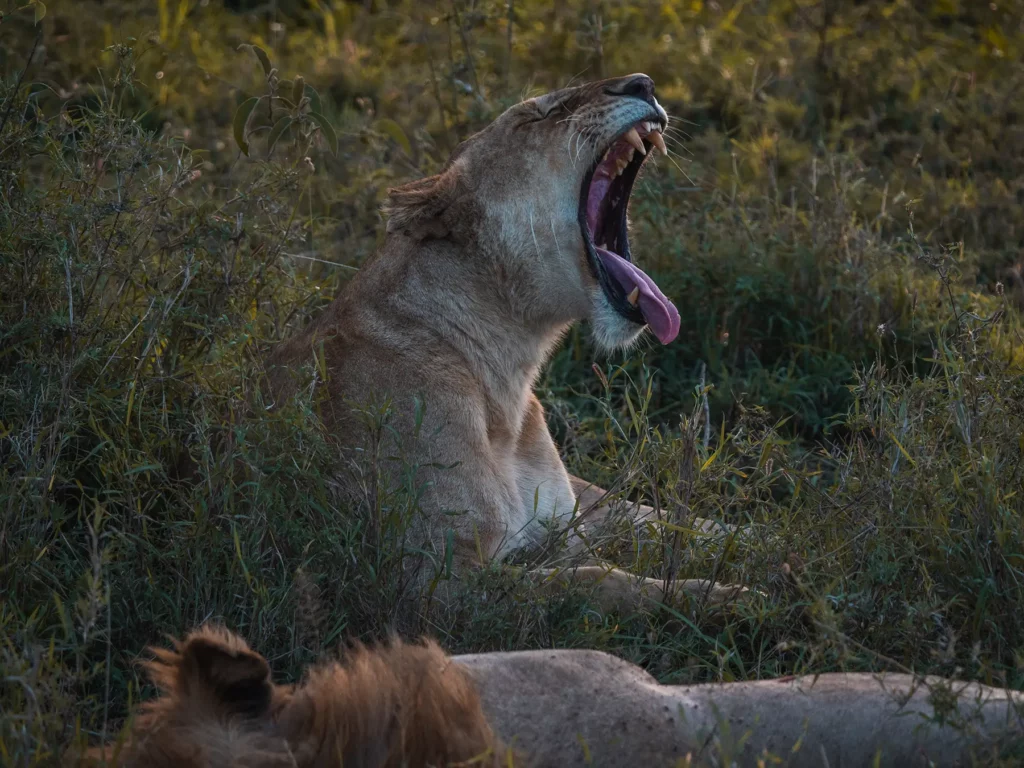
Tanzania Safaris: Wet Season vs. Dry Season Photo Comparison
To illustrate how dramatically the landscape transforms throughout the year, I’ve included two photos below. Both show me overlooking Ngorongoro Crater in Tanzania with one taken during the lush wet season, the other during the arid dry season.
Wet Season View of Ngorongoro Crater
Here, the beautiful, lush green landscapes can make wildlife viewing more challenging, as the abundant water and dense foliage allow animals to spread out and remain hidden.
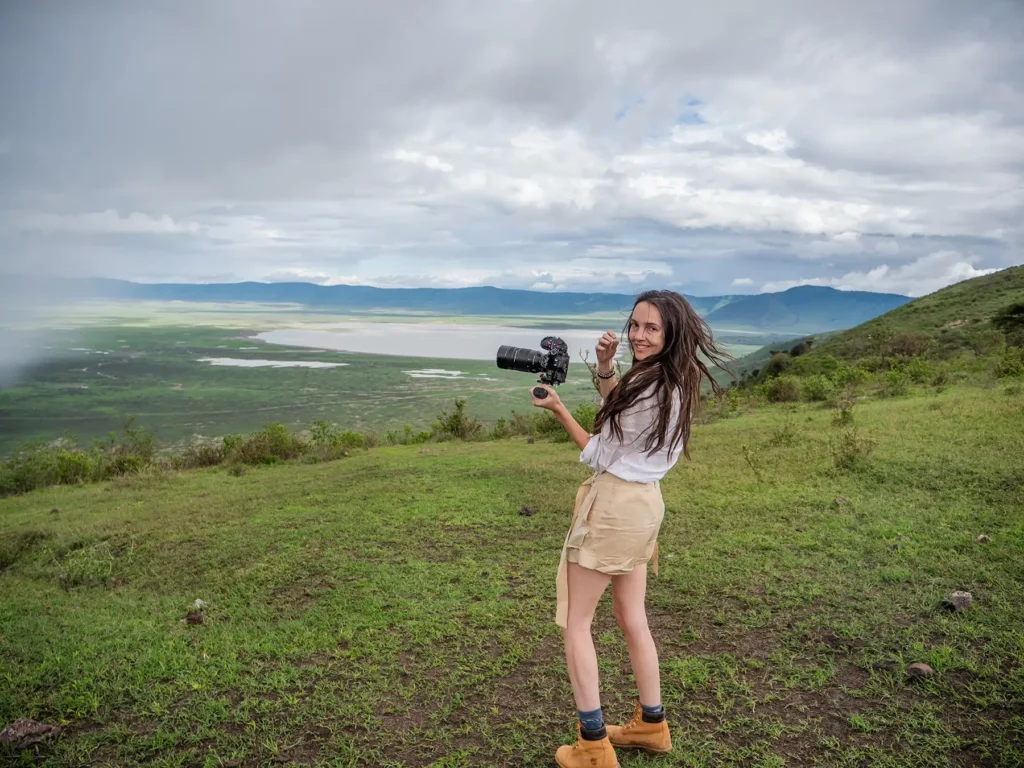
Dry Season View of Ngorongoro Crater
The dry landscapes make wildlife easier to spot, as animals tend to congregate around the remaining waterholes.

Photo Showing How Crowded Tanzania’s Parks Can Get in Peak Season
Another key difference you’ll notice throughout the year – besides the changing landscape – is the number of safari vehicles in the parks, especially at popular wildlife sightings. The image below shows a busy sighting during peak season, with even more vehicles hidden from view on the near-side of the tree.
With the exception of key sightings, this is less noticeable in bigger the parks such as Serengeti and Tarangire and more noticeable in smaller parks such as Ngorongoro Crater.

Tanzania: Month by Month Breakdown
Whilst Tanzania has something incredible to offer visitors in every month of the year, the long rains in March, April and May are best avoided for all but the most adventurous visitors. This is because the heavy rains can cause flooding, and many lodges and camps close during this period.
In the breakdown below, I’ve provided the pros and cons of each month, along with what you can expect in terms of weather, wildlife viewing, birdwatching, Kilimanjaro and Zanzibar.
You can treat this as a good general guide, but remember that the beauty of nature is that it’s unpredictable and untameable!
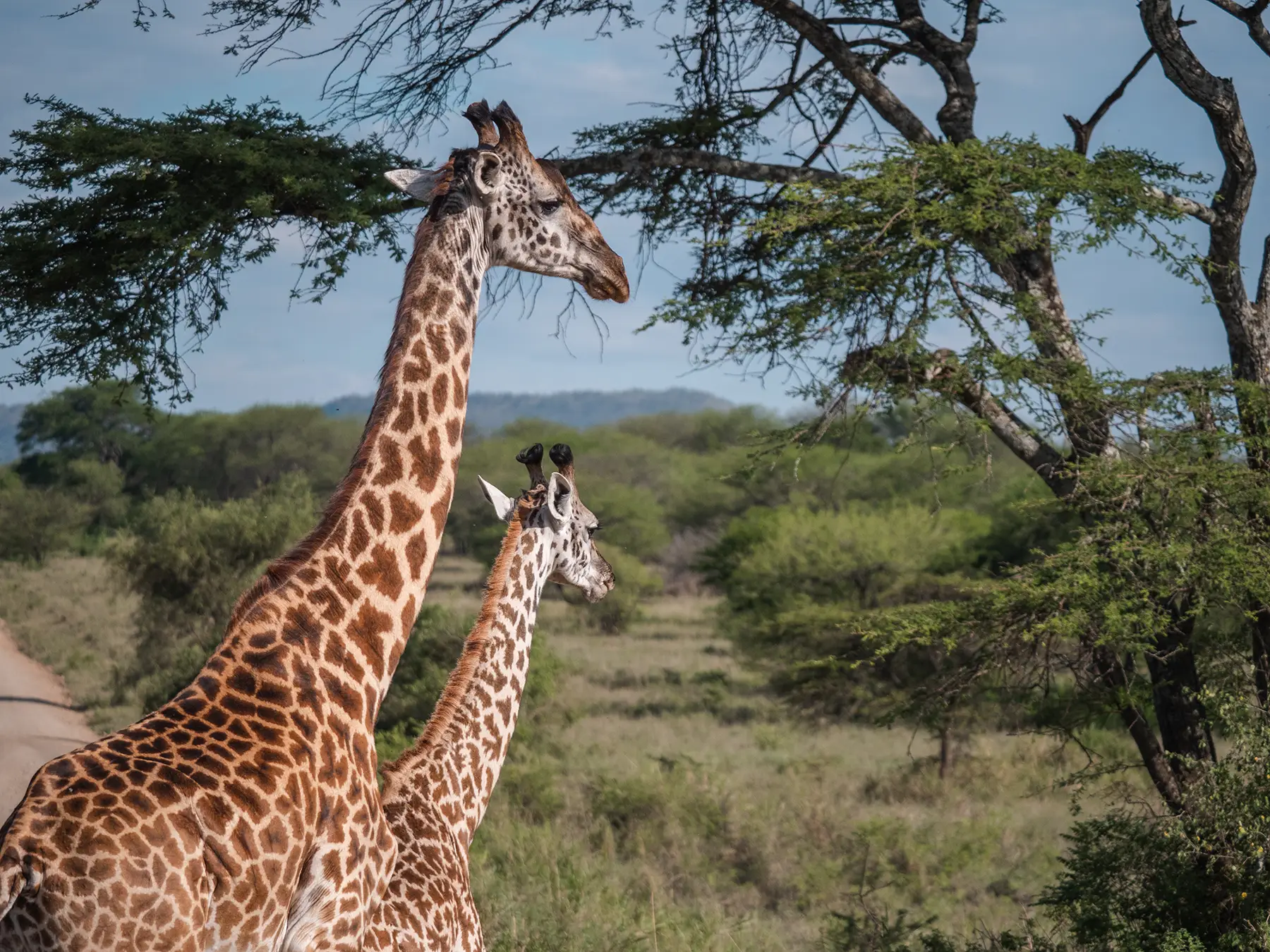
January in Tanzania
- Good
Season: short dry season
January is a good month for photographers and visitors wanting to see lots of baby animals and related big cat activity.
January marks the start of the short dry season. You’re unlikely to get caught in a downpour, and yet the landscape is still lush and green from the previous season’s rains. This makes for excellent conditions for wildlife photography.
Prices are lower compared to the upcoming peak season, Kilimanjaro is warm and dry, and it’s also an ideal time to squeeze in a few days to chill and explore exotic Zanzibar.
January Ratings Overview
Below are January’s ratings for wildlife, the great wildebeest migration, Zanzibar, busyness, and weather.
- Excellent
- Good
- OK
- Poor
Wildlife
Migration
Zanzibar
Busyness
Weather
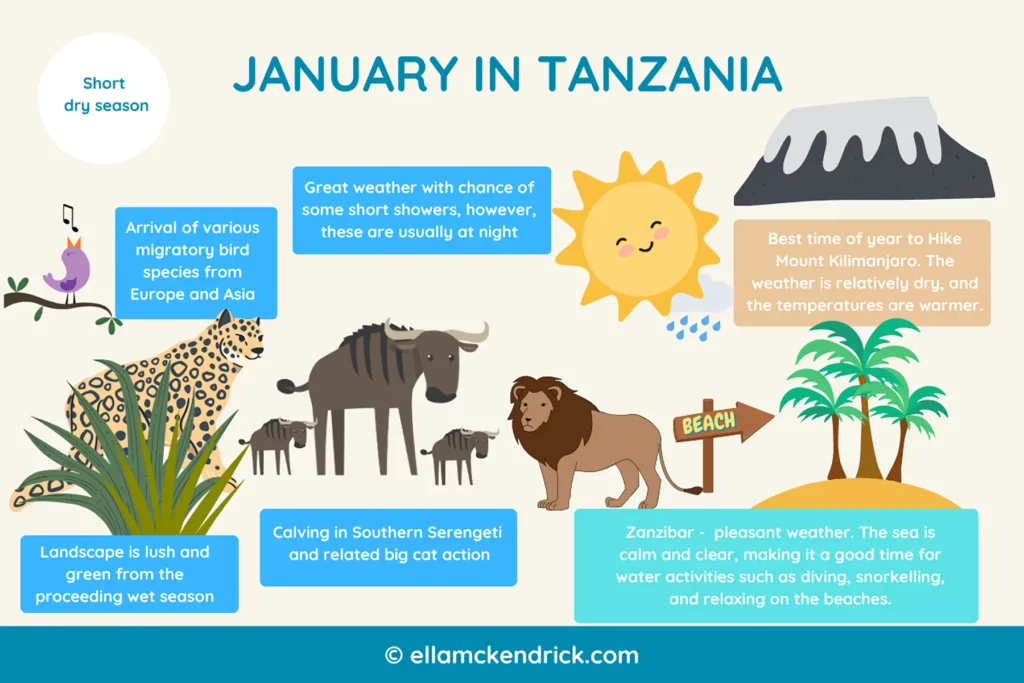
Pros of January in Tanzania
- Parks are less busy and prices are lower compared to peak season
- Weather is warm and the chances of rain are relatively low
- It’s the start of the wildebeest calving season with loads of baby animals being born and related big cat activity.
- Good chances of witnessing a hunt due to abundant baby animals
- Arrival of migratory birds from Europe and Asia, and breeding season for resident bird species
- Great, sunny weather with manageable humidity in Zanzibar
- Black rhinos are easier to spot in Ngorongoro Crater as the fresh, long grass brings them out into the open to graze
Cons of January in Tanzania
- The lush vegetation can make finding animals slightly harder than the long dry season, but with an experienced guide you’ll have plenty of sightings
- Potential for some rains but these are usually quick showers at night
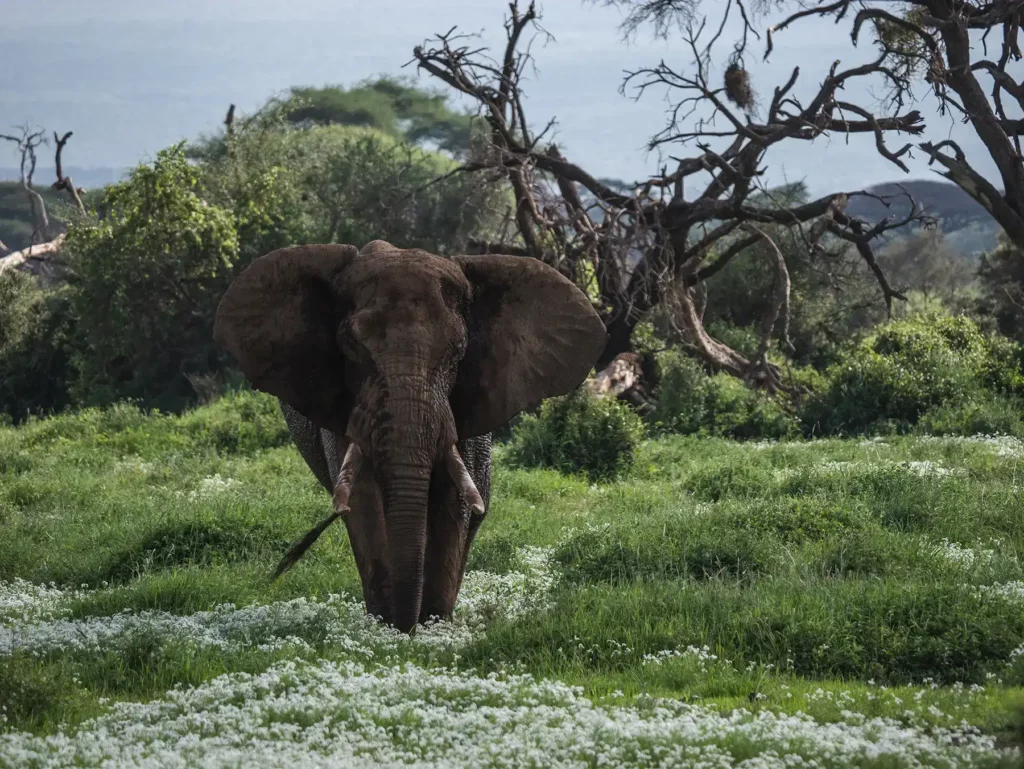
Best Tanzania Parks and Reserves in January
Tanzania’s most popular destinations which are ranked as either excellent or good in January are Serengeti, Ngorongoro Crater, Lake Manyara and Zanzibar.

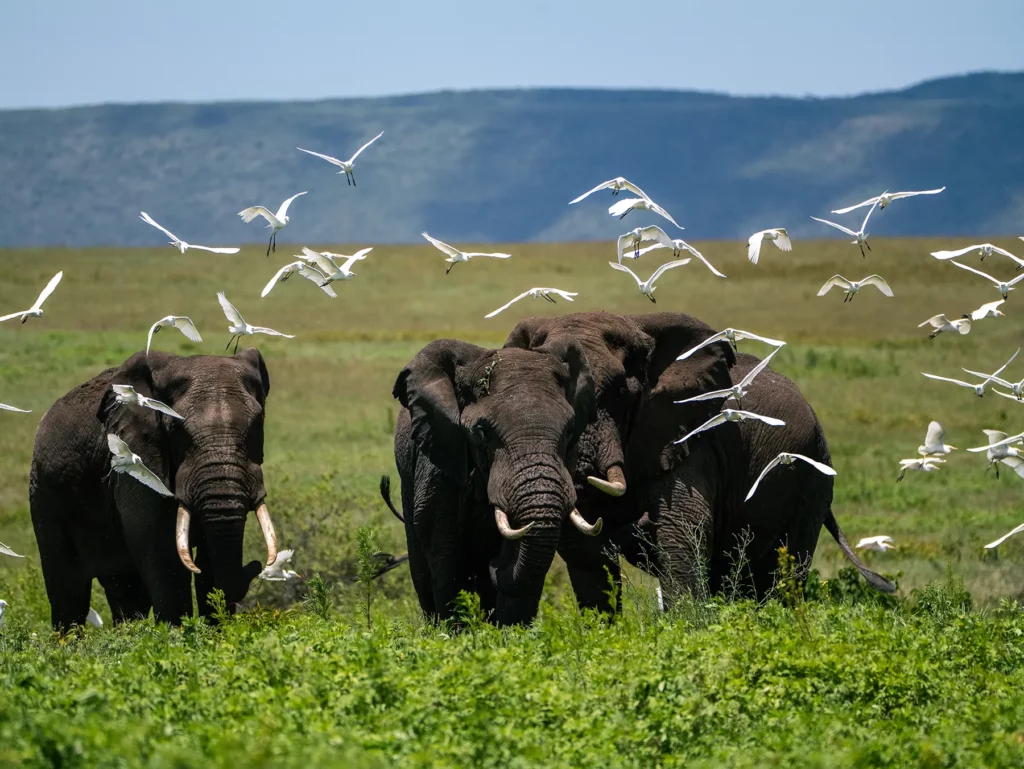
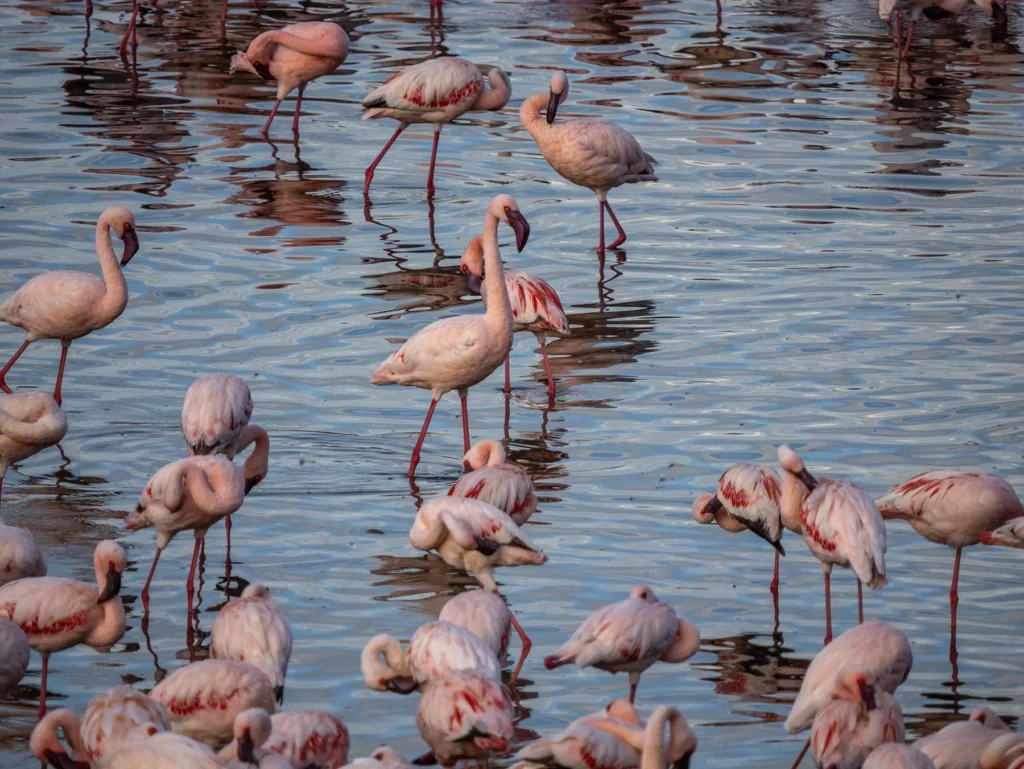
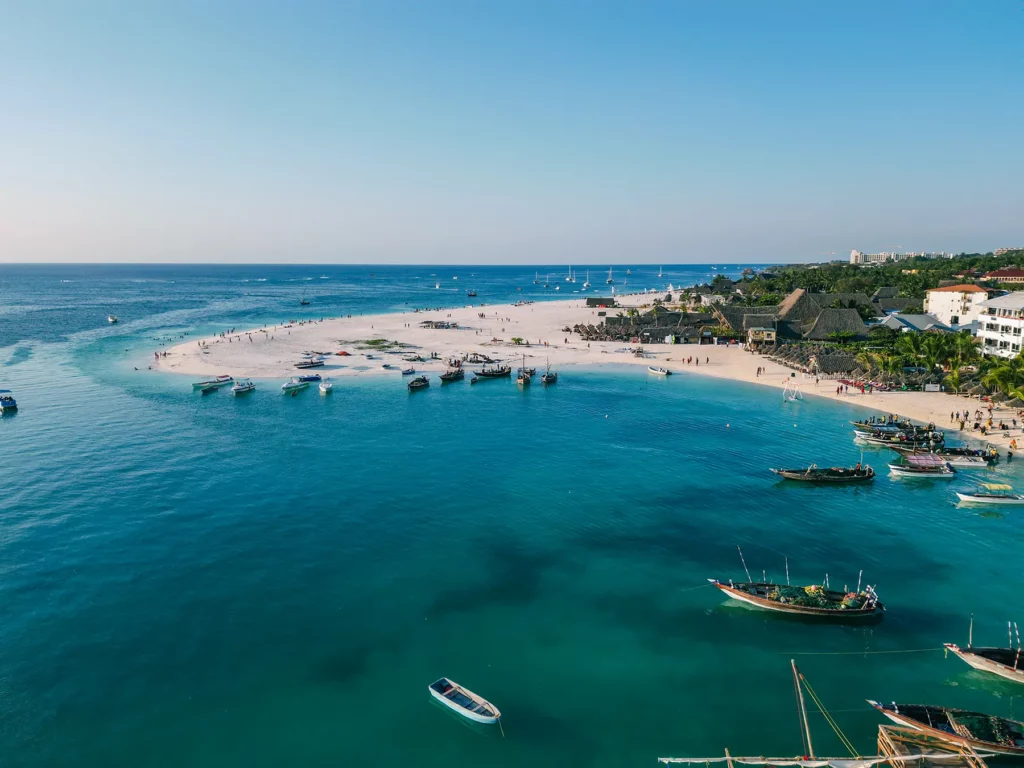
My Personal Experience Visiting Tanzania in January / February
You can watch a video of my personal experience going on a Tanzania safari in January & February below.
Wildlife Viewing in January
Whilst some argue that the denser foliage can make wildlife spotting a little more challenging, I’ve found that with the help of an experienced guide I’ve had just as many great wildlife sightings in January as I’ve had in the long dry season.
How to Book with the Best Local Safari Companies
- Comparison sites which provide multiple quotes from verified suppliers such as Safaris By Ella
Join the rapidly growing tribe of over 1,000 travellers who’ve booked their dream safari using my insider tips and recommendations.

The Great Migration in January
January marks the start of the Great Wildebeest Migration calving season in the southern regions of Serengeti National Park.
During this period over 8,000 baby wildebeest, zebras and other wildlife are born each day, drawing out high numbers of big cats as well as other smaller predators and scavengers. January provides one of the best opportunities to witness these super predators on the hunt.
Millions of herbivores gather to graze on the lush Ndutu Plains in the southern region, conditioning themselves in preparation for their upcoming journey all the way up to the Maasai Mara plains in Kenya.
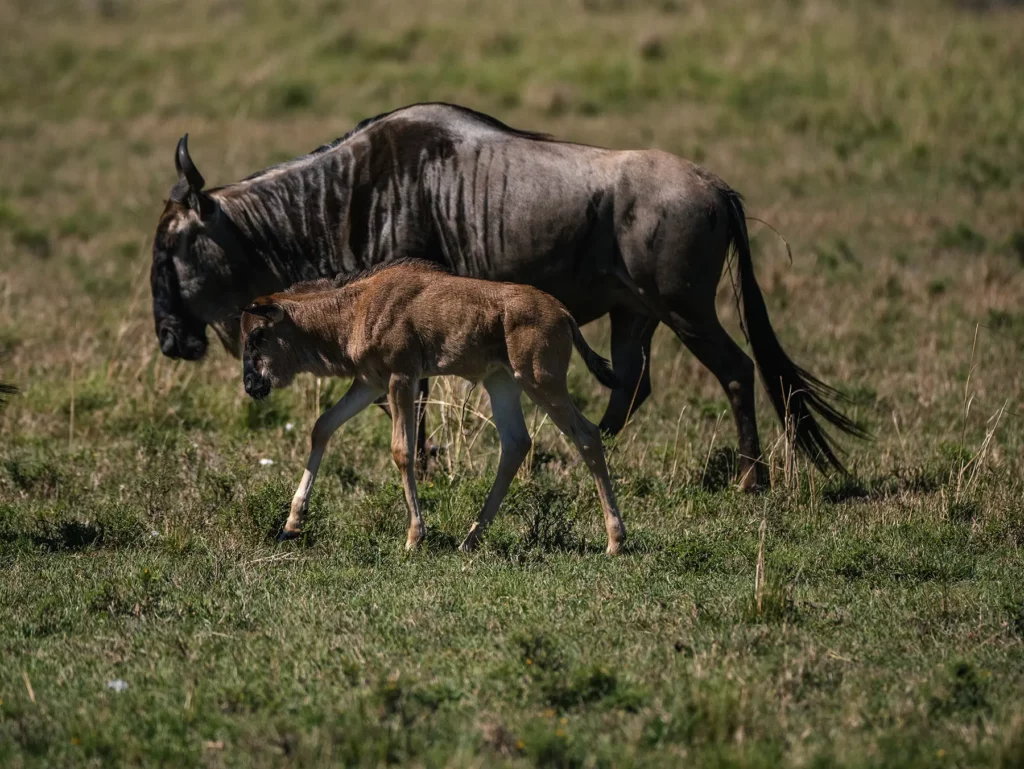
Birdwatching in January
January is prime birdwatching season across Tanzania as it coincides with the arrival of many migratory species from Europe and Asia looking to escape the harsh winters of the northern hemisphere.
This is also breeding time for many resident species, which are in their best plumage, putting up some dazzling courtship rituals to attract their mate. The dense foliage means that you’ll need to keep a careful eye out and have a pair of good binoculars.
Some of the migratory birds you can expect to see include the European Bee-eater, White Stork, Barn Swallow, Yellow Wagtail, Common Sandpiper and Osprey.
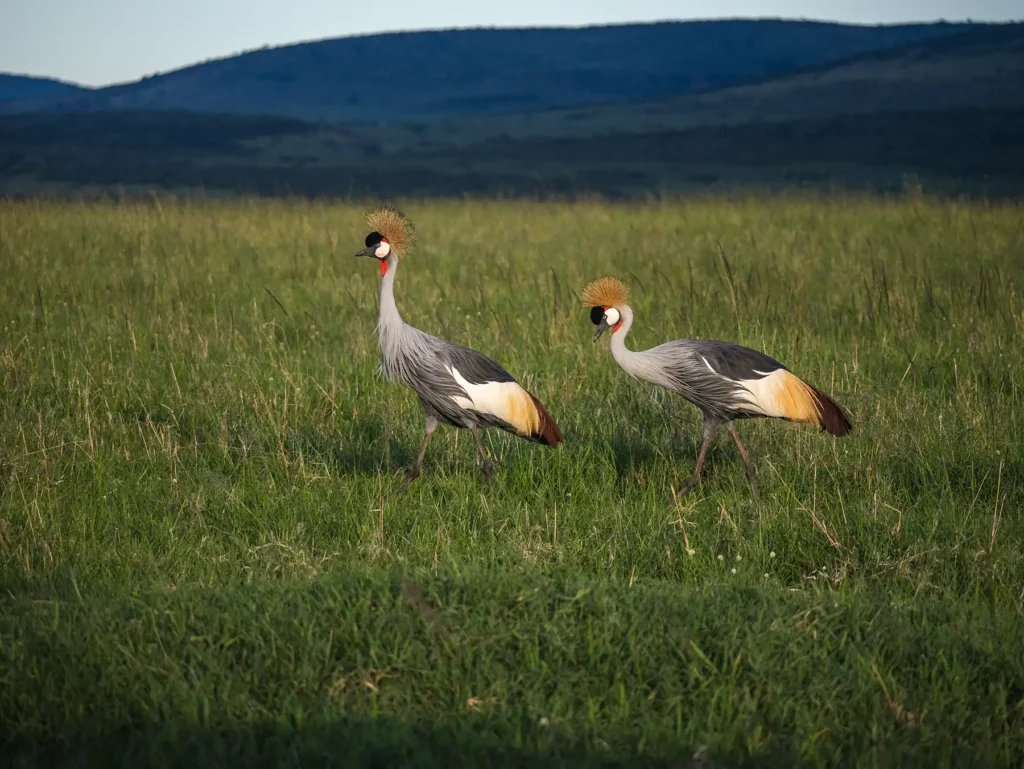
Weather & Temperatures in January
Apart from a few possible late showers, in general the weather is clear, sunny and warm.
Along the coast and on the islands it’s usually warmer, with temperatures reaching a maximum of around 33° C.
In the parks in the western highlands on the northern circuit, the days are a little cooler with the mercury averaging around 30° C during the day and dropping at night.
| Tanzania location | Daytime temperatures | Nighttime temperatures |
|---|---|---|
| Coastal Areas (e.g., Dar es Salaam, Zanzibar): | 28°C to 32°C (82°F to 90°F) | 23°C to 25°C (73°F to 77°F) |
| Northern Safari Circuit (e.g., Arusha, Serengeti, Ngorongoro): | 25°C to 30°C (77°F to 86°F) | 15°C to 20°C (59°F to 68°F) |
| Southern and Western Tanzania (e.g., Selous, Ruaha, Katavi) | 30°C to 35°C (86°F to 95°F) | 20°C to 25°C (68°F to 77°F) |
What are the Costs and How Busy are the Parks in January?
January is regarded as an off-peak season, so accommodation costs are cheaper than at other times of year. It’s an excellent period for visitors who are watching their budgets, especially since the overall safari experience is as good as during the peak season.
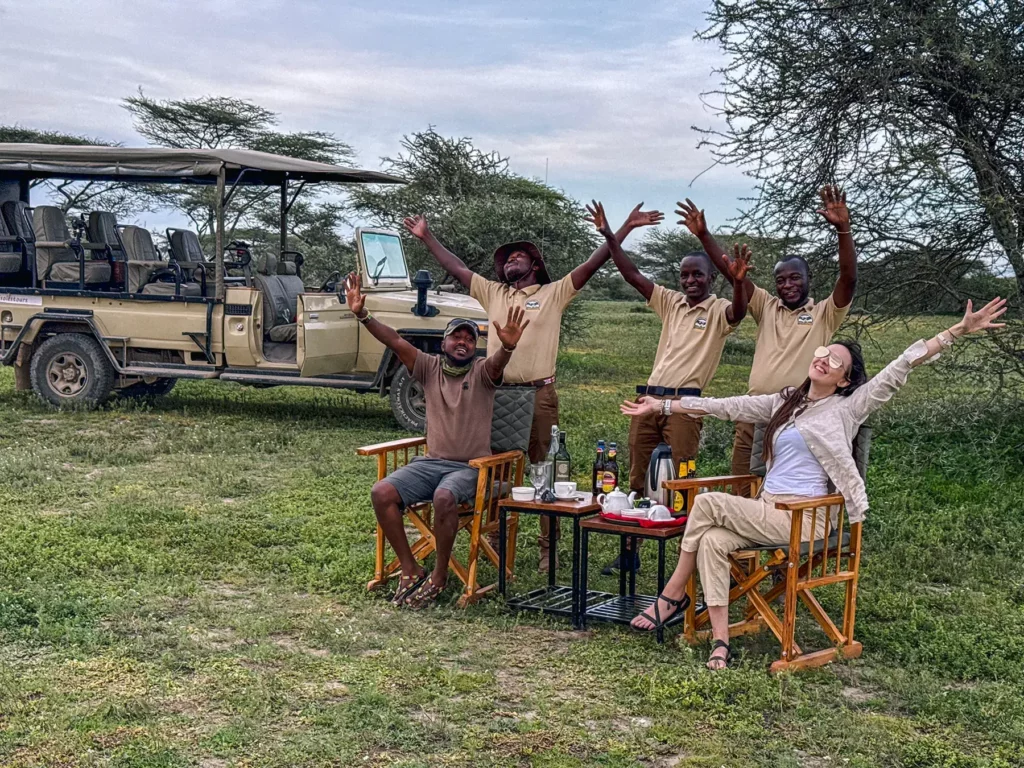
Hiking Kilimanjaro in January
Being the heart of summer, January is a popular time to hike Kilimanjaro.
There is still the possibility of rain, but the weather is usually pleasant and warm, with temperatures dropping quite substantially at higher altitudes.
Regardless of the season, you should always be prepared for sub-zero temperatures near and on the summit.
The skies should be clear in January, providing excellent conditions for photographers.

Zanzibar in January
January is the beginning of the hottest period in Zanzibar and although it can get humid, the cool breeze coming off the ocean makes it very bearable.
Although January is regarded as part of the dry season, there are still often brief rainfalls.
The sea is usually calm and clear in January, with water temperature around a rather warm 28° C – perfect for swimming, snorkelling, scuba diving and all other water sports.
Take a look at my Tanzania in January guide for more in-depth information as well as some recommended January Itineraries.

Save Time and Ensure an Incredible Safari Experience
Get quotes from the local safari companies I use to organise my own trips.
You’ll join the rapidly growing tribe of over 1,000 travellers who’ve booked their dream safari using my insider tips and recommendations.
Jump back to the List of all Months the or return to the Table of Contents.
February in Tanzania
- Good
Season: short dry season
February is a good month for photographers and visitors wanting to see lots of baby animals and related big cat activity. February is usually the best month for seeing the wildebeest calving.
The weather in February is similar to that of January, except it may be slightly hotter with even less chance of rain.
February Ratings Overview
Below are February’s ratings for wildlife, the great wildebeest migration, Zanzibar, busyness, and weather.
- Excellent
- Good
- OK
- Poor
Wildlife
Migration
Zanzibar
Busyness
Weather
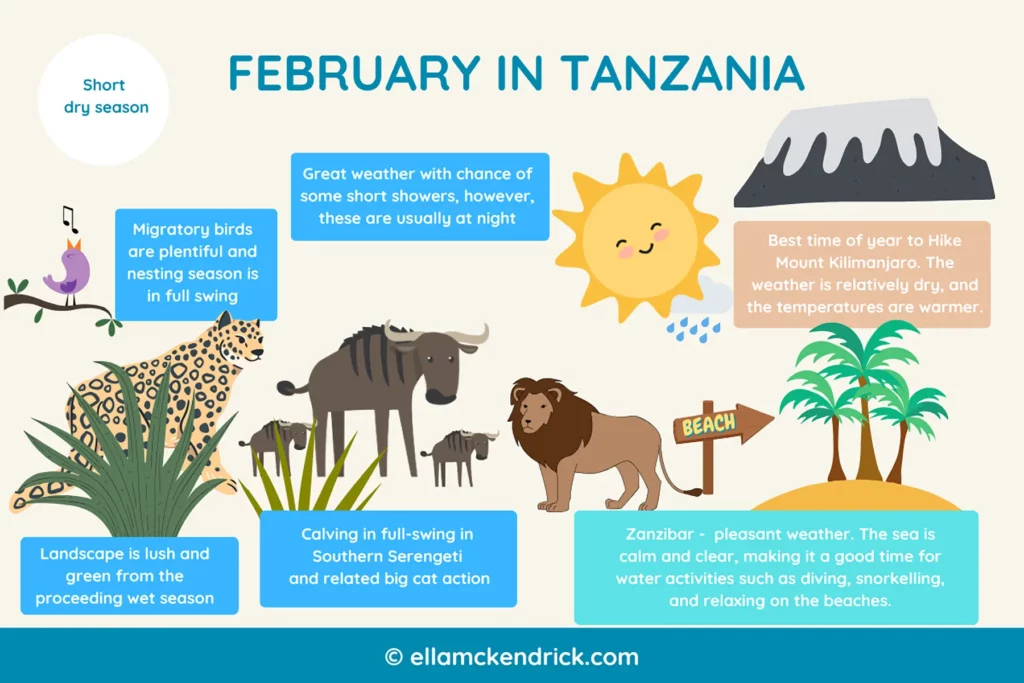
A big advantage of visiting in February rather than January is that the wildebeest calving is usually in full swing, with around 8,000 baby wildebeests being born every single day!
Pros of February in Tanzania
- The calving season is in full swing
- Big cats and other predators follow the herds and at this time of year the chances of witnessing a hunt are high
- Parks are less busy and prices more affordable
- Weather is stable and mostly dry, perfect for spending time in the parks or on the beaches
- Great time for hiking Kilimanjaro
- Migratory birds are plentiful and nesting season is well underway
- Excellent light conditions for game viewing and photography
- Black rhinos are easier to spot in Ngorongoro Crater as the fresh long grass brings them out into the open to graze
Cons of February in Tanzania
- Some lodges may still be closed since this is still the low-season
- Although the vegetation has started to thin out it may still be dense in some areas, making it harder to spot birds and small animals
Best Tanzania Parks and Reserves in February
Below are Tanzania’s most popular destinations which are ranked as either excellent or good in February.




My Personal Experience Visiting Tanzania in January / February
You can watch a video of my personal experience going on a Tanzania safari in January & February below.
Wildlife Viewing in February
February is regarded as part of the “shoulder season”, a period between peak and off-peak seasons. The weather is generally dry and warm, and shorter grasses make for good game viewing conditions.
Game viewing is particularly good on the southern plains of Ndutu, where the calving season and related big cat activity is in full swing.
Ngorongoro Crater offers excellent game viewing year-round. In the crater, black rhinos are easier to spot outside of the long dry season as the fresh long grass brings them out into the open to feed. In the dry season they retreat to the forests, where they are harder to see.
How to Book with the Best Local Safari Companies
- Comparison sites which provide multiple quotes from verified suppliers such as Safaris By Ella
Join the rapidly growing tribe of over 1,000 travellers who’ve booked their dream safari using my insider tips and recommendations.
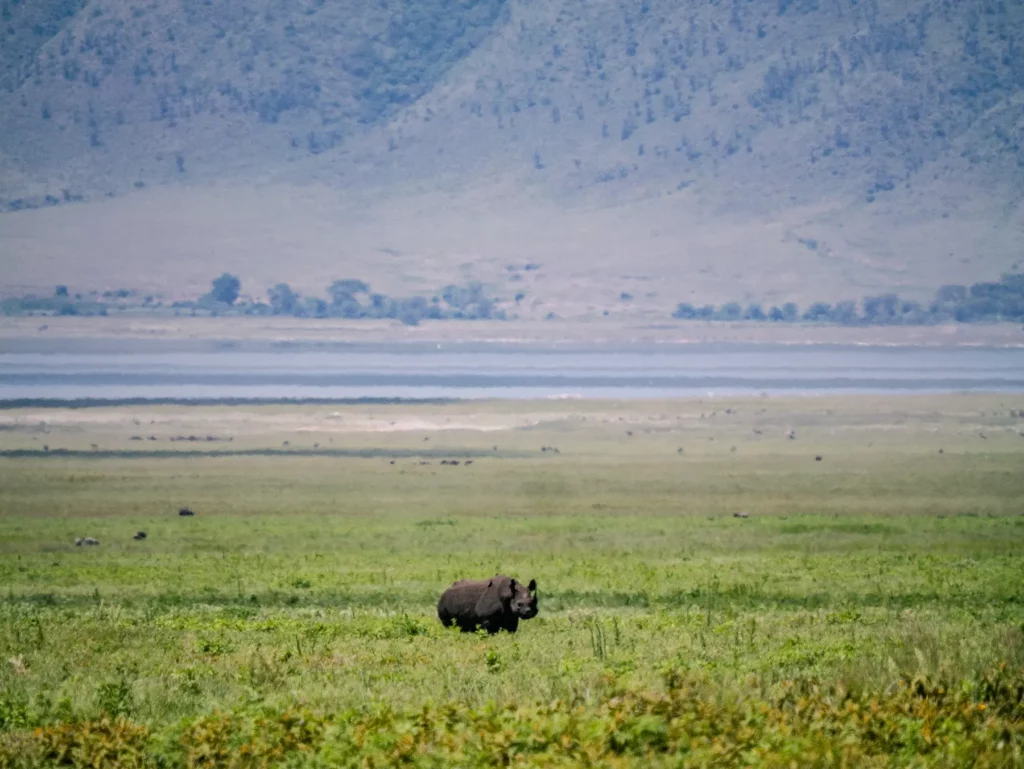
The Great Migration in February
The Great Migration wildebeest calving starts around mid-January and usually continues until mid-March.
Over 500,000 calves are born within the peak calving period of 2–3 weeks, which can vary based on the timings of the rains.
I’d rate February in Tanzania is possibly even better than January, as you have the best chances of seeing wildebeests giving birth. However, because of this, parks will be slightly busier than in January.
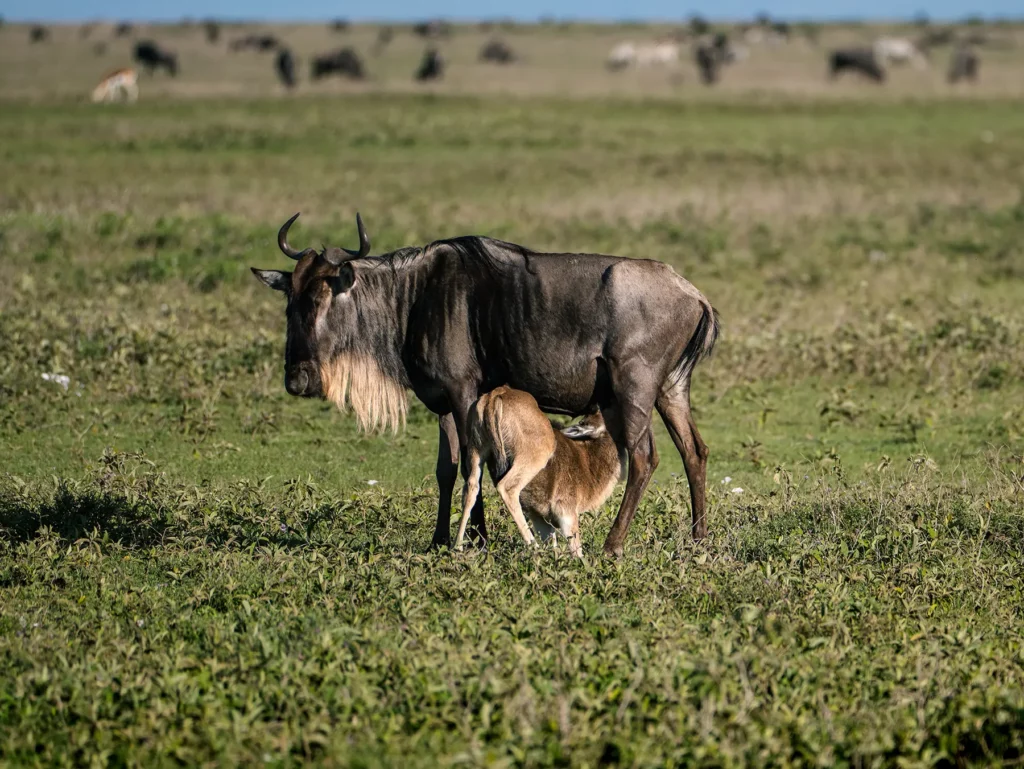
Birdwatching in February
February is in the heart of the bird breeding season, with hundreds of local resident species and migratory species present across the entire Tanzanian landscape.
For photographers, lighting conditions are also at their finest during the heart of summer, although the lush foliage may make it a little harder to spot the birds in some densely wooded areas.
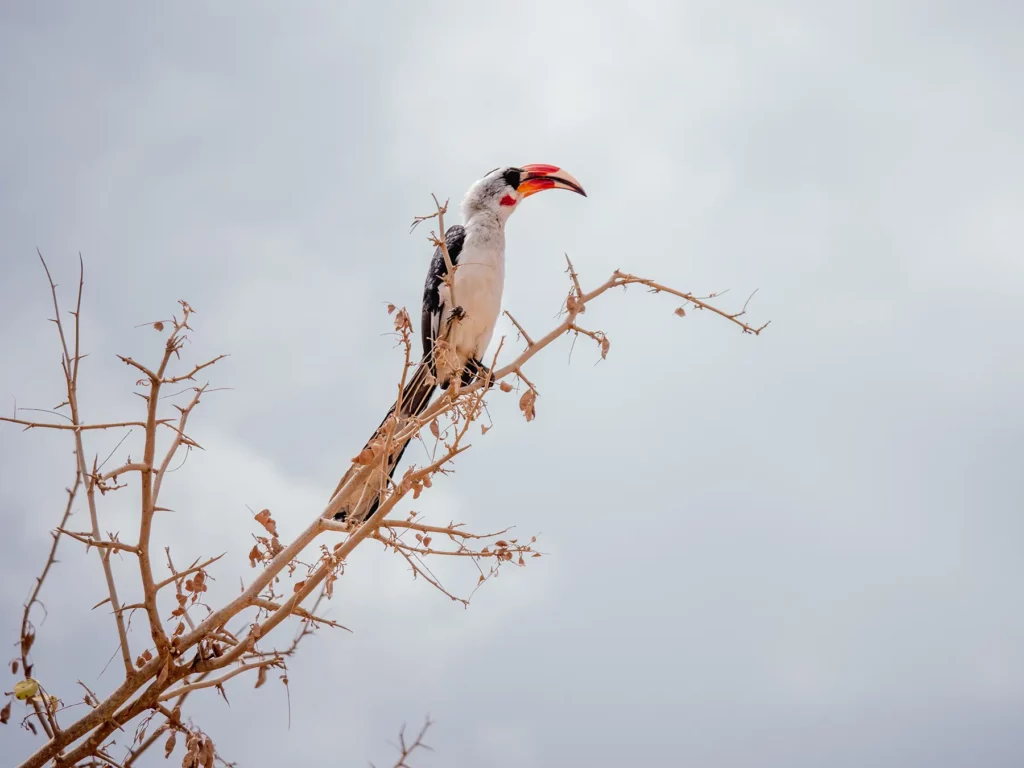
Weather & Temperatures in February
February is usually the hottest month of the year in Tanzania with temperatures reaching the low 30s° C inland in the game parks, and mid to high 30s° C along the coast and islands. There are some chances of light rains, but the showers are typically confined to the afternoons and don’t last long.
| Tanzania location | Daytime temperatures | Nighttime temperatures |
|---|---|---|
| Coastal Areas (e.g., Dar es Salaam, Zanzibar): | 28°C to 32°C (82°F to 90°F) | 23°C to 25°C (73°F to 77°F) |
| Northern Safari Circuit (e.g., Arusha, Serengeti, Ngorongoro): | 25°C to 30°C (77°F to 86°F) | 15°C to 20°C (59°F to 68°F) |
| Southern and Western Tanzania (e.g., Selous, Ruaha, Katavi) | 30°C to 35°C (86°F to 95°F) | 20°C to 25°C (68°F to 77°F) |
What are the Costs and How Busy are the Parks in February?
Some lodges in remote areas may be closed during February, but in general most are open and off-season rates apply. These are far more affordable than high season rates.
The quieter parks during February also make for more pleasurable game viewing.
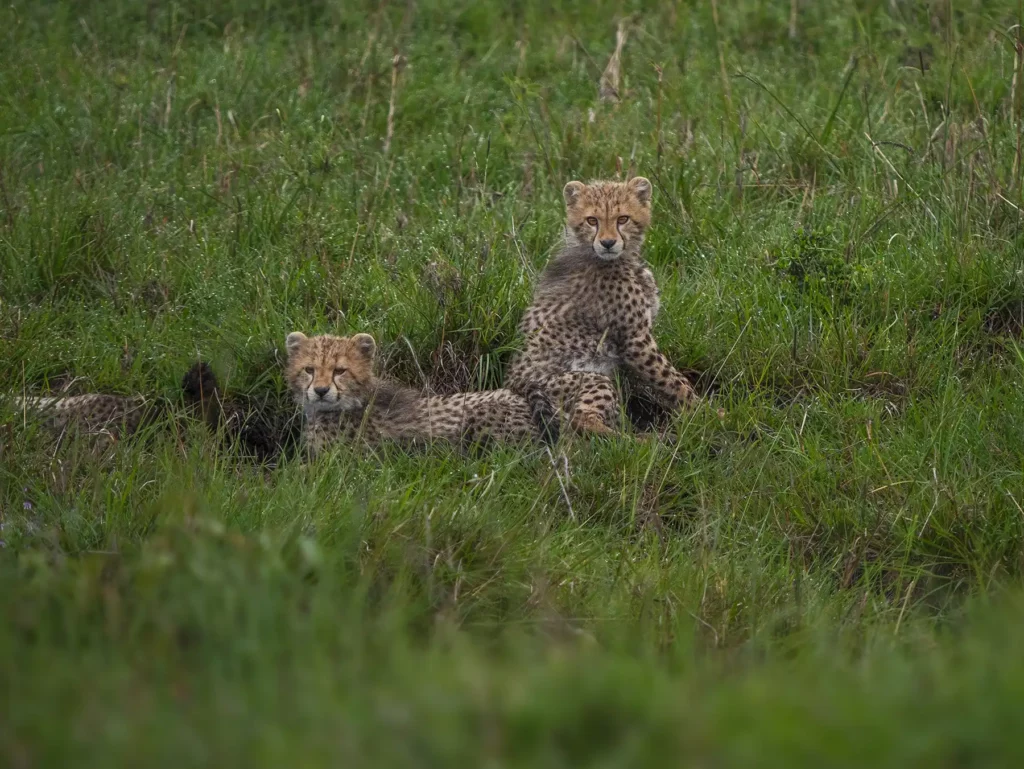
Kilimanjaro in February
For many hiking enthusiasts, February is the best month to hike Kilimanjaro for a number of reasons.
The weather is at its finest with warmer days and nights, less chance of rain and clear skies – perfect for stunning photos.
The weather at higher altitudes, and especially on the snow-capped summit, is mostly cold throughout the year, with sub-zero temperatures being common.
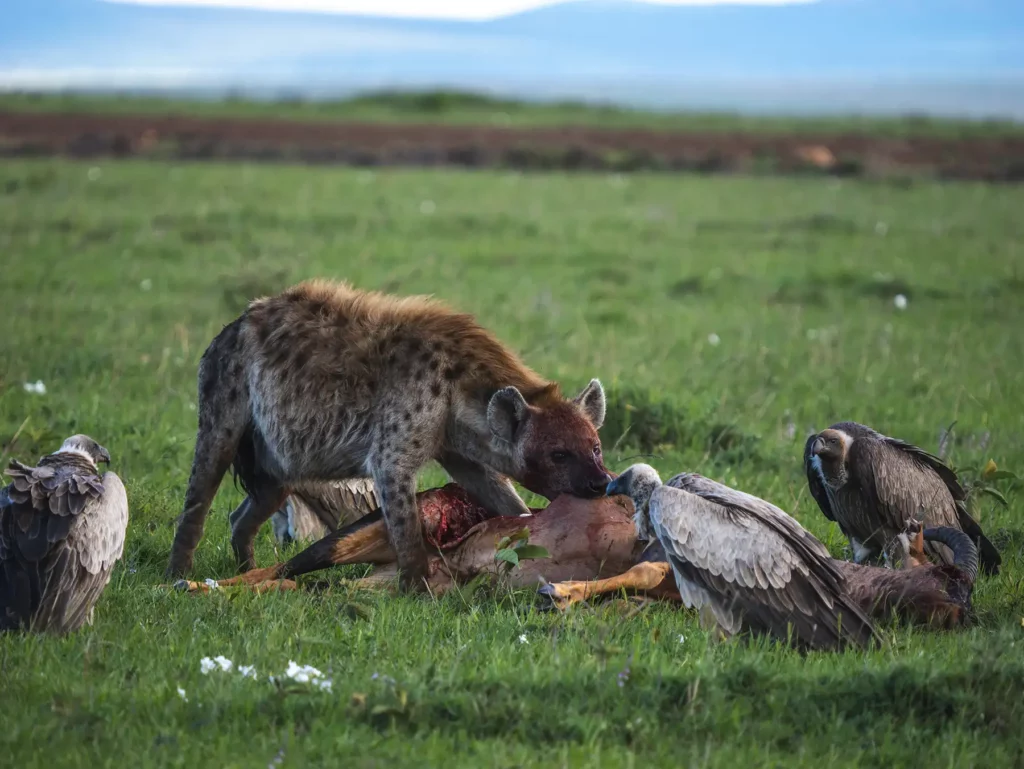
Zanzibar in February
Although the weather is perfect, albeit a little on the warm side, February is still off-peak-season in Zanzibar and accommodation is less expensive compared to peak season.
Days are normally clear with a small chance of some light showers, making it ideal to wander the streets of the historic Stonetown or soak up the sun along its miles of white sandy beaches.
Temperatures can reach into the higher 30s with a humidity level of over 75%, but the gentle, cool ocean breeze makes life more comfortable.
The sea during February is balmy, clear and warm – ideal conditions for a perfect beachside holiday, and perfect for swimming, snorkelling, scuba diving, kayaking and all other water-related activities.
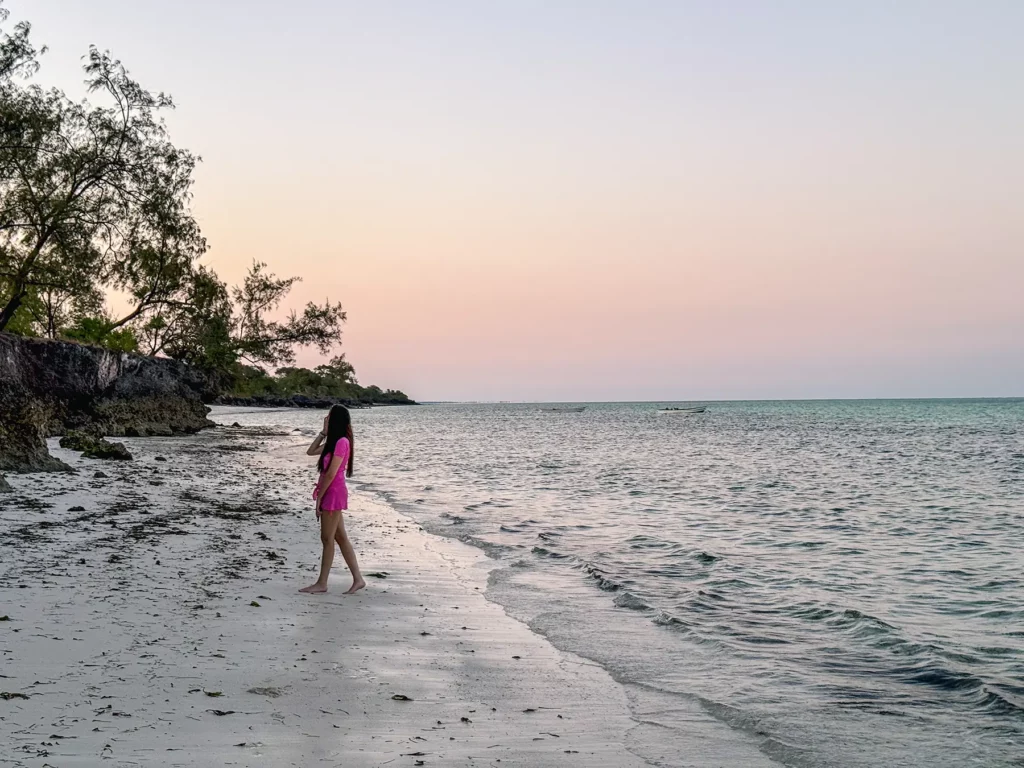
Save Time and Ensure an Incredible Safari Experience
Get quotes from the local safari companies I use to organise my own trips.
You’ll join the rapidly growing tribe of over 1,000 travellers who’ve booked their dream safari using my insider tips and recommendations.
Jump back to the List of all Months the or return to the Table of Contents.
March in Tanzania
- OK
Season: Long rainy season
March is good for bird-lovers, as well as those who want quieter parks and are on a tight budget. It’s important, though, that you don’t mind the possibility of heavy rain.
It’s also a good time for photographers due to the vibrant green landscapes and less safari vehicles to get in the way of your shot.
Whilst I would’t personally recommend Kenya in the long wet season for most travellers, early March and late May are the best options.
March Ratings Overview
Below are March’s ratings for wildlife, the great wildebeest migration, Zanzibar, busyness, and weather.
- Excellent
- Good
- OK
- Poor
Wildlife
Migration
Zanzibar
Busyness
Weather
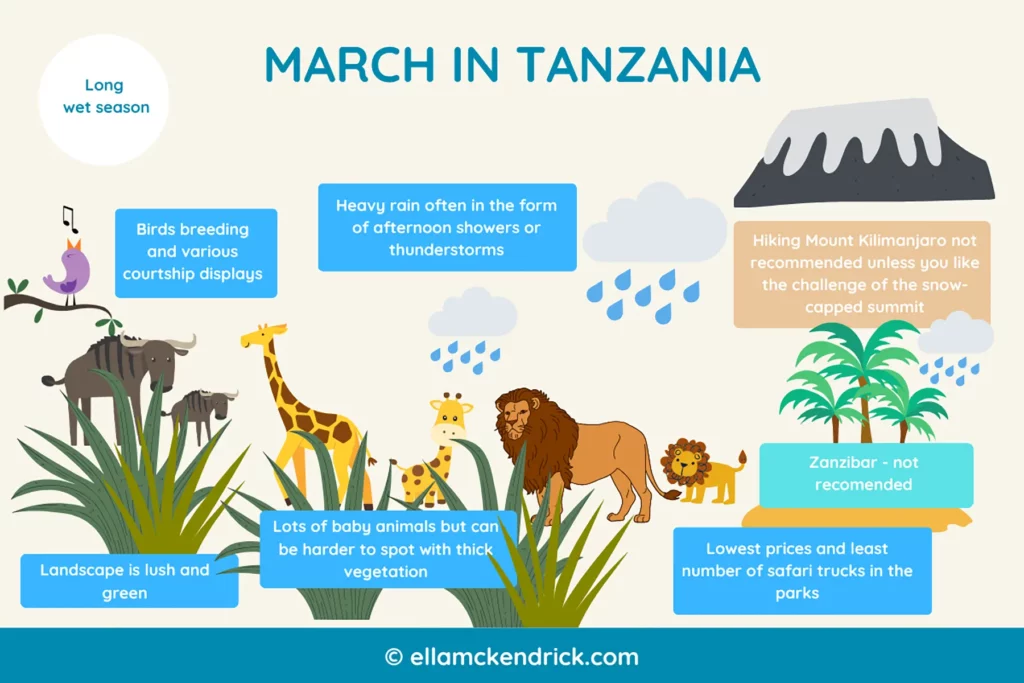
March is the start of the long rainy season in Tanzania, with regular heavy rainfall typically continuing throughout April and May. During this period the lakes, rivers and watering holes fill up and the landscape turns bright green.

Pros of March in Tanzania
- Prices are at their lowest
- Lots of wildlife and young animals to be seen
- Parks are not busy and there are fewer safari trucks on the roads
- Migratory birds are still present, and breeding season and courtship rituals continue well into March
- Black rhinos are easier to spot in Ngorongoro Crater as the fresh long grass brings them out into the open to graze
Cons of March in Tanzania
- Plenty of heavy rain, with high temperatures and high humidity
- Many mosquitos with the risk of malaria at its highest
- Heavy showers and thunderstorms cause flooding in some parks
- Some parks in the southern regions close for the duration of the long rainy season
- Hiking Kilimanjaro becomes increasingly difficult
- Zanzibar is not recommended and many hotels temporarily close
Best Tanzania Parks and Reserves in March
Below are Tanzania’s most popular destinations which are ranked as either excellent or good in March.

Wildlife Viewing in March
Wildlife viewing remains excellent and there are many young animals around, which attracts big cats and smaller predators. This makes for exciting viewing of hunts and kills. Dense vegetation and heavy rains can affect visibility.
How to Book with the Best Local Safari Companies
- Comparison sites which provide multiple quotes from verified suppliers such as Safaris By Ella
Join the rapidly growing tribe of over 1,000 travellers who’ve booked their dream safari using my insider tips and recommendations.
The Great Migration in March
The Great Migration is on the Ndutu plains, with millions zebras and wildebeest with calves building up their reserves on the fertile Ndutu grasses for their upcoming journey along the eastern corridor to the Maasai Mara.
Birdwatching in March
Birdwatching is relatively good during March, with most European and Asian migratory species still hanging around and resident species often seen fluttering in and out of their nests in the trees taking care of their young.
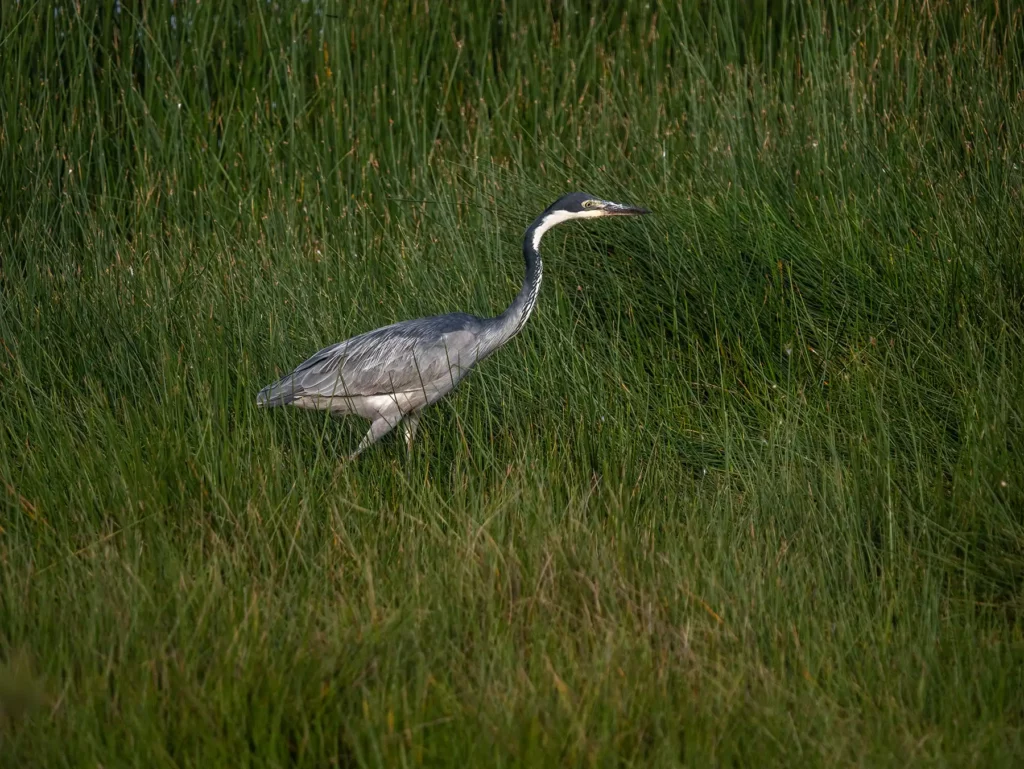
Weather & Temperatures in March
Temperatures in March often remain as high as in February. Combined with the heavy rains, this results in high levels of humidity that can be quite uncomfortable.
The rains are more frequent and heavier than in any other part of the year, and the weather is not ideal for safaris or for beach holidays along the coast or the islands.
Flooding is possible at some national parks.
It’s worth noting that in recent years predicting the rains at this time of year has become extremely challenging. Our changing climate means that some years the rains don’t come at all. In those years, March is as good a time as any to be in Tanzania, but it is impossible to know in advance if this will happen.
Some years, such as 2024, the rains pour at an alarmingly high rate and cause flooding and landslides. Over 150 people were killed in the 2024 floods. Based on this unpredictability, I would avoid visiting at this time of year.
If you decide you want to brave a visit in March, I’d recommend opting for early March if possible, as this may increase your chances of having better weather.
| Tanzania location | Daytime temperatures | Nighttime temperatures |
|---|---|---|
| Coastal Areas (e.g., Dar es Salaam, Zanzibar): | 28°C to 30°C (82°F to 86°F) | 22°C to 24°C (72°F to 75°F) |
| Northern Safari Circuit (e.g., Arusha, Serengeti, Ngorongoro): | 25°C to 28°C (77°F to 82°F) | 15°C to 18°C (59°F to 64°F) |
| Southern and Western Tanzania (e.g., Selous, Ruaha, Katavi) | 28°C to 32°C (82°F to 90°F) | 20°C to 23°C (68°F to 73°F) |
What are the Costs and How Busy are the Parks in March?
Parks are very quiet at this time of year.
Costs are at their lowest as the hotels and lodges are less busy than during any other time of year. Some lodges close altogether during the long rainy season though especially in the parks in Southern Tanzania.
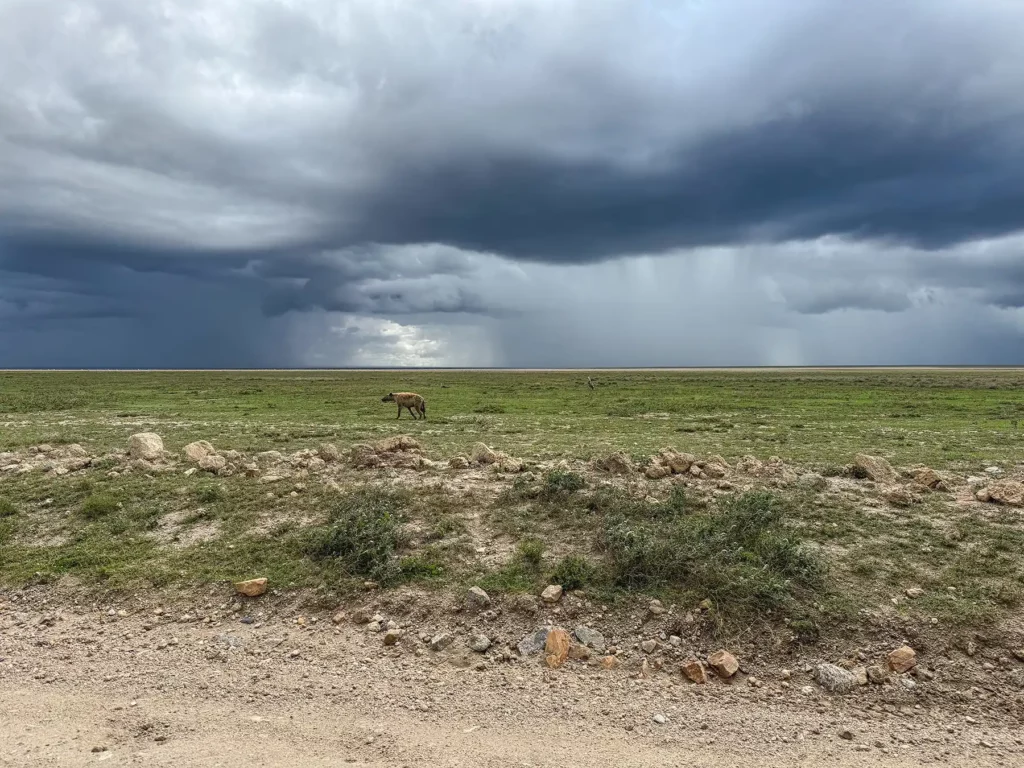
Kilimanjaro in March
Hiking Kilimanjaro in March is risky as the arrival of the rains affects conditions on the mountain significantly. Temperatures drop and heavier snowfall is likely at and near the summit. Some experienced hikers like the challenge of summiting the heavily snowed peak, but for most people this is not ideal. The later in the long rainy season you travel the more chance there is of heavier rain and snow.
Zanzibar in March
March is not the ideal time to visit Zanzibar, as the onset of the rains and increased humidity can detract from what would otherwise be an excellent beach holiday.
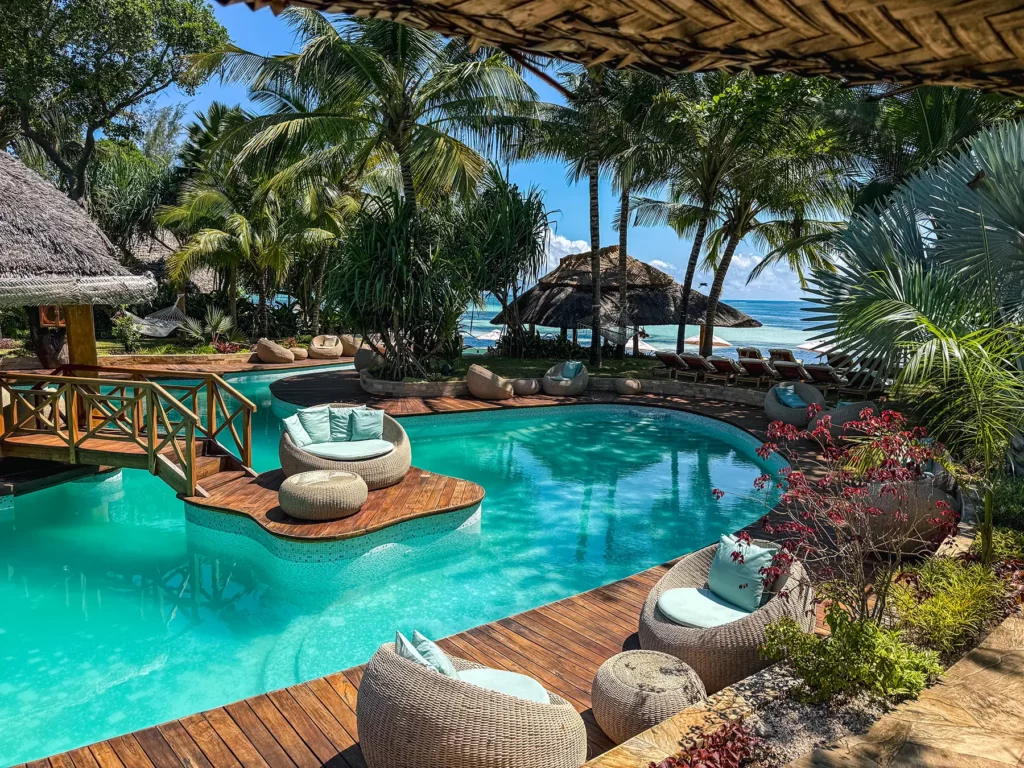
Save Time and Ensure an Incredible Safari Experience
Get quotes from the local safari companies I use to organise my own trips.
You’ll join the rapidly growing tribe of over 1,000 travellers who’ve booked their dream safari using my insider tips and recommendations.
Jump back to the List of all Months the or return to the Table of Contents.
April in Tanzania
- OK
Season: Long rainy season
April is good for bird-lovers, as well as those who want quieter parks and are on a tight budget. It’s important, though, that you don’t mind the possibility of heavy rain.
April typically has the worst weather of the year, peaking the long‐rain season with about 280 mm of rain over ~18 rainy days compared to March’s ~150 mm/11 days and May’s ~190 mm/13 days.
April Ratings Overview
Below are March’s ratings for wildlife, the great wildebeest migration, Zanzibar, busyness, and weather.
- Excellent
- Good
- OK
- Poor
Wildlife
Migration
Zanzibar
Busyness
Weather
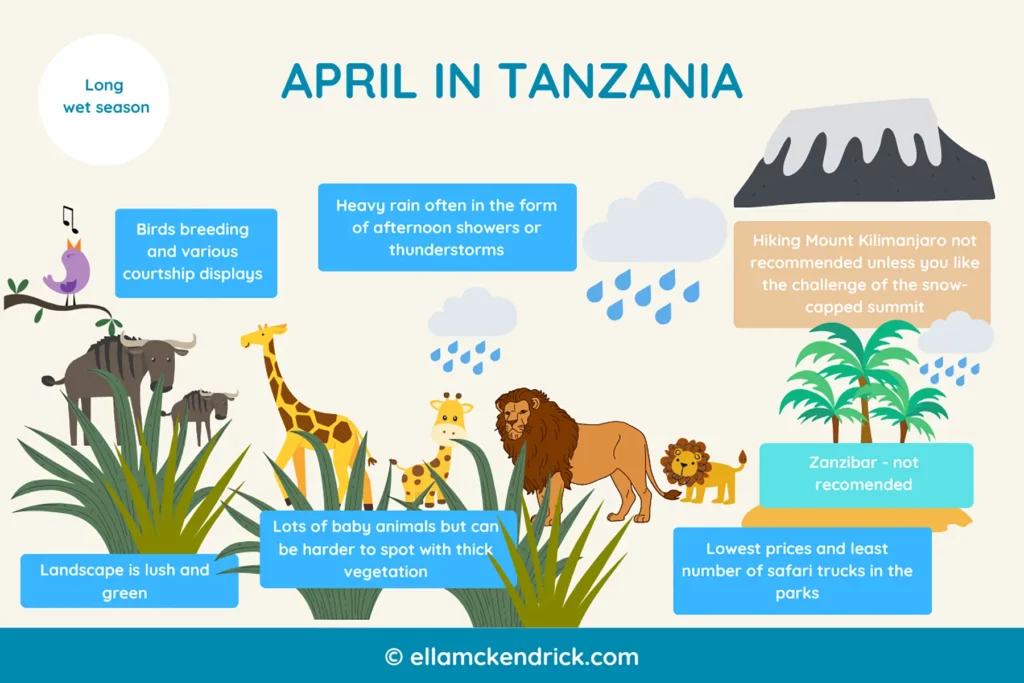
April is in the middle of the wet season so you can expect rain virtually every day.
During April there is a risk of flooding.

Pros of April in Tanzania
- Parks are at their quietest and least expensive
- Wildlife remains abundant with still lots of baby animals and big cat activity
- Birdlife is still good with many late courtship rituals still going on
- Migratory birds are gathering to prepare for their long journeys back to Europe and Asia
- Black rhinos are easier to spot in Ngorongoro Crater as the fresh long grass brings them out into the open to graze
Cons of April in Tanzania
- Many parks throughout the country are closed
- Heavy downpours make game viewing difficult
- Uncomfortably warm temperatures and high humidity
- More mosquitos and higher risk of malaria
- Flooding occurs in many parks
- Kilimanjaro conditions are at their worst and very challenging
- Zanzibar is not recommended
Best Tanzania Parks and Reserves in April
Below are Tanzania’s most popular destinations which are ranked as either excellent or good in April.

Wildlife Viewing in April
Herbivores thrive on the fresh growth, and calving continues for species like wildebeest (this peaks in February and March but extends into April). Related predator activity is high.
Game viewing during the rainy season can be more challenging due to the heavy downpours, although the wildlife remains plentiful throughout all the parks. The lush foliage and large volumes of water on the plains makes spotting game quite difficult. However, crocodiles and hippos are at their happiest.
For serious photographers, the rains provide opportunities not normally found during the dry months. Capturing a pride of lions, or herds of elephants, wildebeest, zebra and buffaloes grazing on the plains with dark menacing clouds looming in the background is priceless.
April is often wet and muddy, making travel more difficult.
How to Book with the Best Local Safari Companies
- Comparison sites which provide multiple quotes from verified suppliers such as Safaris By Ella
Join the rapidly growing tribe of over 1,000 travellers who’ve booked their dream safari using my insider tips and recommendations.
The Great Migration in April
The Great Migration is typically in the central and western Serengeti in Tanzania in April. The herds begin moving northwest from the southern Serengeti/Ndutu area, where calving takes place in January, February and March. They pass through areas like Seronera and head toward the Grumeti region by May.
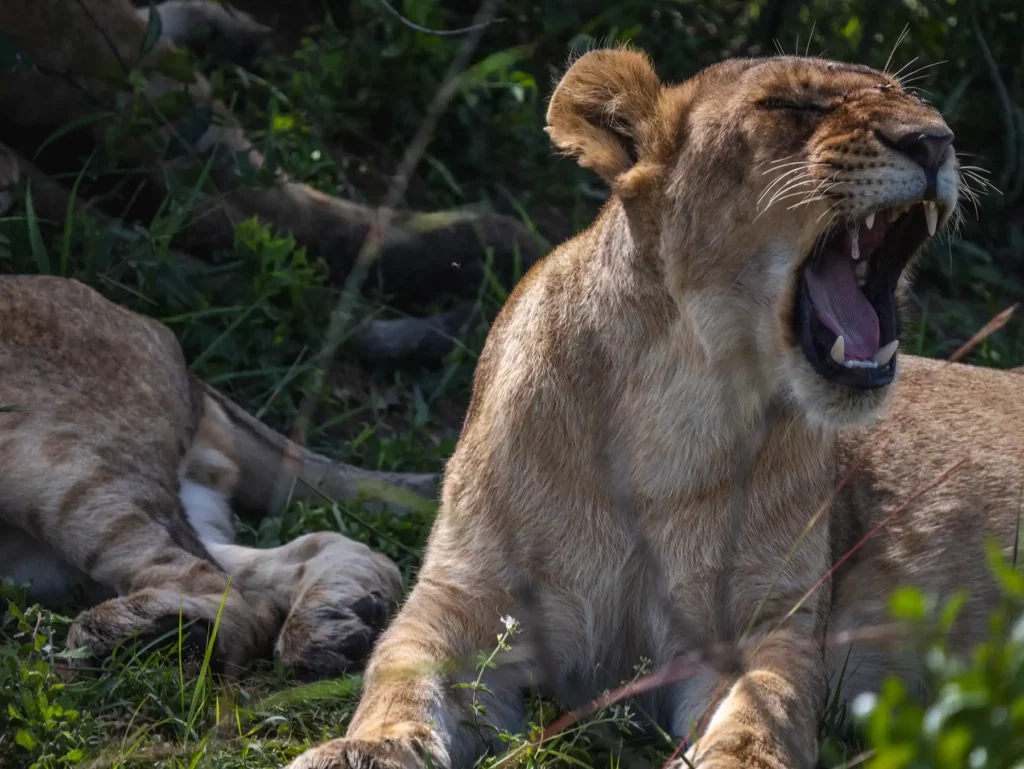
Birdwatching in April
For birders, April remains a good time to visit the parks as the migratory birds are gathering in anticipation of their return journeys back to Europe and Asia. Resident species are still in nesting and courting mode, displaying their brightest plumages.
Keen eyes and strong binoculars are needed to view some of the smaller species, which are perfectly camouflaged in the dense green vegetation.
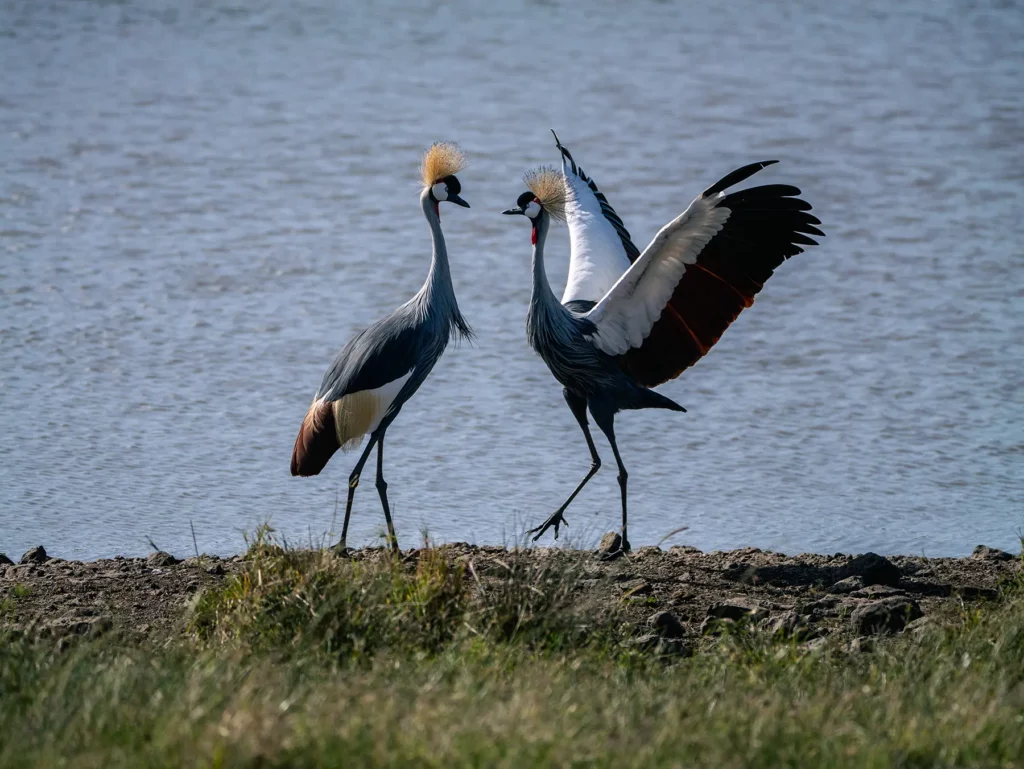
Weather & Temperatures in April
April is usually the wettest month of the year. Temperatures reach around the 30° C mark with high humidity, making life rather unpleasant, particularly on the coast and islands.
Rains usually come in the form of heavy afternoon thunderstorms, lasting for several hours.
Daily downpours are heavy and intense, usually in the afternoons, but it seldom rains for the whole day, so you could still, in theory, fit in game drives.
| Tanzania location | Daytime temperatures | Nighttime temperatures |
|---|---|---|
| Coastal Areas (e.g., Dar es Salaam, Zanzibar): | 28°C to 30°C (82°F to 86°F) | 22°C to 24°C (72°F to 75°F) |
| Northern Safari Circuit (e.g., Arusha, Serengeti, Ngorongoro): | 25°C to 28°C (77°F to 82°F) | 15°C to 18°C (59°F to 64°F) |
| Southern and Western Tanzania (e.g., Selous, Ruaha, Katavi) | 28°C to 32°C (82°F to 90°F) | 20°C to 23°C (68°F to 73°F) |
What are the Costs and How Busy are the Parks in April?
If you’re on a tight budget and prepared to put up with the adverse weather conditions, April is the cheapest month to visit Tanzania. The parks and beaches are at their quietest, and only a few diehards are trudging up Kilimanjaro.
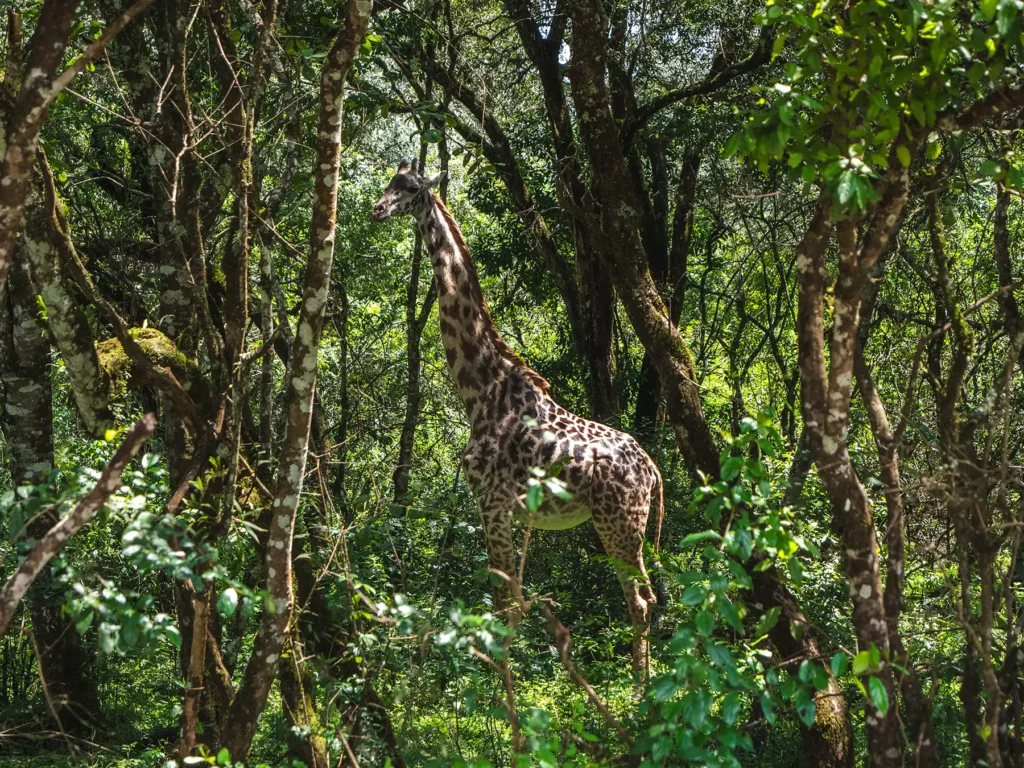
Kilimanjaro in April
Apart from the quiet trails and campsites on the mountain, there are not too many advantages to hiking Kili in April.
Heavy rainfall means slippery trails, loads of mud and extra cold temperatures on the higher elevations and summit. Cloudy conditions also prevent the stunning panoramic photographs hikers expect to take on their hikes on Kilimanjaro.
But for those seeking a more challenging hike, April may be a good time to climb Africa’s highest peak. That’s why tour companies still conduct hiking tours on Kili during the wettest period of the year.
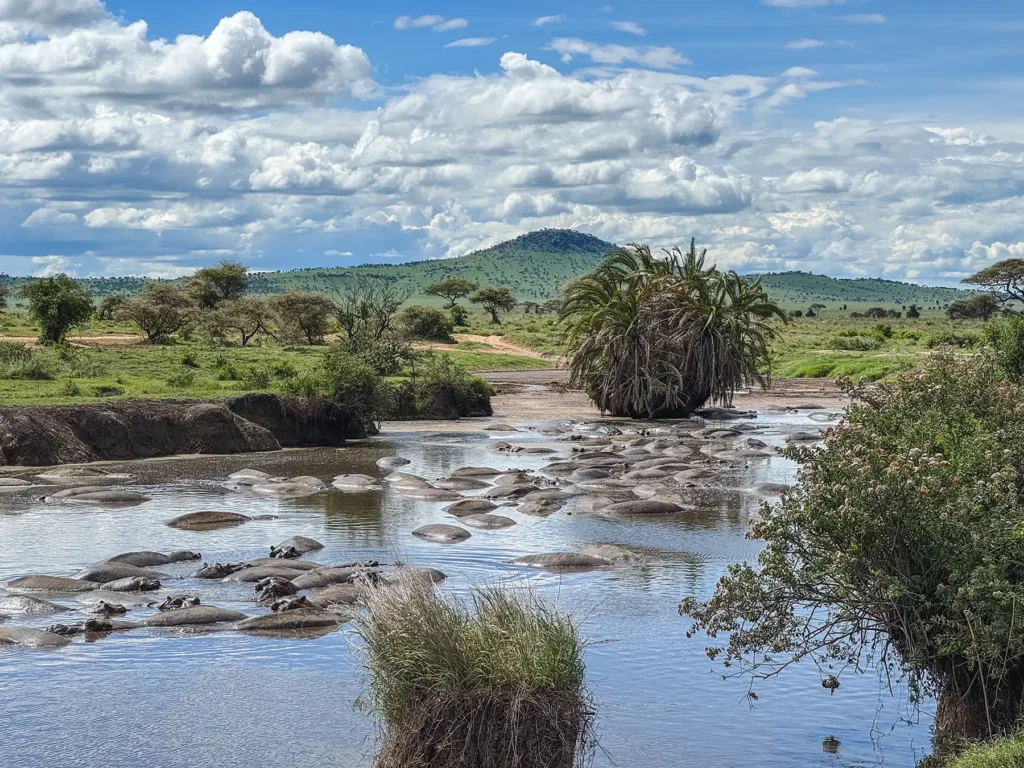
Zanzibar in April
The high rainfall, humidity, mosquito activity and risk of malaria, ensure that the beaches of Zanzibar are pretty empty during April. In fact, some hotels and lodges close over the wet period. Low accommodation prices and quieter streets and beaches are perhaps the only advantages of visiting Zanzibar in April.
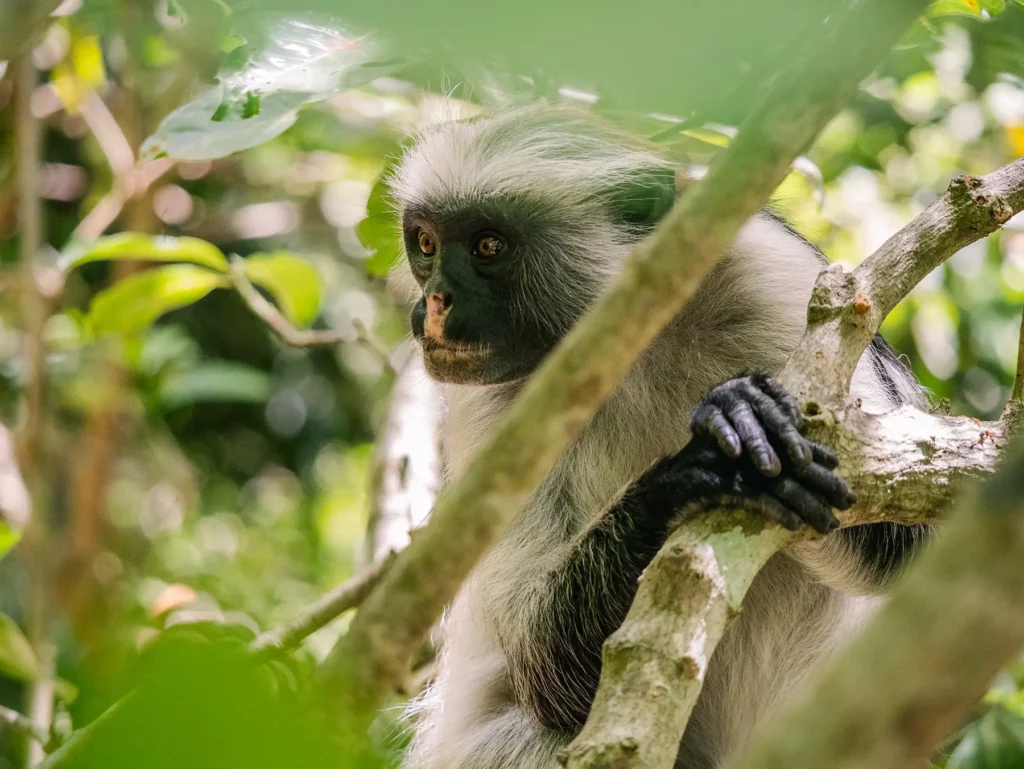
Save Time and Ensure an Incredible Safari Experience
Get quotes from the local safari companies I use to organise my own trips.
You’ll join the rapidly growing tribe of over 1,000 travellers who’ve booked their dream safari using my insider tips and recommendations.
Jump back to the List of all Months the or return to the Table of Contents.
May in Tanzania
- OK
Season: Long rainy season
May is good for bird-lovers, as well as those who want quieter parks and are on a tight budget. It’s important, though, that you don’t mind the possibility of heavy rain.
It’s a good time for photographers due to the vibrant green landscapes and the unlikelihood of tourists in getting in the way of your shot.
Whilst I would’t personally recommend Kenya in the long wet season for most travellers, early March and late May are the best options.
May Ratings Overview
Below are May’s ratings for wildlife, the great wildebeest migration, Zanzibar, busyness, and weather.
- Excellent
- Good
- OK
- Poor
Wildlife
Migration
Zanzibar
Busyness
Weather
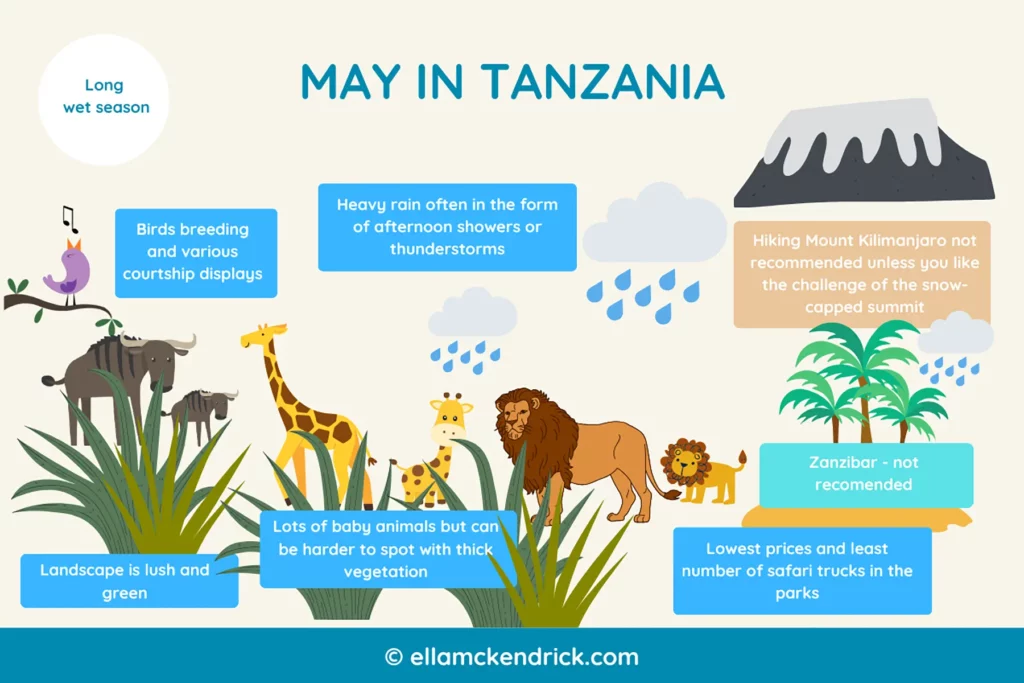
The heavy rains continue through early and mid-May, and begin to taper off during the latter part of the month. This breathes new life into the tourism industry in Tanzania and game parks and beaches begin to open up once again.
By now, the landscapes in the game parks have greened up beautifully, providing much food for the wildlife across the entire country. Sunny spells become more frequent, although cloudbursts still persist, but usually only in the afternoons.
May can be a great time for visitors to start venturing out on safaris, but rain jackets must be carried at all times as downpours can still appear out of nowhere.
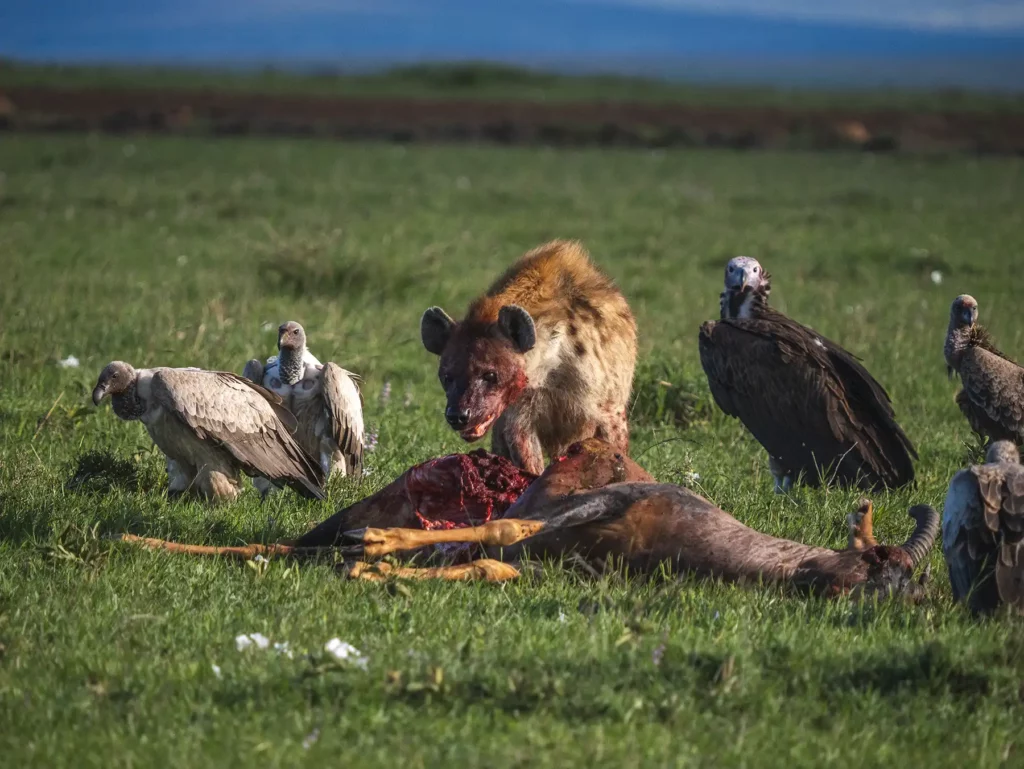
Pros of May in Tanzania
- Landscape is lush and green, perfect for stunning photography in the parks
- Temperatures and humidity have started to drop making conditions more comfortable
- Parks are less busy than during the next few months
- Lodges within the Serengeti offer lower rates
- Birders can witness huge flocks departing for Europe and Asia
- Black rhinos are easier to spot in Ngorongoro Crater as the fresh long grass brings them out into the open to graze
- The wildebeest mating season takes places towards the end of May and male wildebeest can be seen butting heads as they challenge one another for mating rights
Cons of May in Tanzania
- Afternoon showers may spoil game viewing
- Lush vegetation may make spotting certain animals harder
- Numerous water sources as a result of the rains mean that animals are scattered and harder to find
- There is still a reasonable risk of flooding in May
Best Tanzania Parks and Reserves in May
Below are Tanzania’s most popular destinations which are ranked as either excellent or good in May.


Wildlife Viewing in May
There is abundant wildlife in Tanzania in May, especially in the Western and Central Serengeti through which the Great Migration passes. While early May can still be wet from the tail end of the long rains, late May can offer better viewing conditions and fewer tourists. Wildlife can be harder to spot due to thick vegetation and beng more spread out compared to the long dry season.
How to Book with the Best Local Safari Companies
- Comparison sites which provide multiple quotes from verified suppliers such as Safaris By Ella
Join the rapidly growing tribe of over 1,000 travellers who’ve booked their dream safari using my insider tips and recommendations.
The Great Migration in May
In May, the Great Migration moves from the Southern to the Central and Western Serengeti, heading toward the Grumeti River. Large herds of wildebeest and zebra can be seen grazing on the green plains, often accompanied by predators.
Normally, by mid-May the rains slow down, drying out the landscape in the south. The adult wildebeest and zebras are well-fed and in good nick, the youngsters are strong enough to keep up with their mums, and it’s time to go. Their destination is the greener pastures in the north across the infamous Mara River, and into the plains of Maasai Mara National Park in southern Kenya.
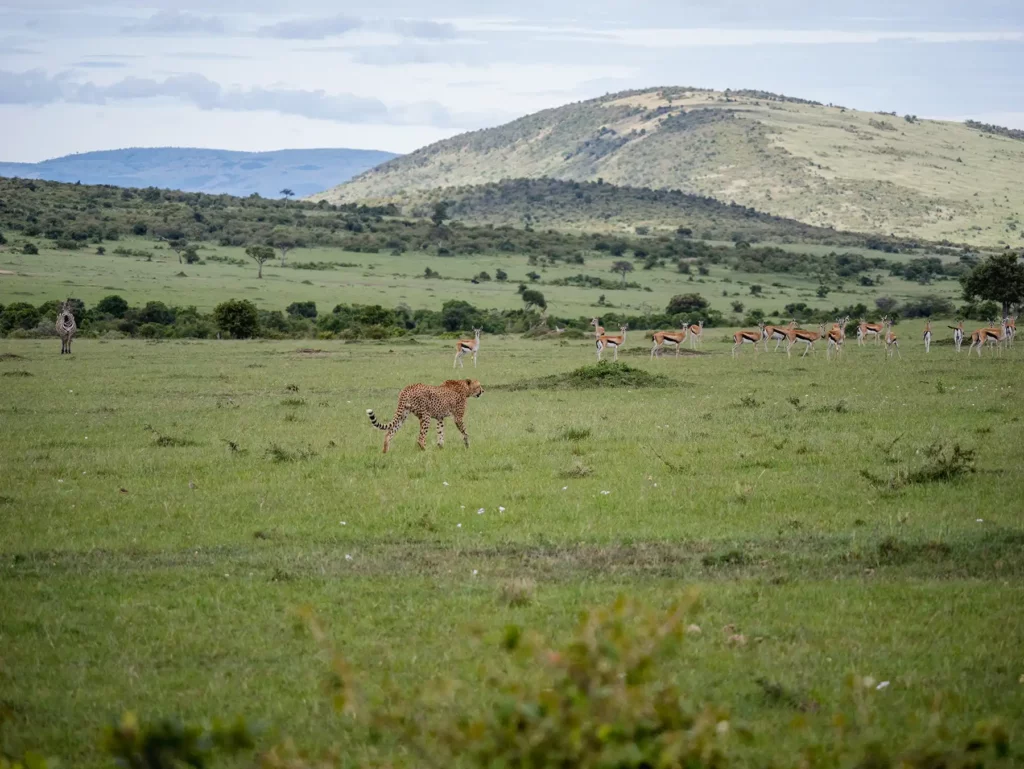
Birdwatching in May
Although the northern hemisphere migrants start to depart during May, there are still over 500 species of resident bird species spread throughout the entire ecosystem. This makes Tanzania an all year round bird watcher’s paradise.
The nesting and courting rituals are nearly over and for many birds it’s back to business as usual.
Among the resident species you may find giant ostriches, secretary birds, caribou storks, fish eagles, black eagles, hornbills, tons of water fowl and of course massive colonies of flamingos wherever there is water.
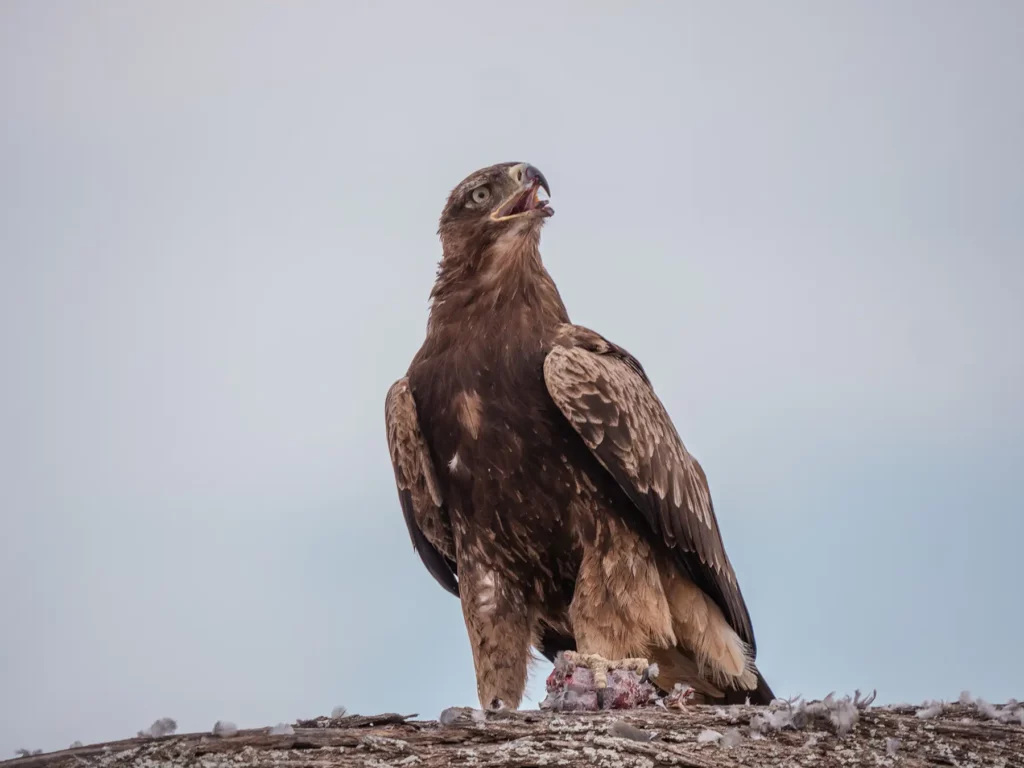
Weather & Temperatures in May
The bad weather is expected to break during May, but normally only towards the latter part of the month. This varies from year to year.
Temperatures cool down somewhat towards the end of the month, although they remain in the upper 20s° C in the western highlands. There is still a fair bit of humidity.
Along the coast it can still reach up to 32° C on some days and rainfall starts to become less frequent.
May could be a ‘hit or miss’ affair, very much depending on the timing of the rains.
| Tanzania location | Daytime temperatures | Nighttime temperatures |
|---|---|---|
| Coastal Areas (e.g., Dar es Salaam, Zanzibar): | 28°C to 30°C (82°F to 86°F) | 22°C to 24°C (72°F to 75°F) |
| Northern Safari Circuit (e.g., Arusha, Serengeti, Ngorongoro): | 25°C to 28°C (77°F to 82°F) | 15°C to 18°C (59°F to 64°F) |
| Southern and Western Tanzania (e.g., Selous, Ruaha, Katavi) | 28°C to 32°C (82°F to 90°F) | 20°C to 23°C (68°F to 73°F) |
What are the Costs and How Busy are the Parks in May?
May is still regarded as off-peak season with park lodges offering lower rates known as ‘green season rates’. That makes May a good time for visitors on tight budgets to visit the parks.
As May is out of season, the parks are substantially quieter than they will be in the coming months.
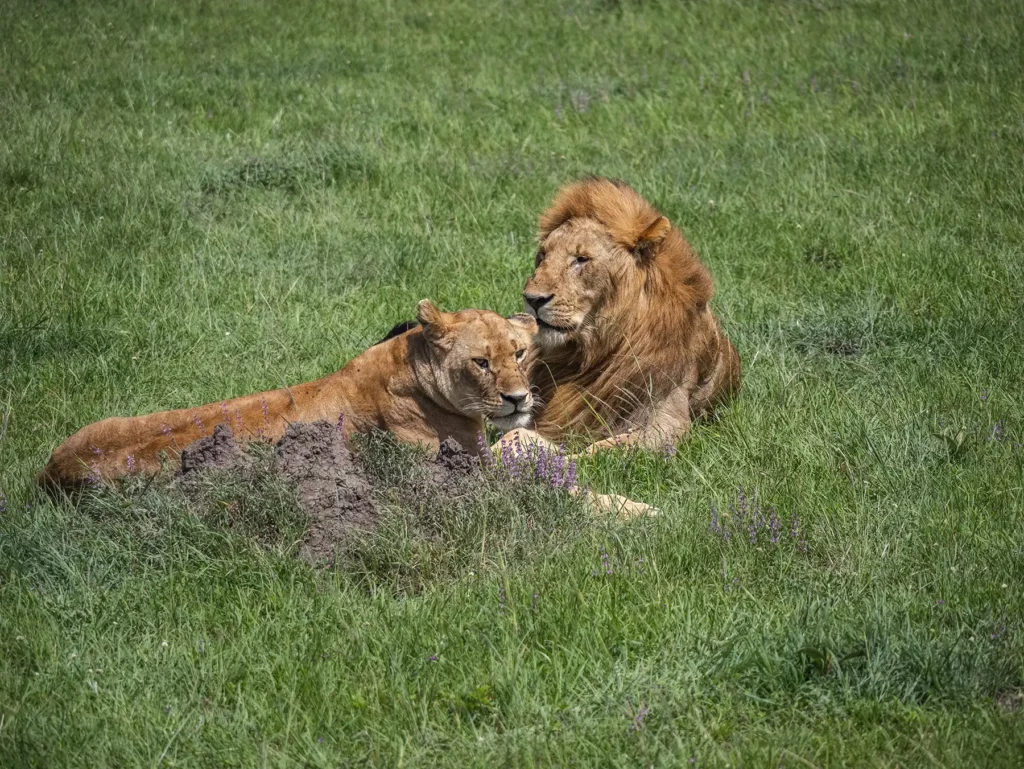
Kilimanjaro in May
Kilimanjaro in May could also be hit or miss, with conditions entirely dependent on the increasingly unpredictable weather.
The summit, which is already very cold even at the warmest times of year, is now snow-capped.
Unless you’re prepared to risk hiking in wet, muddy and slippery conditions, it may be best to plan your hike on Kili for the more stable and drier months just around the corner.
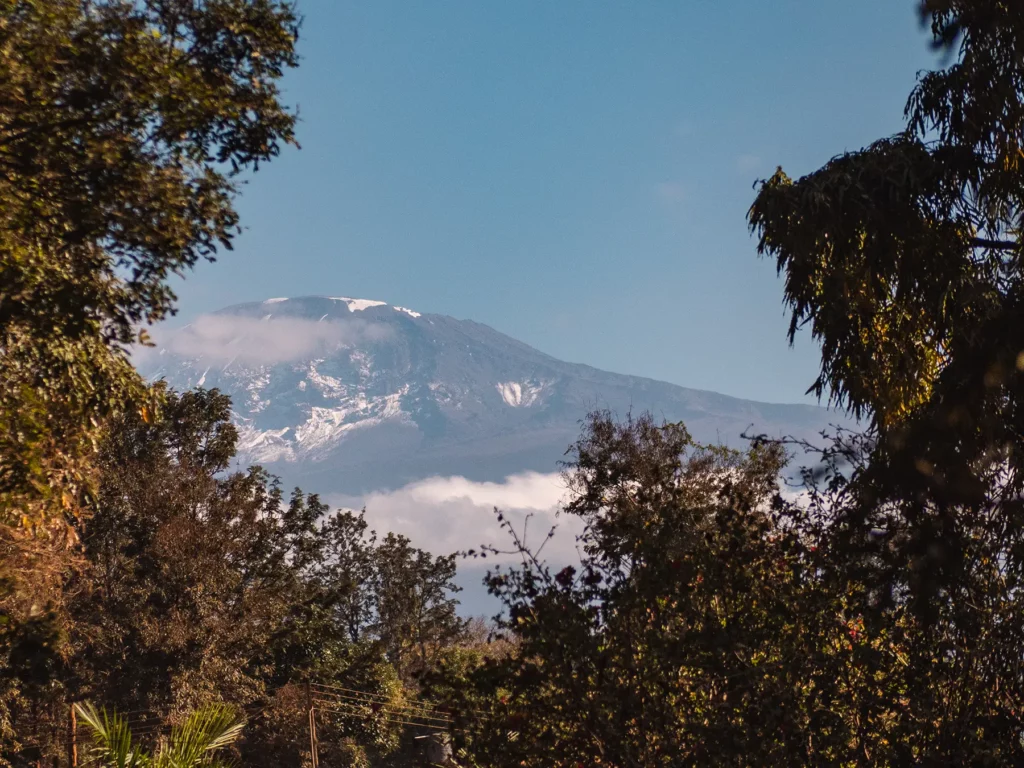
Zanzibar in May
Although May is still regarded as part of the long wet season, the rains usually start to taper off, and temperatures start dipping below the 30° C mark. Nonetheless humidity remains high. All in all May in Zanzibar is usually more tolerable than April, but is still not a great time of year to visit.
More sunshine means more time to spend on the beaches, swimming, snorkelling or doing any other water-related activities.
The sea temperature remains high averaging around 28° C and water visibility is clear as always.
Accommodation is a little cheaper than the upcoming few months, making it a reasonable time to travel if you’re on a tight budget.
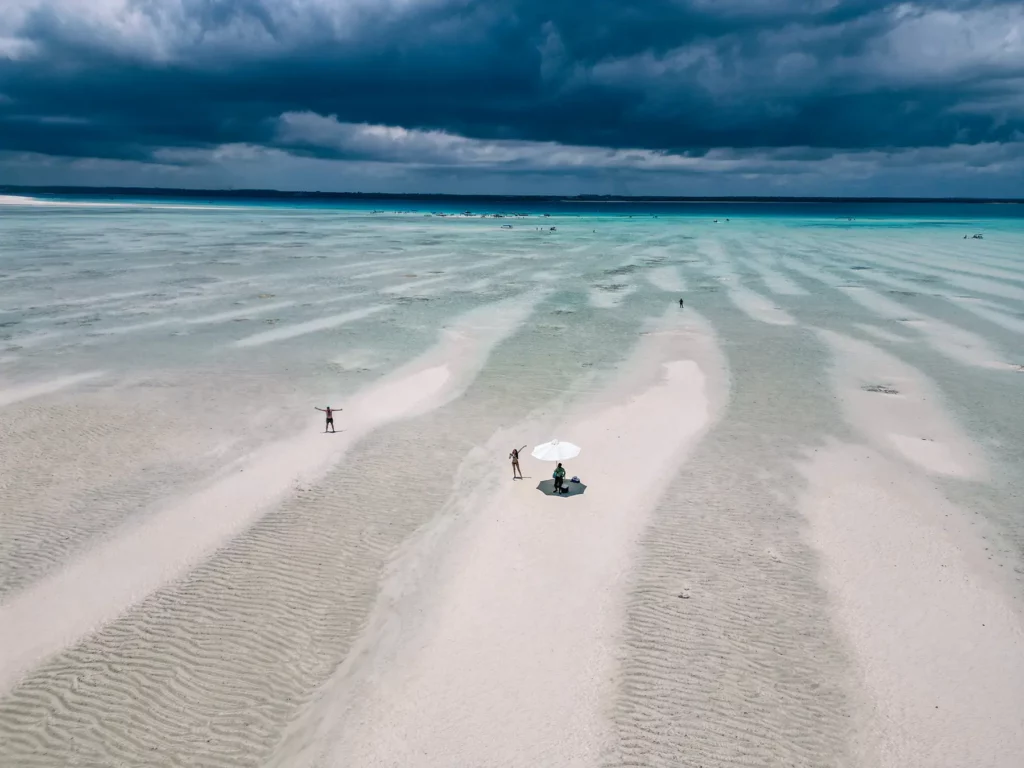
Save Time and Ensure an Incredible Safari Experience
Get quotes from the local safari companies I use to organise my own trips.
You’ll join the rapidly growing tribe of over 1,000 travellers who’ve booked their dream safari using my insider tips and recommendations.
Jump back to the List of all Months the or return to the Table of Contents.
June in Tanzania
- Excellent
Season: Long dry season
June is good for people who want to see the lesser known great migration Grumeti river crossing, avoid the peak season rush but still have great weather.
The much-anticipated month of June signals the end of the long rains and the beginning of the long dry season, during which the parks, beaches and the famous mountain start to get busy once again.
June Ratings Overview
Below are June’s ratings for wildlife, the great wildebeest migration, Zanzibar, busyness, and weather.
- Excellent
- Good
- OK
- Poor
Wildlife
Migration
Zanzibar
Busyness
Weather
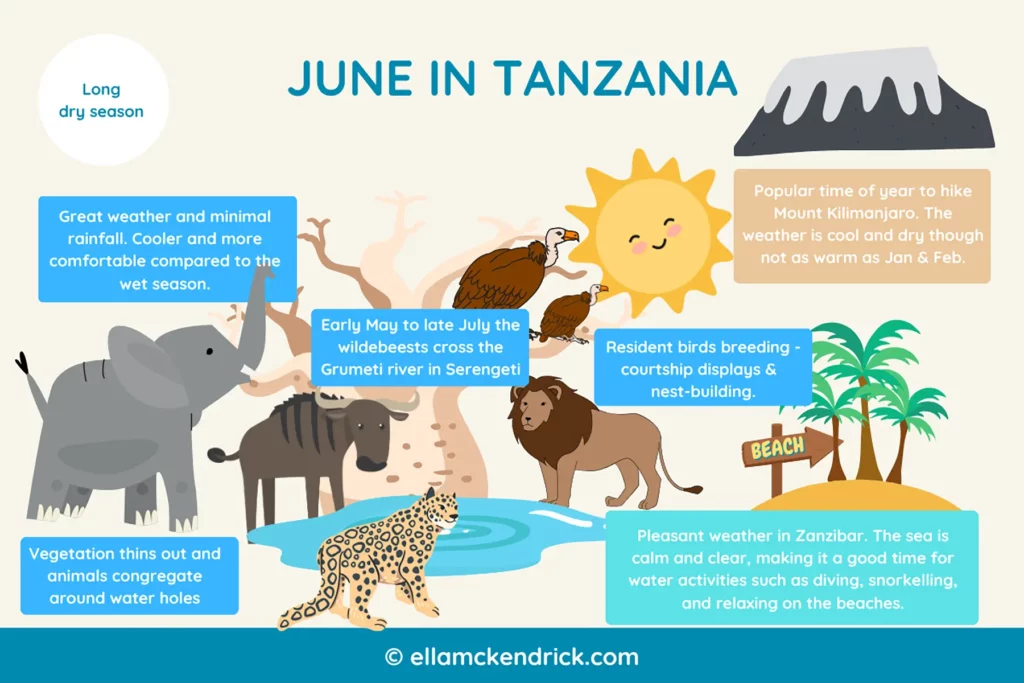
The rains may have slowed right down, but rain jackets now make way for layering with warm outer clothing to get you through the chilly early mornings, evenings and nights and cool layers for the mid-day warmth.
In my opinion, unless seeing the famous Mara River crossing is important to you, I recommend visiting Tanzania in June rather than the busier July and August.
You can still see the Grumeti River crossing in June or for a quieter month for the Mara River crossing look at September or mid-Oct to early-Nov when the herds usually cross back from the Maasai Mara.
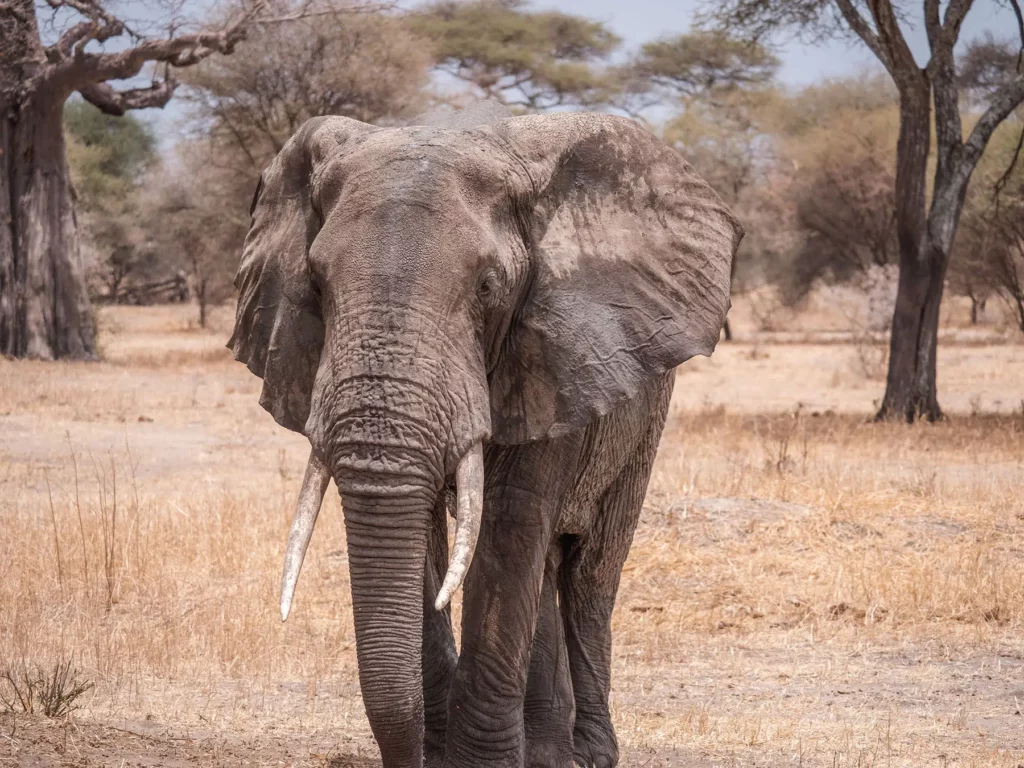
Pros of June in Tanzania
- Weather is more stable and generally very good
- Wildlife is spectacular almost everywhere
- The Great Migration is in full swing
- Fewer mosquitos and lower risk of malaria
- Kilimanjaro is dry and the skies are clear
- Ideal time to visit Zanzibar
Cons of June in Tanzania
- Parks are busy
- High season prices kick in
Best Tanzania Parks and Reserves in June
Below are Tanzania’s most popular destinations which are ranked as either excellent or good for this month.


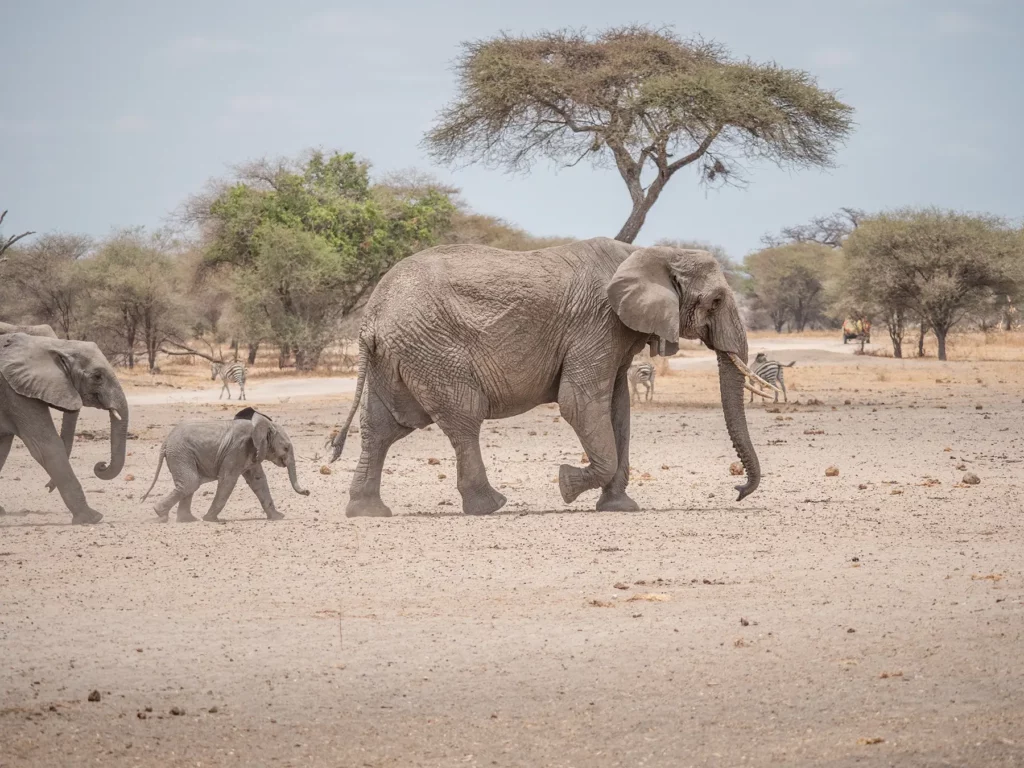

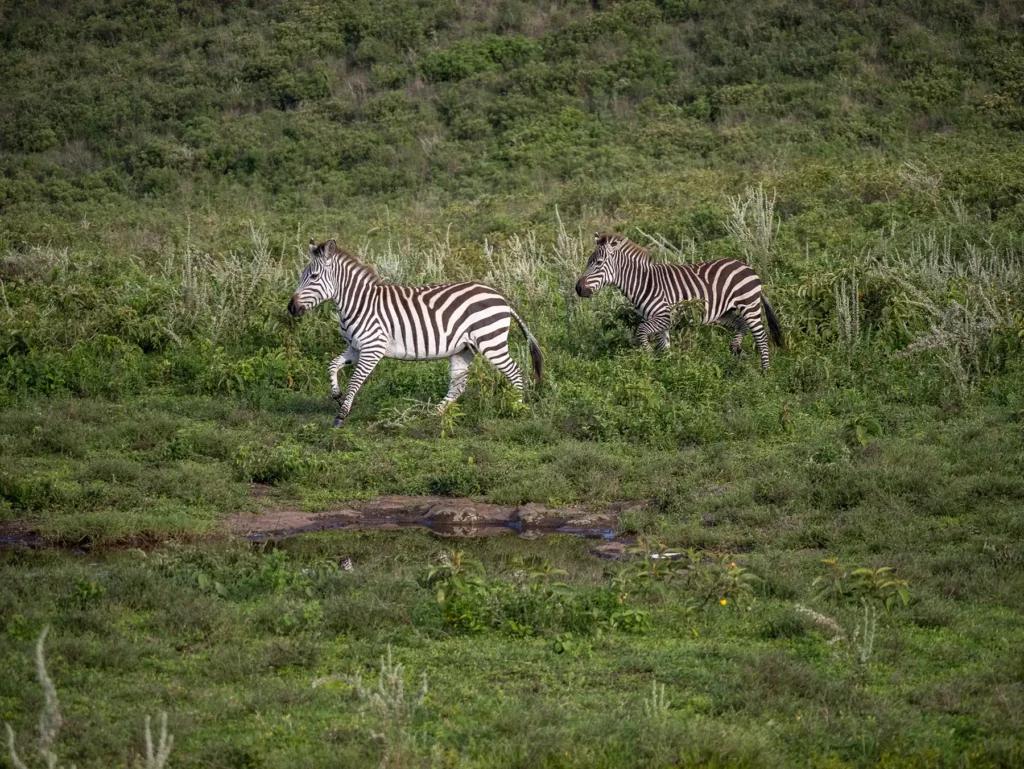

Wildlife Viewing in June
In June, wildlife viewing in Tanzania is excellent. With the start of the dry season, animals begin to gather around water sources once again, making them easier to spot.
How to Book with the Best Local Safari Companies
- Comparison sites which provide multiple quotes from verified suppliers such as Safaris By Ella
Join the rapidly growing tribe of over 1,000 travellers who’ve booked their dream safari using my insider tips and recommendations.
The Great Migration in June
The Great Wildebeest Migration moves into the Western Serengeti, offering dramatic Grumeti River crossings and predator activity.
During June the herds will be anywhere from the Seronera District, along the Western Corridor and the Grumeti River.
Crossing Grumeti river poses the first major challenge for the herds. A wildebeest crossing a deep river is easy pickings for the exceptionally large crocodiles that live in the river, as well as the big cats and other predators who have gathered around the riverbanks in anticipation of the feast to come.
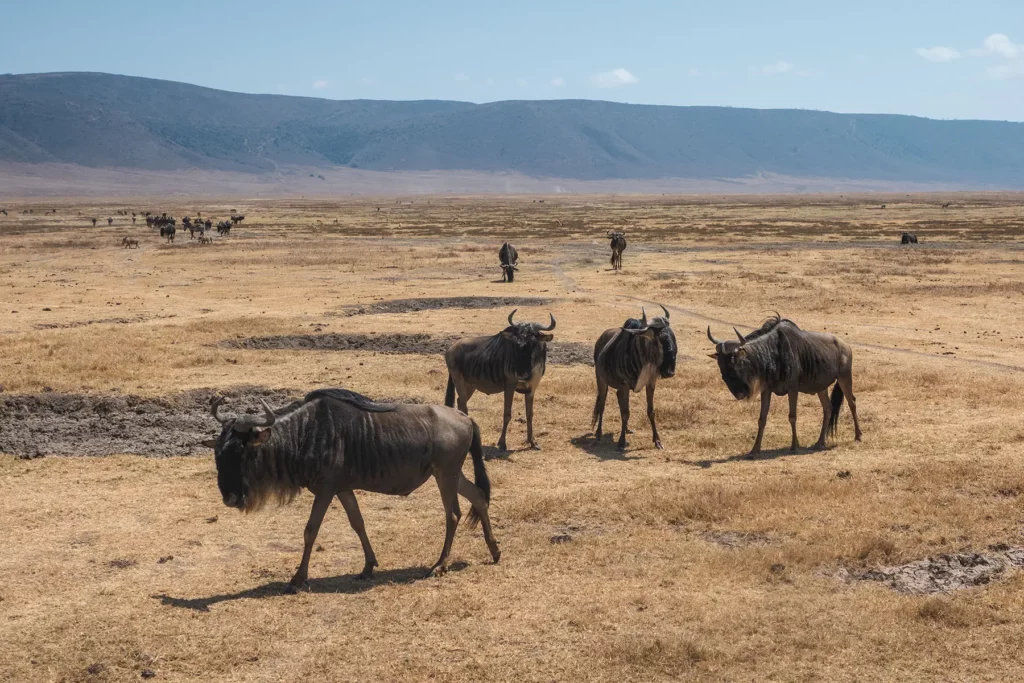
Birdwatching in June
June and July are the breeding season for many resident species, which put on fancy courtship displays.
Some late European and Asian species are still enjoying the tropical conditions and have postponed their return flights.
There are also many permanent residents to keep serious bird watchers happy, including several rare endemic species. Two such species are the grey-breasted spurfowl, which prefers the open grasslands of the Seronera plains, and the brightly-coloured Fischer’s lovebird, usually found in the dense forests around the Grumeti River.
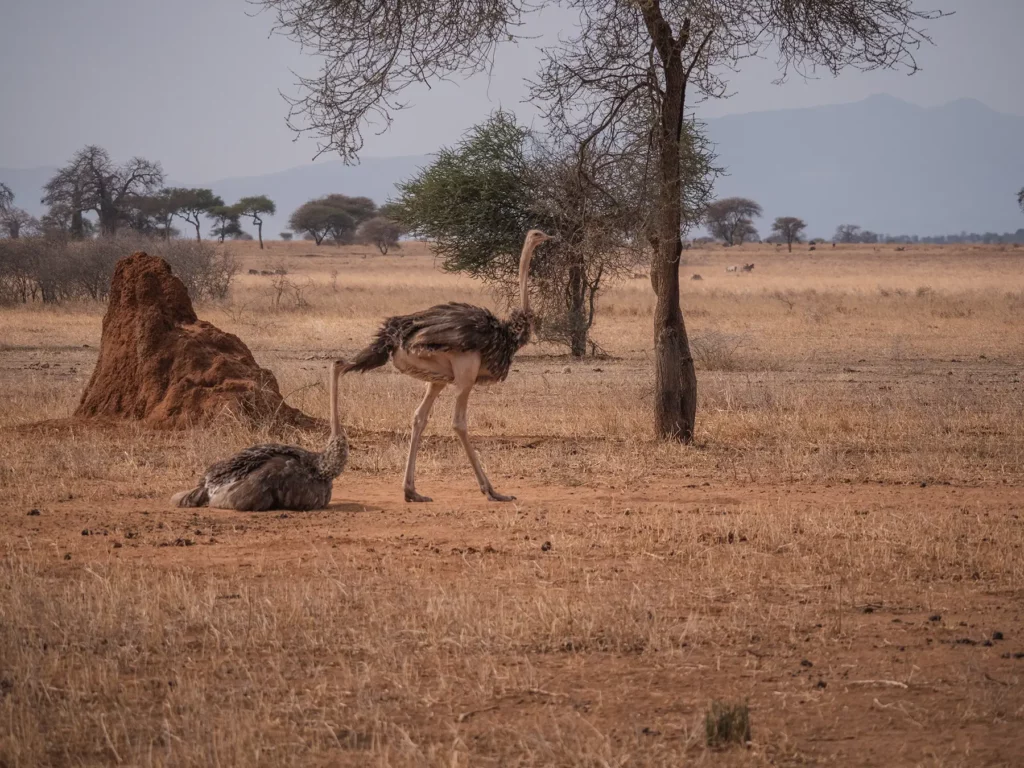
Weather & Temperatures in June
Clear blue skies, minimal rain and cooler temperatures make for fantastic weather in the parks, the mountains and the beaches. While the nights can drop as low as 10° C in some parts of the Serengeti, daytime temperatures often still reach 30° C – welcome to winter in the tropics!
It’s always best to dress in layers on safaris, with warm jackets, scarfs, hats and gloves that you can gradually peel as the sun rises and warms up the landscape.
On the coast, the weather is more stable with temperatures reaching 30° C at times and rarely dropping below 20° C. This is really great beach weather as the water is still fairly warm and the seas clear and balmy, perfect for all beach and water activities.
| Tanzania location | Daytime temperatures | Nighttime temperatures |
|---|---|---|
| Coastal Areas (e.g., Dar es Salaam, Zanzibar): | 25°C to 30°C (77°F to 86°F) | 20°C to 24°C (68°F to 75°F) |
| Northern Safari Circuit (e.g., Arusha, Serengeti, Ngorongoro): | 20°C to 25°C (68°F to 77°F) | 10°C to 15°C (50°F to 59°F) |
| Southern and Western Tanzania (e.g., Selous, Ruaha, Katavi) | 25°C to 30°C (77°F to 86°F) | 15°C to 20°C (59°F to 68°F). |
What are the Costs and How Busy are the Parks in June?
Being the start of the peak season in the parks, costs are high, but not as high as they are during July and August.
There will be more safari trucks in the parks, however, the vastness of the Serengeti National Park ensures that it doesn’t get too congested. Smaller parks such as Ngorongoro Crater can become bisy especially at key sightings.
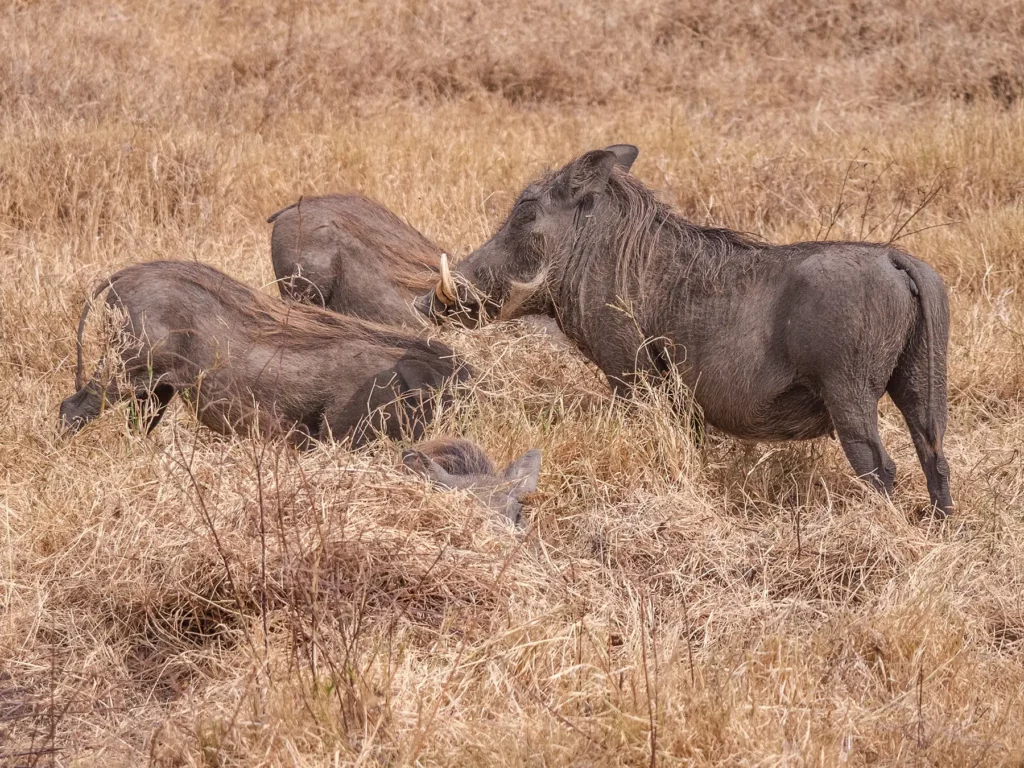
Kilimanjaro in June
June is prime time for Kilimanjaro.
Great, settled weather, clear skies and comfortable temperatures make for near perfect hiking conditions, despite the sometimes intense cold at higher elevations. Some cloud cover can spoil the otherwise scenic views that can be enjoyed from the slopes and the summit.
To increase your chances of better weather and cleare conditions, July and August may be better options.
Zanzibar in June
June is an excellent month to visit Zanzibar.
The rains become sparse, allowing you more time to spend outdoors exploring the historic Stonetown and relaxing on the stunning beaches. The islands are busier and lodging costs are accordingly higher.
The sea is usually calm and clear, ideal for all beach and water activities. I highly recommend snorkelling and scuba diving along Zanzinbar’s colourful coral reefs.

Save Time and Ensure an Incredible Safari Experience
Get quotes from the local safari companies I use to organise my own trips.
You’ll join the rapidly growing tribe of over 1,000 travellers who’ve booked their dream safari using my insider tips and recommendations.
Jump back to the List of all Months the or return to the Table of Contents.
July in Tanzania
- Excellent
Season: Long dry season
July is good for people who want optimum wildlife viewing and to see the Mara river crossing in the second half of the month. Conditions are also perfect for a Kilimanjaro hike and visiting Zanzibar.
If you don’t mind busier parks (but not as busy as August) and higher prices, July is an all-round fantastic time to visit Tanzania.
July Ratings Overview
Below are July’s ratings for wildlife, the great wildebeest migration, Zanzibar, busyness, and weather.
- Excellent
- Good
- OK
- Poor
Wildlife
Migration
Zanzibar
Busyness
Weather
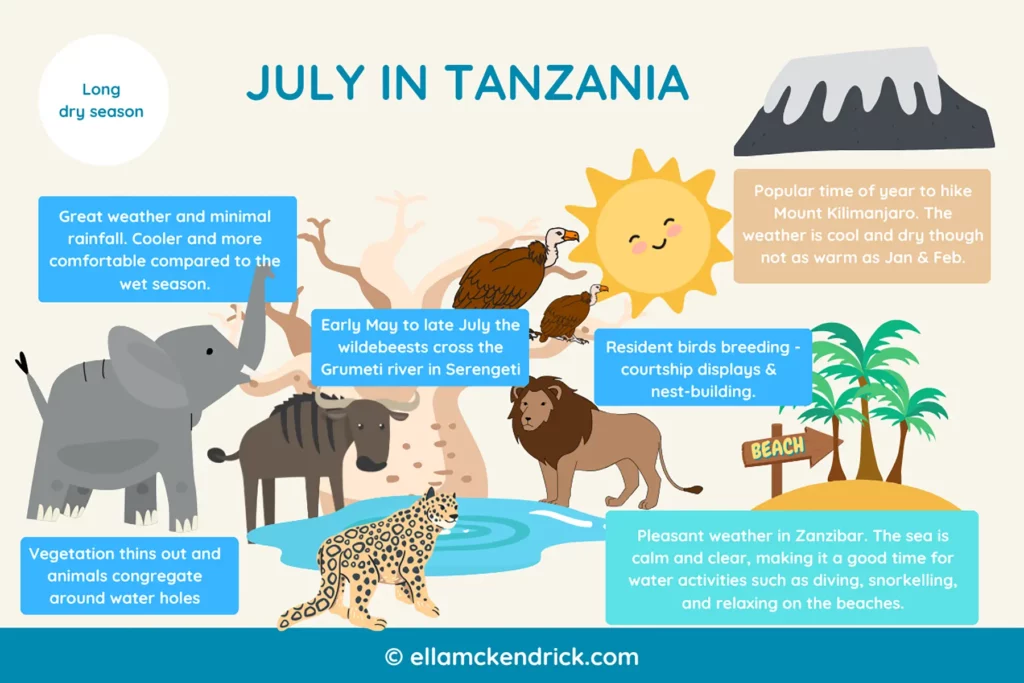
July is in the heart of Tanzania’s winter and the country is at its driest. The skies are generally clear and midday temperatures are mild, although they can still peak at around 30° C along the coast and in the south-western parks on some days.
On the islands, the sea is calm and clear, making July one of the best times to hit the beaches, go on safari or hike Kilimanjaro.
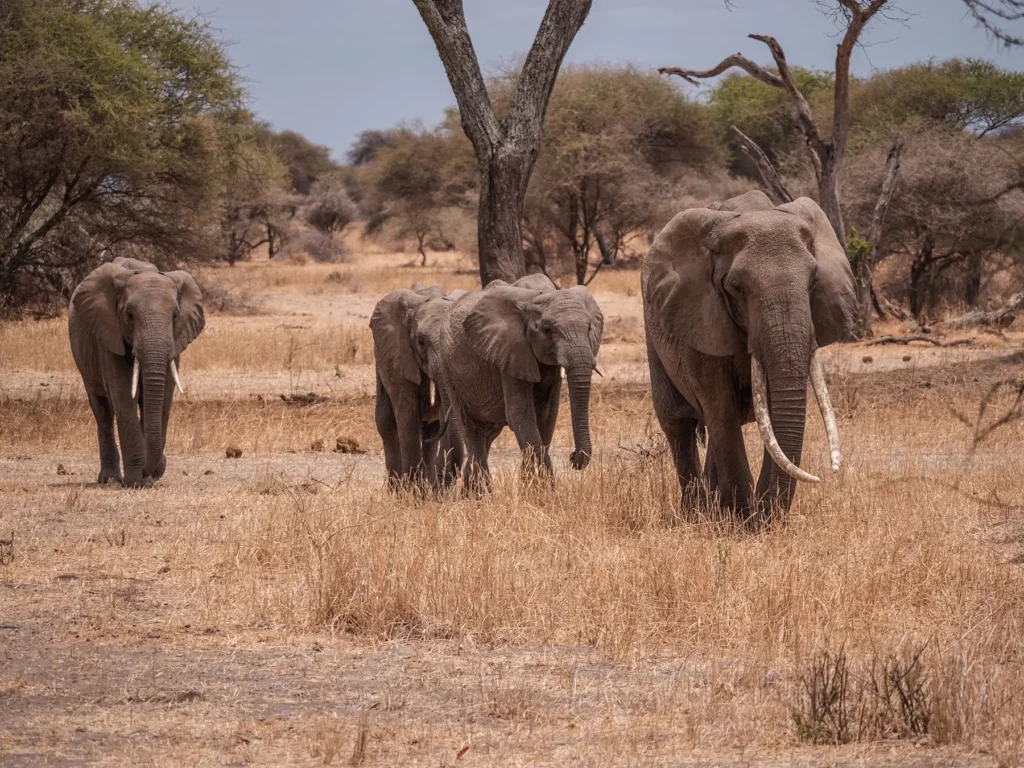
Pros of July in Tanzania
- Weather is fantastic and more predictable
- Wildlife viewing is at its very best as the foliage dies back, making animals easier to spot
- Animals congregates around watering holes, making them easier to find
- The Great Migration is in full swing with wildebeest heading north to Kogatende. It’s possible to see some river crossings in late July
- Ideal time to visit Zanzibar
- Best month to hike Kilimanjaro
- Lowest level of mosquitos and risk of malaria
Cons of July in Tanzania
- Parks and hotels are busy
- High season prices everywhere
Best Tanzania Parks and Reserves in July
Below are Tanzania’s most popular destinations which are ranked as either excellent or good for this month.






Wildlife Viewing in July
July is the middle of the dry season, so the grasses are short, the vegetation is less dense and animals tend to congregate around the water holes, making them easier to spot. Water holes are excellent places to view big cat activity and maybe even see a kill.
How to Book with the Best Local Safari Companies
- Comparison sites which provide multiple quotes from verified suppliers such as Safaris By Ella
Join the rapidly growing tribe of over 1,000 travellers who’ve booked their dream safari using my insider tips and recommendations.
The Great Migration in July
The Great Migration is by now well on its way, with millions of wildebeest and zebras crossing the Grumeti River along the Western Corridor and heading to Kogatende in Serengeti’s north. Around mid-July, the herds start to reach the famous Mara River and if you’re lucky, you may even witness a crossing.

Birdwatching in July
June and July are the breeding season for many resident species, which put on fancy courtship displays.
Migratory species from Europe and Asia are long gone. But with over 1,000 resident species, dozens of which are indigenous to Tanzania, there is never a shortage of birds at any time of the year.
The vastly diverse landscapes of Tanzania provide perfect habitats for a wide range of resident bird species that can be seen during all seasons.
The exquisitely decorated lilac-breasted roller can be seen virtually everywhere, perched on treetops or poles alongside the road.
The high number of lakes in Tanzania means that there are also huge concentrations of flamingos, especially in the central Serengeti, inside the popular Ngorongoro Crater, on Lake Ndutu and on the highly caustic Lake Natron.
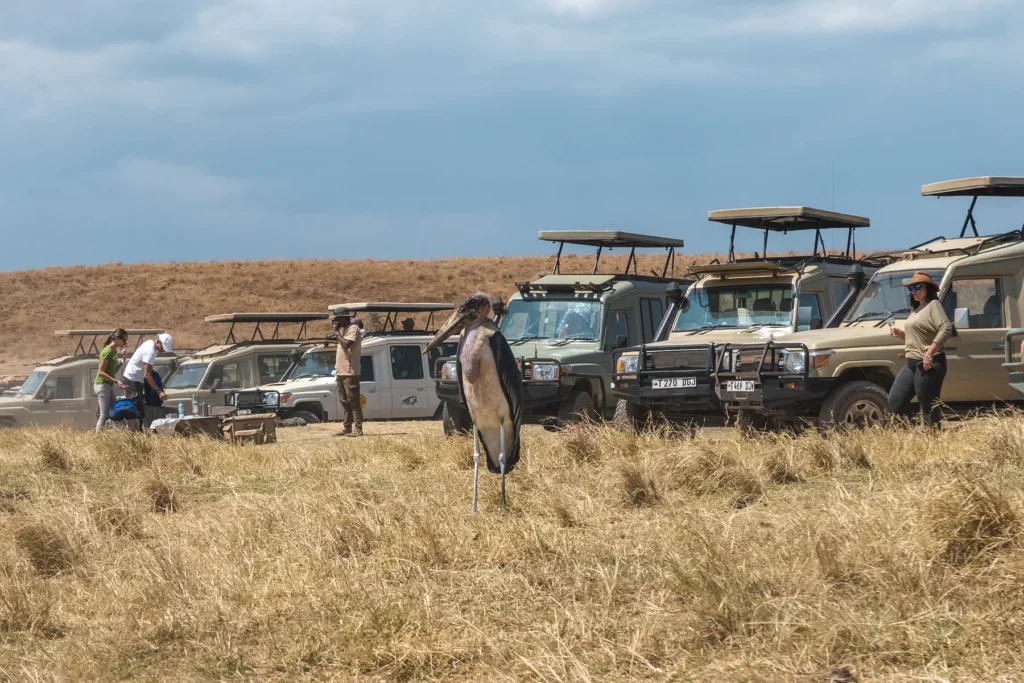
Weather & Temperatures in July
The weather in July is usually absolutely perfect. There is almost no chance of rain, with clear skies and mild and comfortable temperatures from the islands to the mountains.
In the parks in the western highlands, night temperatures can drop to around 10° C. You’ll need layers of warm clothing for early morning safari drives, and you can peel off your layers as the day warms up to around 25° C, before dipping again in the evenings.
Along the coast and on the islands, temperatures average a little higher and can reach 30° C at times but seldom drop below 20° C at night. There may still be occasional scattered showers but they usually don’t last for long.
| Tanzania location | Daytime temperatures | Nighttime temperatures |
|---|---|---|
| Coastal Areas (e.g., Dar es Salaam, Zanzibar): | 25°C to 30°C (77°F to 86°F) | 20°C to 24°C (68°F to 75°F) |
| Northern Safari Circuit (e.g., Arusha, Serengeti, Ngorongoro): | 20°C to 25°C (68°F to 77°F) | 10°C to 15°C (50°F to 59°F) |
| Southern and Western Tanzania (e.g., Selous, Ruaha, Katavi) | 25°C to 30°C (77°F to 86°F) | 15°C to 20°C (59°F to 68°F). |
What are the Costs and How Busy are the Parks in July?
July along with August is the busiest time of year in all the parks, and accommodation and safari prices are a little higher than in June but still not quite as high as August.
Smaller parks such as Ngorongoro Crater may feel crowded at times, but larger parks like the Serengeti, Tarangire and Nyerere, are so vast that it’s hard to feel overcrowded. However, at the best sightings you could still be contending with dozens of vehicles.
Kilimanjaro in July
July is arguably the best month to hike Kilimanjaro.
Clear skies and minimal chance of rain or cloud cover ensure stable and comfortable hiking, with great scenery throughout the entire multi-day hike. The summit is bound to be under snow, making for more dramatic scenery, but it will also be bitterly cold.
It’s worth remembering that the final trek for the summit begins at midnight when the temperature falls to well below freezing. How does -20° C sound? When the wind blows it feels even colder (eek!).
Trails will undoubtedly be busy.
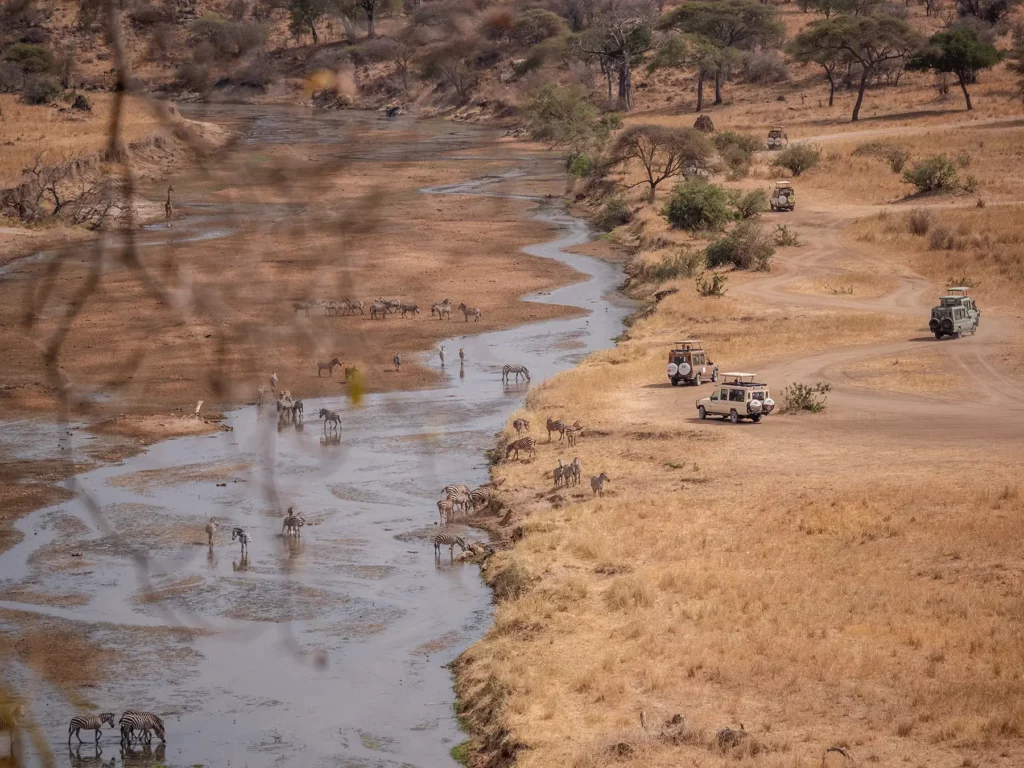
Zanzibar in July
Zanzibar in July is pure bliss. Hardly any rain, clear skies and mild temperatures with low humidity make it an excellent time to lose yourself in the narrow streets of the historic Stone Town or chill on the beaches.
The sea remains relatively warm at around 26° C, crystal clear and balmy, perfect for swimming, snorkelling and any other water activity.
Beaches and hotels are at their busiest and high season prices apply.

Save Time and Ensure an Incredible Safari Experience
Get quotes from the local safari companies I use to organise my own trips.
You’ll join the rapidly growing tribe of over 1,000 travellers who’ve booked their dream safari using my insider tips and recommendations.
Jump back to the List of all Months the or return to the Table of Contents.
August in Tanzania
- Excellent
Season: Long dry season
August is good for people who want optimum wildlife viewing and to maximise their chances of seeing the Great Migration Mara River crossing with great weather and minimal chances of the rain.
It’s another great month for visiting Zanzibar and hiking Kilimanjaro.
August kicks off the second half of the long dry season and is the busiest and most expensive month of the year for visitors, coinciding with school holidays and the height of the Great Migration.
August Ratings Overview
Below are August’s ratings for wildlife, the great wildebeest migration, Zanzibar, busyness, and weather.
- Excellent
- Good
- OK
- Poor
Wildlife
Migration
Zanzibar
Busyness
Weather
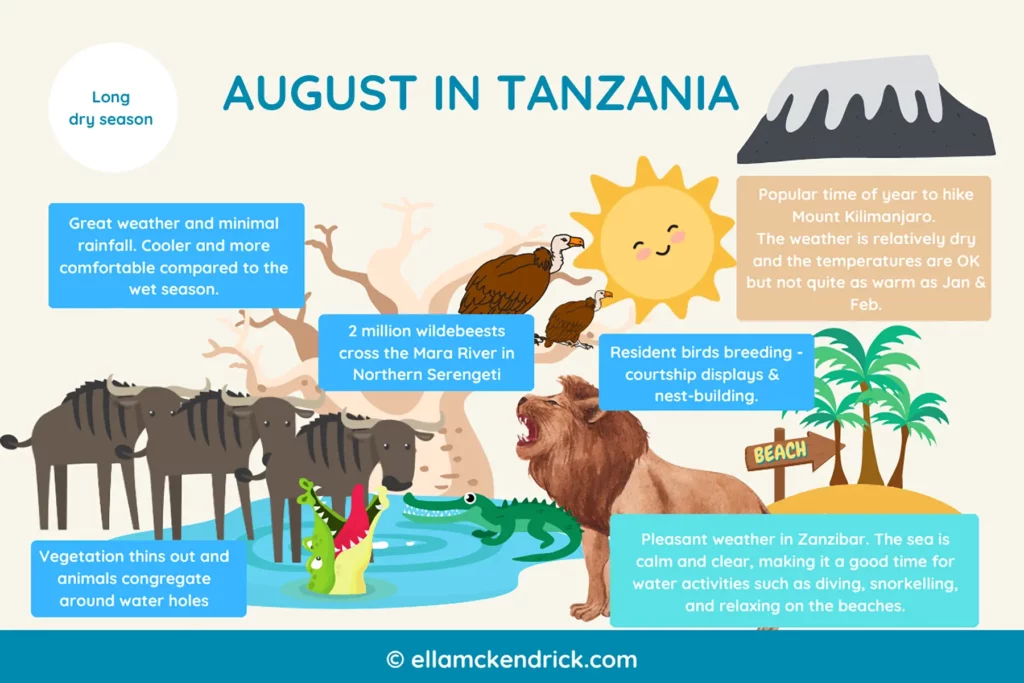
Up in the north of the Serengeti, the migratory herds are crossing the deadly Mara River, and it’s the most exciting part of the Great Wildebeest Migration for visitors and for the waiting crocodiles.
Eid–al–Fitr takes place around 19th August (the exact date changes slightly every year). This is a four day Islamic festival which celebrates the end of the fast. It’s the biggest event of the year and people give each other gifts. Some restaurants in the towns may be closed over the 4 day period.
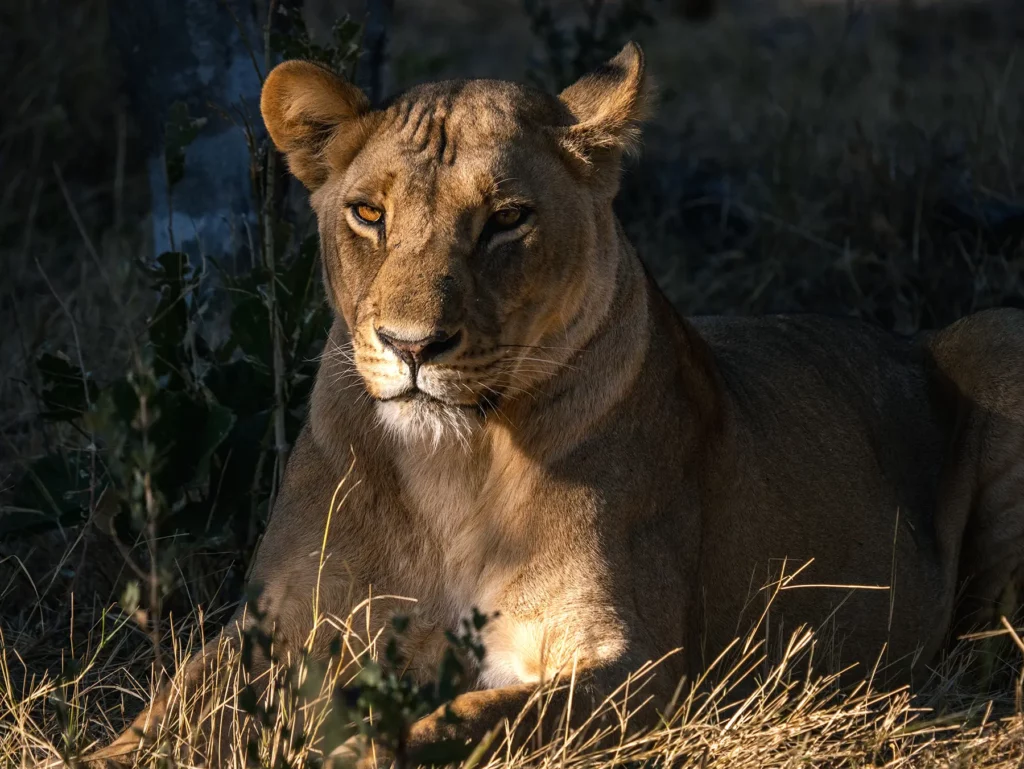
Pros of August in Tanzania
- Weather is really fantastic. Daytime temperatures aren’t too hot, days are sunny and the chances of rain are very low
- Wildlife viewing is at its finest
- Migratory herds are crossing the Mara River, arguably the highlight of the great migration
- Zanzibar is sublime
- Kilimanjaro conditions are excellent
- Mosquito populations and risk of malaria are at their lowest
Cons of August in Tanzania
- Parks and hotels are at their busiest
- Peak season prices apply
- Not the best time for bird watchers
Best Tanzania Parks and Reserves in August
Below are Tanzania’s most popular destinations which are ranked as either excellent or good for this month.






Wildlife Viewing in August
In August, wildlife viewing is outstanding across Tanzania, as dry conditions concentrate animals around rivers and water holes.
How to Book with the Best Local Safari Companies
- Comparison sites which provide multiple quotes from verified suppliers such as Safaris By Ella
Join the rapidly growing tribe of over 1,000 travellers who’ve booked their dream safari using my insider tips and recommendations.
The Great Migration in August
The great migration is at it’s most exciting and dramatic, with two million wildebeest and zebras frantically crossing the crocodile-infested Mara River from Tanzania to Kenya. This action takes place in Kogatende in Northern Serengeti, and can also be viewed from the Kenya side in the Maasai Mara.
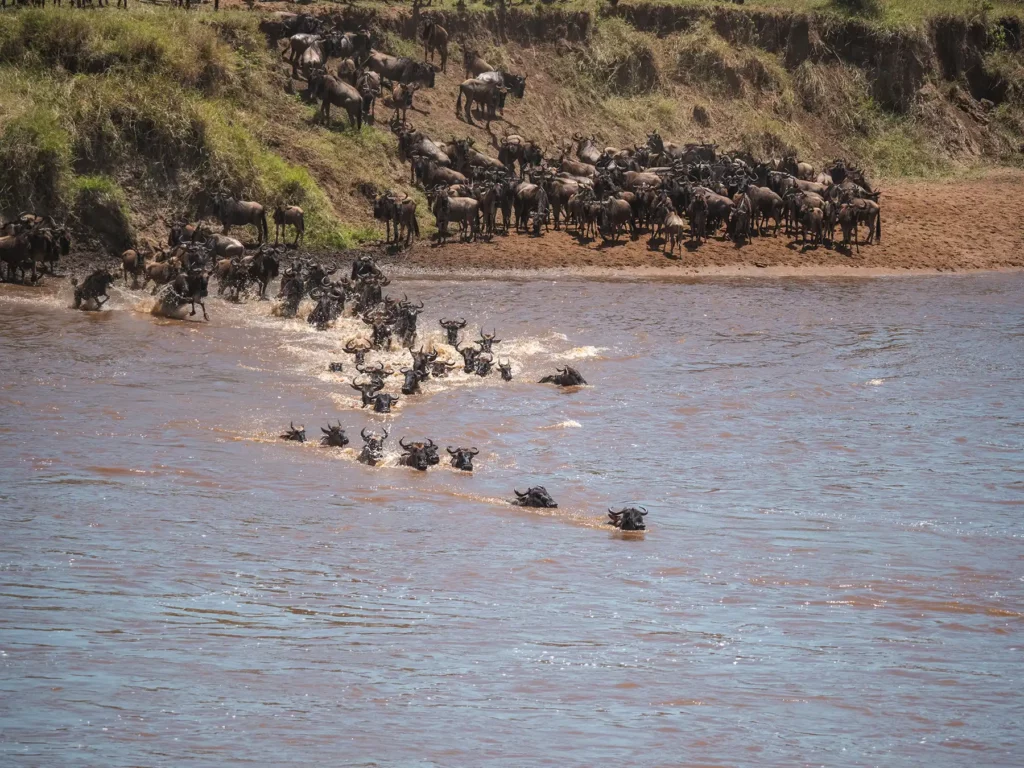
Birdwatching in August
August isn’t ideal for birdwatching, as most European and Asian migrants have already departed. However, a few late stragglers may still be seen, and Tanzania’s parks remain home to a wide variety of resident species year-round.
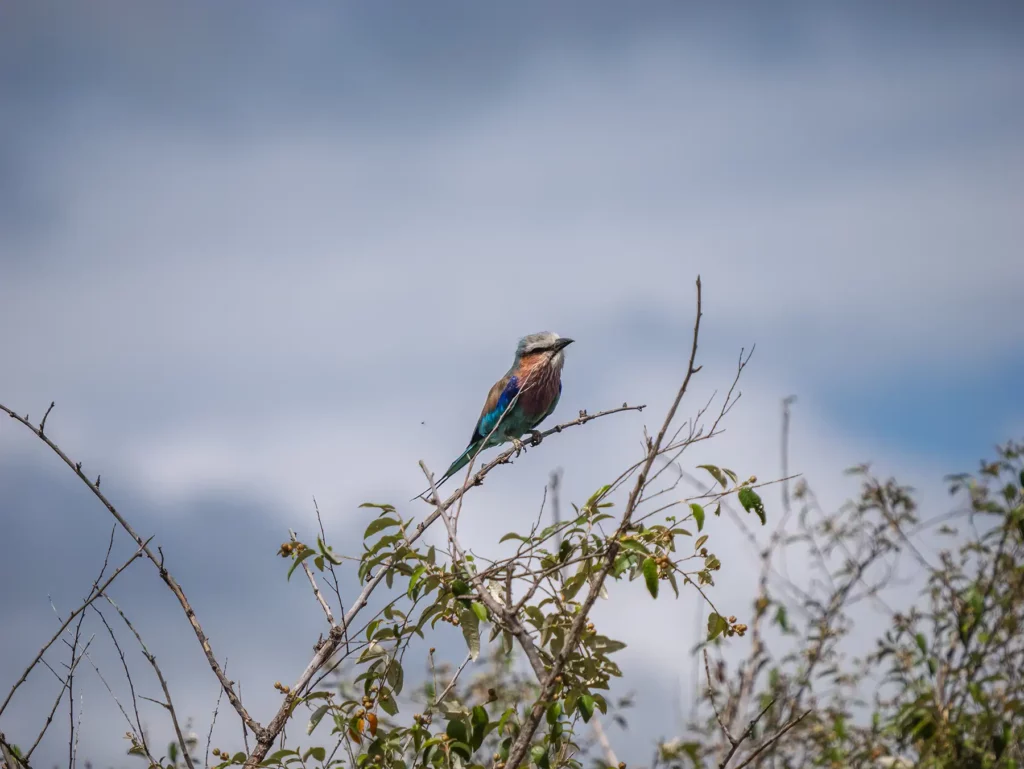
Weather & Temperatures in August
August continues July’s good weather, with even less chance of rain, even along the coast. The days are warm with sunny clear skies, but nights and early mornings are chilly in the parks.
Temperatures usually hover in the mid-20s° C, occasionally touching 30° C in the southern plains of the Serengeti.
On the coast and islands it’s pretty much the same, with excellent, stable weather to be expected every day. It’s a great time for all beach and water-related activities.
| Tanzania location | Daytime temperatures | Nighttime temperatures |
|---|---|---|
| Coastal Areas (e.g., Dar es Salaam, Zanzibar): | 25°C to 30°C (77°F to 86°F) | 20°C to 24°C (68°F to 75°F) |
| Northern Safari Circuit (e.g., Arusha, Serengeti, Ngorongoro): | 20°C to 25°C (68°F to 77°F) | 10°C to 15°C (50°F to 59°F) |
| Southern and Western Tanzania (e.g., Selous, Ruaha, Katavi) | 25°C to 30°C (77°F to 86°F) | 15°C to 20°C (59°F to 68°F). |
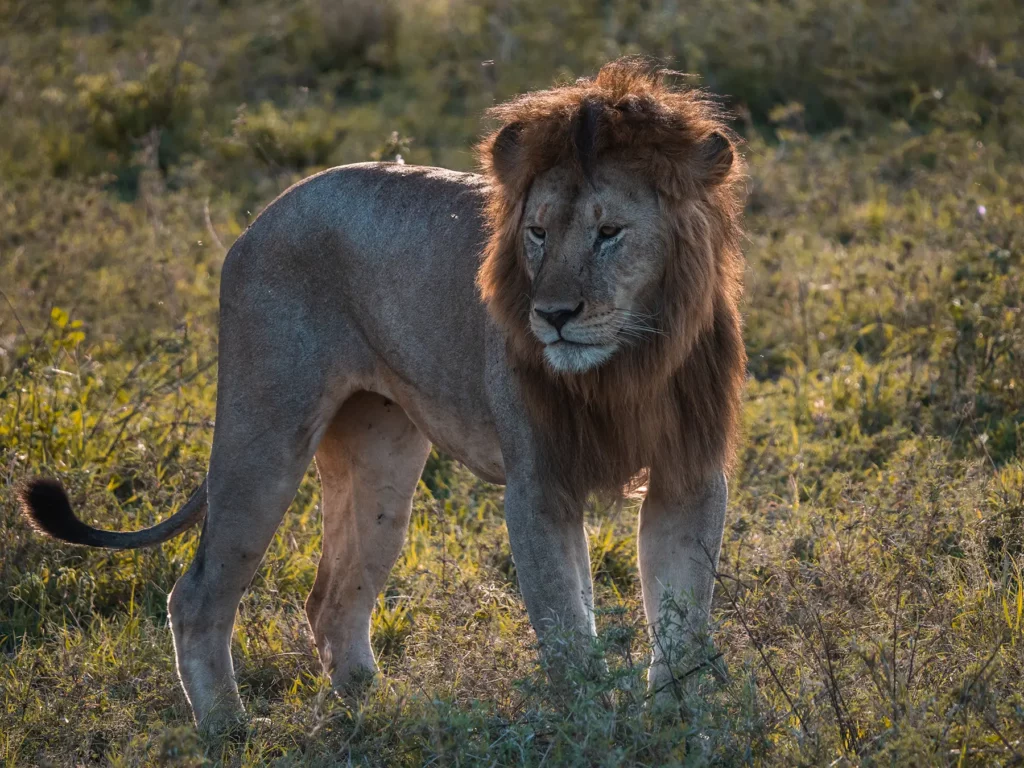
What are the Costs and How Busy are the Parks in August?
The good weather and eventful game viewing come at a premium for visitors, with August being the most expensive month of the year. Despite the high costs, the parks are usually extremely busy.
While many tourists visit several parks during their time in Tanzania, they may find some of the smaller parks such as Ngorongoro Crater a little crowded at times.
However, the bigger parks, like the Serengeti and Tarangire, don’t really have this problem. The high prices charged by Tanzanian parks also help to reduce overcrowding during this peak season. That being said, you will undoubtedly encounter a few vehicles at the top sightings, especially the river crossings.

Kilimanjaro in August
August is a great month for hiking Kilimanjaro. The weather remains stable, with clear skies, generally warm temperatures and overall favourable hiking conditions. As it’s the coldest time of the year, the higher slopes and the summit will be extra cold and almost certainly covered in snow, creating excellent photo opportunities. Expect the slopes and trails to be busy.
Zanzibar in August
August is the peak month in Zanzibar, and hotels and lodges are at their busiest and most expensive. The weather is at its very finest, perfect for exploring not only the city, but also the beaches and secluded coves, and countless nearby uninhabited islands.
The sea is usually extremely calm and crystal clear, perfect for snorkelling along its miles of coral reefs, teeming with colourful marine life.
You can read my Tanzania in August guide for further reading and recommended August Itineraries.
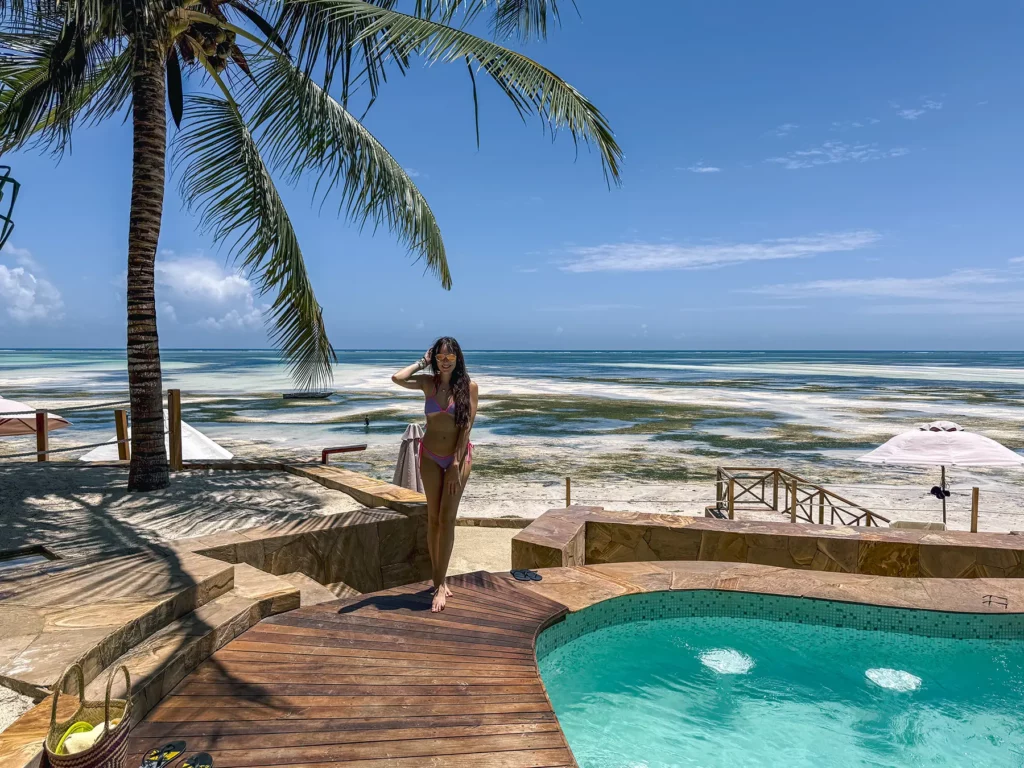
Save Time and Ensure an Incredible Safari Experience
Get quotes from the local safari companies I use to organise my own trips.
You’ll join the rapidly growing tribe of over 1,000 travellers who’ve booked their dream safari using my insider tips and recommendations.
Jump back to the List of all Months the or return to the Table of Contents.
September in Tanzania
- Excellent
Season: Long dry season
September is a great time for travellers who want excellent game viewing and to see the Great Migration Mara River Crossing whilst having it slightly quieter than the proceeding months.
You’ll also have great weather, good conditions for Kilimanjaro hikes and visiting Zanzibar, all for slightly reduced rates.
September Ratings Overview
Below are September’s ratings for wildlife, the great wildebeest migration, Zanzibar, busyness, and weather.
- Excellent
- Good
- OK
- Poor
Wildlife
Migration
Zanzibar
Busyness
Weather
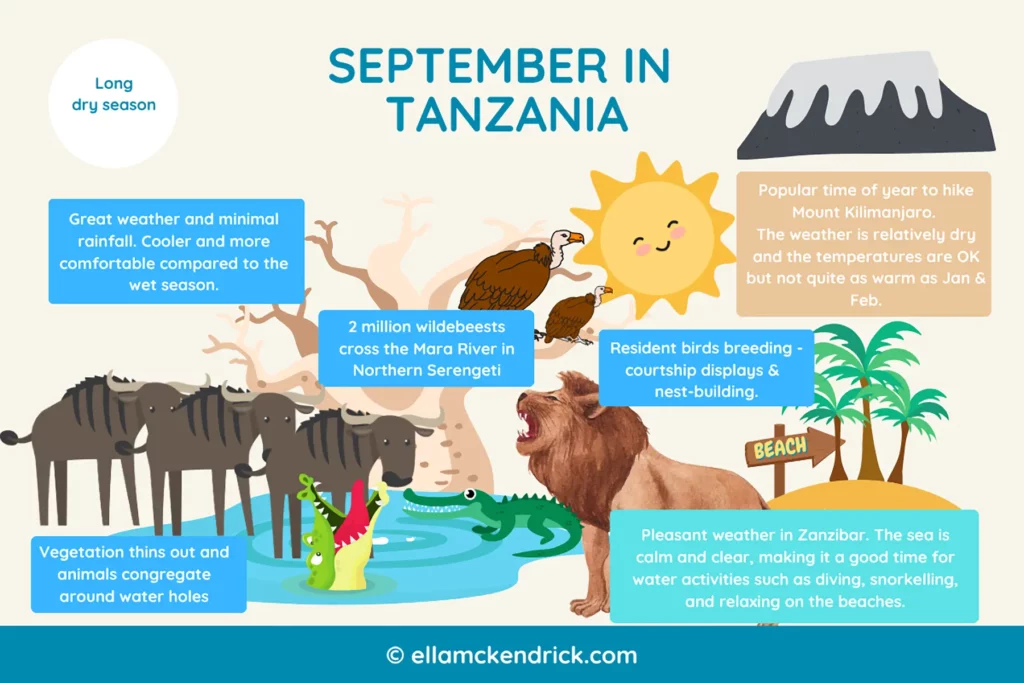
Pros of September in Tanzania
- Prices have started to drop
- Less crowded than July and August
- Weather is still brilliant
- Wildlife viewing is excellent
- The Great Migration has reached its climax at the Mara River crossing
- Kilimanjaro hiking conditions are great
- Great time to visit Zanzibar
- Mosquito levels and risk of malaria remain low
Cons of September in Tanzania
- Prices are lower than August but still high
- Despite being less crowded than August, parks and hotels remain relatively busy
- Not the best time for bird watchers
September is a very popular time to visit Tanzania, and is definitely my personal favourite month. The weather is usually brilliant, tourists have started to thin out, making safaris and Zanzibar more pleasurable, and prices are lower than in July and August (although still fairly high).
For the sailing fraternity, the Dar es Salaam Yacht Club holds an annual regatta towards the end of September or early October, visiting several spots along the mainland coast and offshore Zanzibar Islands.
If the Mara River crossing is at the top of your bucket list, September is, in my opinion, the best month to see it. This is because Tanzania is quieter in September than in July and August. Lodges have more occupancy, some better deals and offers are available, flights are more reasonable in price and, most importantly, there are fewer vehicles in the parks.
Best Tanzania Parks and Reserves in September
Below are Tanzania’s most popular destinations which are ranked as either excellent or good for this month.






My Personal Experience Visiting Tanzania in September
You can view a video of my personal experience going on a Tanzania safari in September below:
Wildlife Viewing in September
Wildlife viewing in September remains exceptional, with animals congregating around rivers and waterholes as the dry season continues. Visibility is excellent, making it one of the best months for spotting big cats, elephants, and large herbivore herds.
The millions of herbivores on the Serengeti’s southern and central plains, such as gazelles and impalas, support a year-round presence of lions, leopards, cheetahs, hyenas, and other smaller predators and scavengers. Elephants, buffalo, giraffes, warthogs, and numerous antelope species are also abundant across Tanzania’s diverse landscapes.
How to Book with the Best Local Safari Companies
- Comparison sites which provide multiple quotes from verified suppliers such as Safaris By Ella
Join the rapidly growing tribe of over 1,000 travellers who’ve booked their dream safari using my insider tips and recommendations.
How to Book with the Best Local Safari Companies
- Comparison sites which provide multiple quotes from verified suppliers such as Safaris By Ella
Join the rapidly growing tribe of over 1,000 travellers who’ve booked their dream safari using my insider tips and recommendations.
The Great Migration in September
As with August, the migrating herds are amassing around the Mara River in Kogatende, northern Serengeti. Many animals have already crossed into the lush plains of the Maasai Mara and into Kenya, so it is typically just the tail end of the migration still to cross. Typically, by mid-September, most, if not all, of the crossings have taken place.
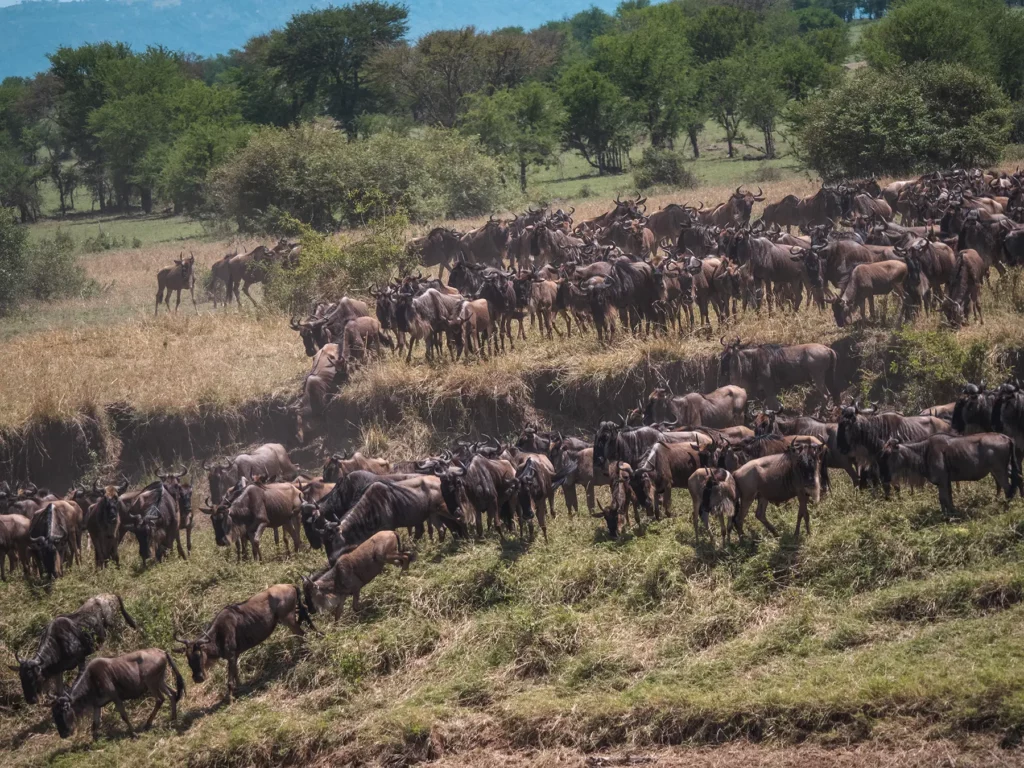
Birdwatching in September
While most migratory bird species have departed by September, Tanzania still offers excellent birdwatching with over 1,000 resident species found across its parks and regions. These include colourful bee-eaters, hornbills, kingfishers, and a wide variety of raptors and waterbirds.

Weather & Temperatures in September
Since it’s the last month of the long dry spell, September is typically dry. But the chance of an early start to the wet season is always a possibility. On one of my visits to Tanzania in September, I encountered rain towards the end of the month.
You can, however, expect warmish weather during September with maximum temperatures averaging in the mid-20s° C across the country, with conditions being a little warmer on the coast and islands.
In the parks, early mornings and nights can still be chilly, requiring layers of warm clothing for the early morning game drives. Apart from an early season rain shower, skies should be mostly clear.
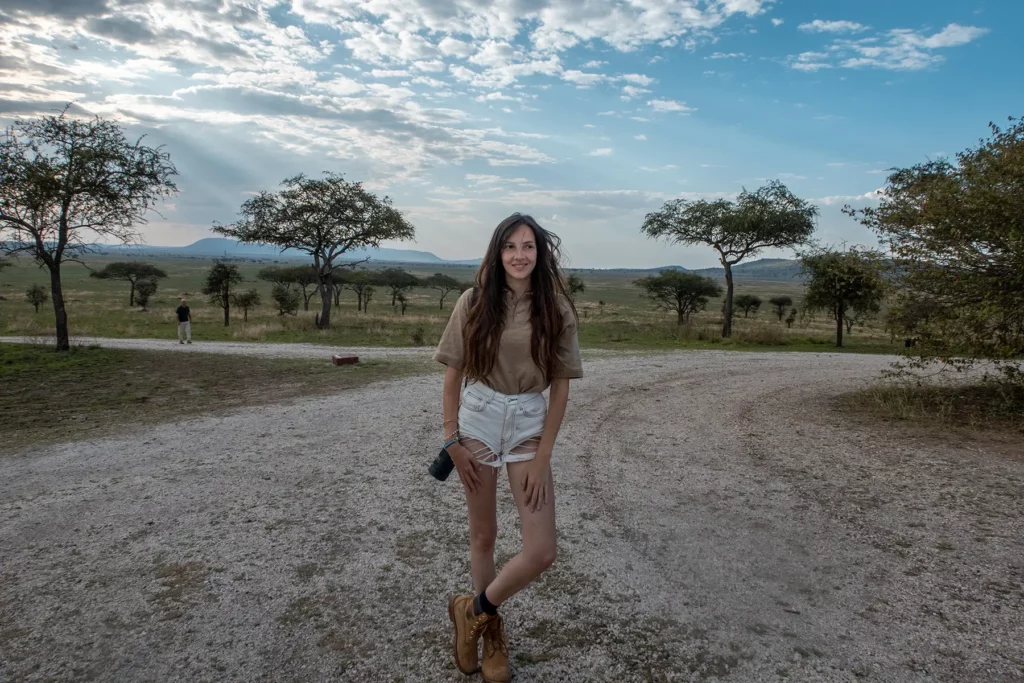
| Tanzania location | Daytime temperatures | Nighttime temperatures |
|---|---|---|
| Coastal Areas (e.g., Dar es Salaam, Zanzibar): | 25°C to 30°C (77°F to 86°F) | 20°C to 24°C (68°F to 75°F) |
| Northern Safari Circuit (e.g., Arusha, Serengeti, Ngorongoro): | 20°C to 25°C (68°F to 77°F) | 10°C to 15°C (50°F to 59°F) |
| Southern and Western Tanzania (e.g., Selous, Ruaha, Katavi) | 25°C to 30°C (77°F to 86°F) | 15°C to 20°C (59°F to 68°F). |
What are the Costs and How Busy are the Parks in September?
Costs are relatively high, but are a little less than peak month August. Visitors normally start to thin out although parks do remain fairly busy in September.

Kilimanjaro in September
September remains fairly popular for hiking Kilimanjaro, although the crowds do tend to start tapering off.
Early season showers tend to put off casual hikers, while seasoned hikers welcome the extra challenge and don’t seem to mind a little discomfort from potentially unpredictable weather.
The summit will be snow covered and extremely cold.
Zanzibar in September
September is an excellent time to visit Zanzibar. The weather is warm, with the mercury hovering around the upper 20s° C, sometimes creeping above 30° C and seldom dropping below 20° C. All in all, almost perfect.
Hotels and beaches are still busy although not as packed as June, July and August, and prices may be a little lower. The waters are still fairly calm and warm and visibility remains excellent for snorkelers and scuba divers.
Tanzacat Open is a sailing competition including the “Zanzibar Raid” which takes place in late September to early October. The event is organised by the Dar es Salaam Yacht Club.
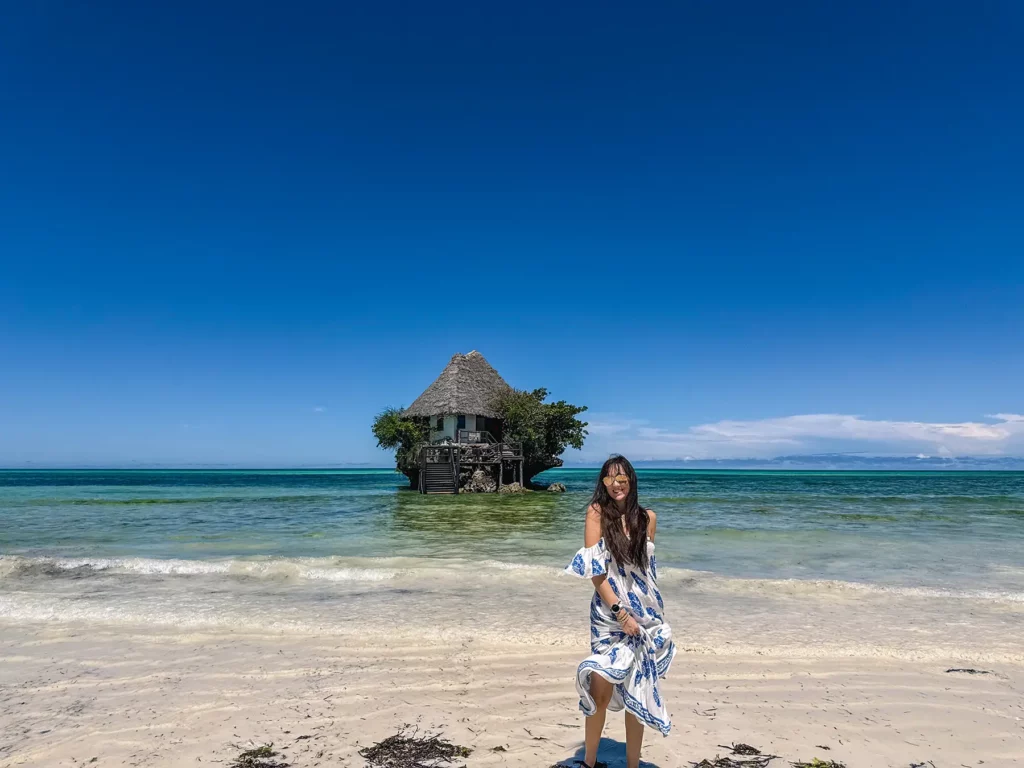
Save Time and Ensure an Incredible Safari Experience
Get quotes from the local safari companies I use to organise my own trips.
You’ll join the rapidly growing tribe of over 1,000 travellers who’ve booked their dream safari using my insider tips and recommendations.
Jump back to the List of all Months the or return to the Table of Contents.
October in Tanzania
- Excellent
Season: Long dry season
October is good for people who want to beat the crowds and have pretty reliable weather and the change to catch the Great Migration crossing back over the Mara River from Kenya’s Maasai Mara.
October marks the end of the long dry season and the short rains begin to set in, but it’s still a fairly popular month for tourists.
October Ratings Overview
Below are October’s ratings for wildlife, the great wildebeest migration, Zanzibar, busyness, and weather.
- Excellent
- Good
- OK
- Poor
Wildlife
Migration
Zanzibar
Busyness
Weather
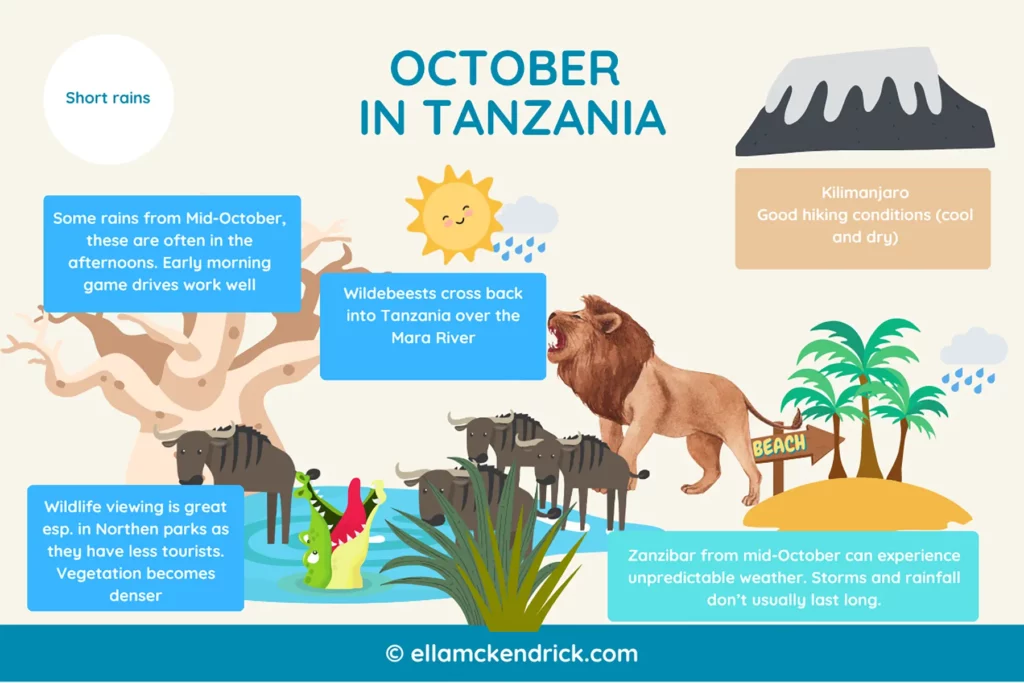
Pros of October in Tanzania
- Lower ‘shoulder season’ prices compared to peak season
- Parks and hotels less busy
- Fewer safari trucks makes for better game viewing
- Huge migratory herds present around the Mara River in northern Serengeti
- Arrival of migratory birds from Europe and Asia
Cons of October in Tanzania
- Weather is unpredictable
- Showers can be expected, but mainly in the afternoons
Depending on the timing of the rains, which have become quite unpredictable of late, some showers can be expected in the afternoons. This still leaves plenty of time in the mornings for game drives or for relaxing on Zanzibar’s beaches.
Parks and hotels are less busy from mid-October onwards, and this time of year is regarded as the ‘shoulder season’. Prices can be substantially lower than in peak season, making it more attractive for budget-conscious travellers.
I personally love this time of year for visiting Tanzania. The wildlife viewing is still superb and the weather is generally good, but you don’t have to contend with as many visitors. This makes for a more peaceful and relaxing experience.

Best Tanzania Parks and Reserves in October
Below are Tanzania’s most popular destinations which are ranked as either excellent or good for this month.






Wildlife Viewing in October
While unpredictable weather in October may deter some visitors, the reduced number of safari vehicles makes for more intimate wildlife encounters and a more rewarding overall safari experience. Having a pride of lions all to yourself under the open sky is truly unforgettable. With animals still concentrated around water sources, game viewing remains excellent throughout the month.
The central and southern parks have their normal abundance of wildlife, including the apex and other predators, elephants, giraffes and most other animals, with the exception of wildebeest and zebras. These parks are more suited for visitors who want to avoid the crowds that the Great Wildebeest Migration attracts.
How to Book with the Best Local Safari Companies
- Comparison sites which provide multiple quotes from verified suppliers such as Safaris By Ella
Join the rapidly growing tribe of over 1,000 travellers who’ve booked their dream safari using my insider tips and recommendations.
The Great Migration in October
The great migration herds congregating in the northern regions of the Serengeti and southern Maasai Mara. While some may not yet have crossed the Mara River, others are crossing back for a second time from Kenya to Tanzania on their southern-bound return journey. Mysteriously, herds can often be seen crossing this river back and forth several times before setting off again on their journey.

Birdwatching in October
Birdwatching improves substantially during October, with the early arrivals of many northern hemisphere species fleeing the upcoming harsh winters of Europe and Northern Asia.
October also heralds the start of the flamingo breeding season, when they start building their nests out of mud on the shallow islands in the various lakes. Lake Natron is a favourite spot, where they use the toxic waters of the lake as a natural security barrier to protect their eggs and young from opportunistic thieves.
After the long dry season, the sparsely vegetated landscape makes birds easier to spot, before the upcoming short rains bring new dense foliage.
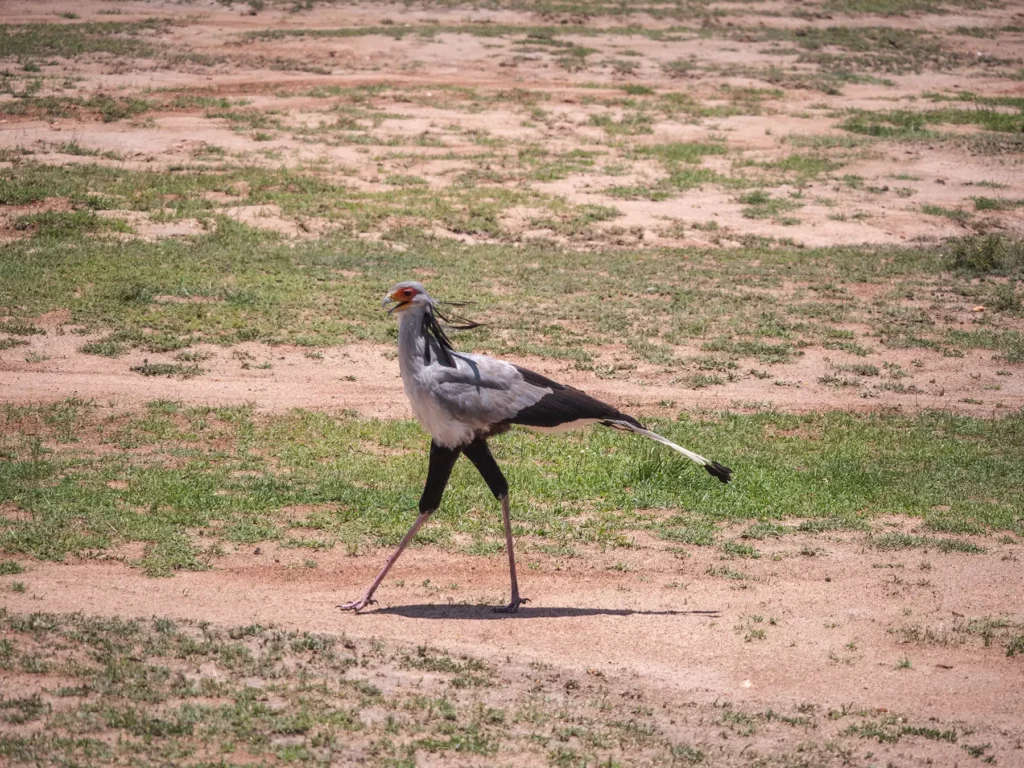
Weather & Temperatures in October
While the weather is slightly unpredictable, you can generally expect some of rain in the parks in the interior and along the coast and the islands.
Fortunately, showers are most likely to arrive in the afternoons and don’t last for too long.
Although temperatures are due to start rising, days are relatively mild and comfortable at around 25 ° C, with nights sometimes dropping to around 15° C.
Along the coast and islands temperatures are similar, but can reach 30° C on some days, and seldom drop below 20° C at night. Some rains can also be expected.
| Tanzania location | Daytime temperatures | Nighttime temperatures |
|---|---|---|
| Coastal Areas (e.g., Dar es Salaam, Zanzibar): | 25°C to 30°C (77°F to 86°F) | 20°C to 24°C (68°F to 75°F) |
| Northern Safari Circuit (e.g., Arusha, Serengeti, Ngorongoro): | 20°C to 25°C (68°F to 77°F) | 10°C to 15°C (50°F to 59°F) |
| Southern and Western Tanzania (e.g., Selous, Ruaha, Katavi) | 25°C to 30°C (77°F to 86°F) | 15°C to 20°C (59°F to 68°F). |
What are the Costs and How Busy are the Parks in October?
Mid-October to the end of November is regarded as ‘shoulder season’. Prices are low compared to high season, and parks and hotels are a lot less busy.
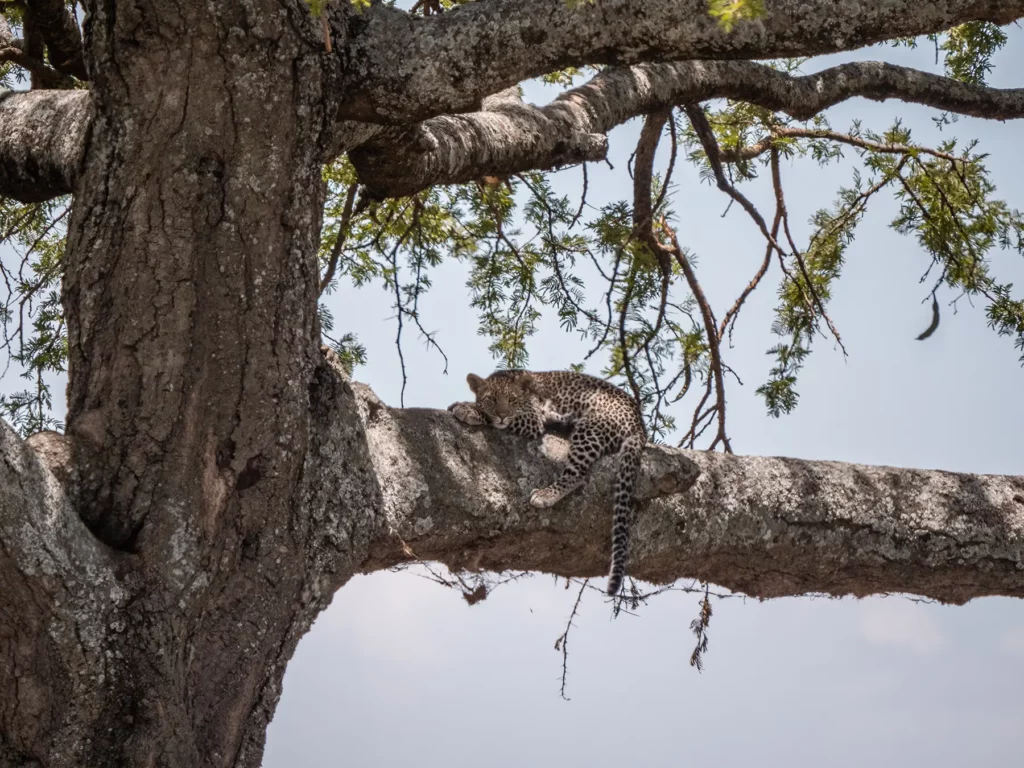
Kilimanjaro in October
The popularity of hiking Kilimanjaro starts to wane in October, which is a pity as the first half of the month can be really good. Understandably, the unpredictability of the weather puts many hikers off. However, temperatures are usually quite warm, except at the summit, which is cold throughout the year.
For avid hikers, as long as you’re properly dressed and equipped, Kili can still be hiked fairly comfortably during October. It may be wet and a little more challenging on some days, but nowhere near as wet as in March, April and May.

Zanzibar in October
Crowds in Zanzibar also start to thin out during October, particularly during the latter half as the rains begin to fall more frequently. This results in reduced accommodation prices. Despite the occasional rainfall, there are usually still plenty of sunny days to enjoy a morning chilling on the beaches or shopping and exploring the towns.
The seas are warm, calm and clear with lots of snorkelling and scuba diving opportunities available across the islands.
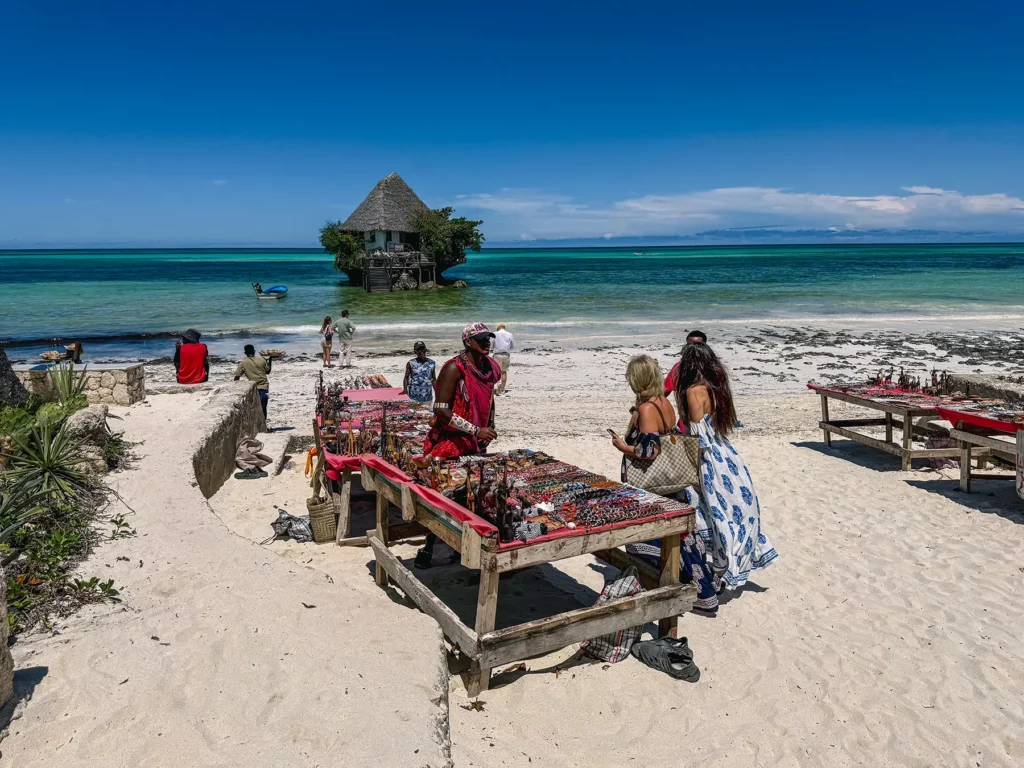
Save Time and Ensure an Incredible Safari Experience
Get quotes from the local safari companies I use to organise my own trips.
You’ll join the rapidly growing tribe of over 1,000 travellers who’ve booked their dream safari using my insider tips and recommendations.
Jump back to the List of all Months the or return to the Table of Contents.
November in Tanzania
- Good
Season: Short rainy season
November is good for travellers who want to see baby animals starting to be born and whilst there may be some rain, the weather is still pretty good and prices can be slightly lower than peak period.
November Ratings Overview
Below are November’s ratings for wildlife, the great wildebeest migration, Zanzibar, busyness, and weather.
- Excellent
- Good
- OK
- Poor
Wildlife
Migration
Zanzibar
Busyness
Weather
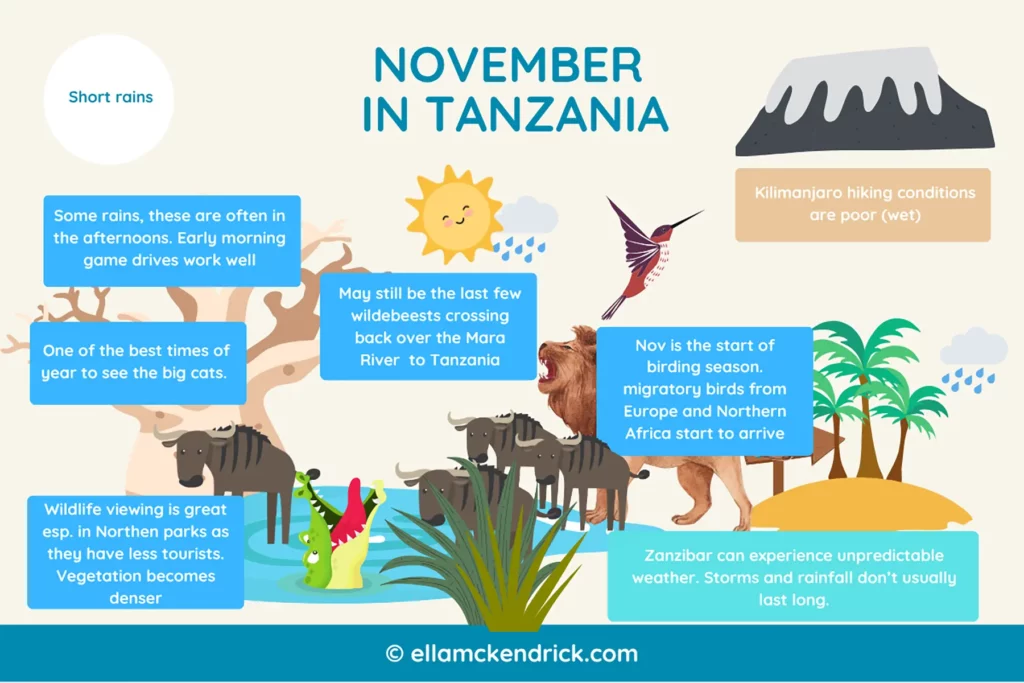
Parks and hotels are less busy and if you don’t mind being caught in the occasional afternoon shower, you can enjoy wildlife viewing with quieter parks compared to the peak period.
November is actually one of my favourite times of year to visit Tanzania. The looming short rains put off many visitors and as a result accommodation prices are more favourable. If you consider that rainfall is most likely in the afternoons and evenings, and it doesn’t rain every day, a safari in November is still worthwhile.
On my visit to Tanzania in November, I experienced dry days every single day – it only rained at night. However, the heavy rainfall did mean some places, such as Lake Natron, were out of bounds due to flooding on the roads.
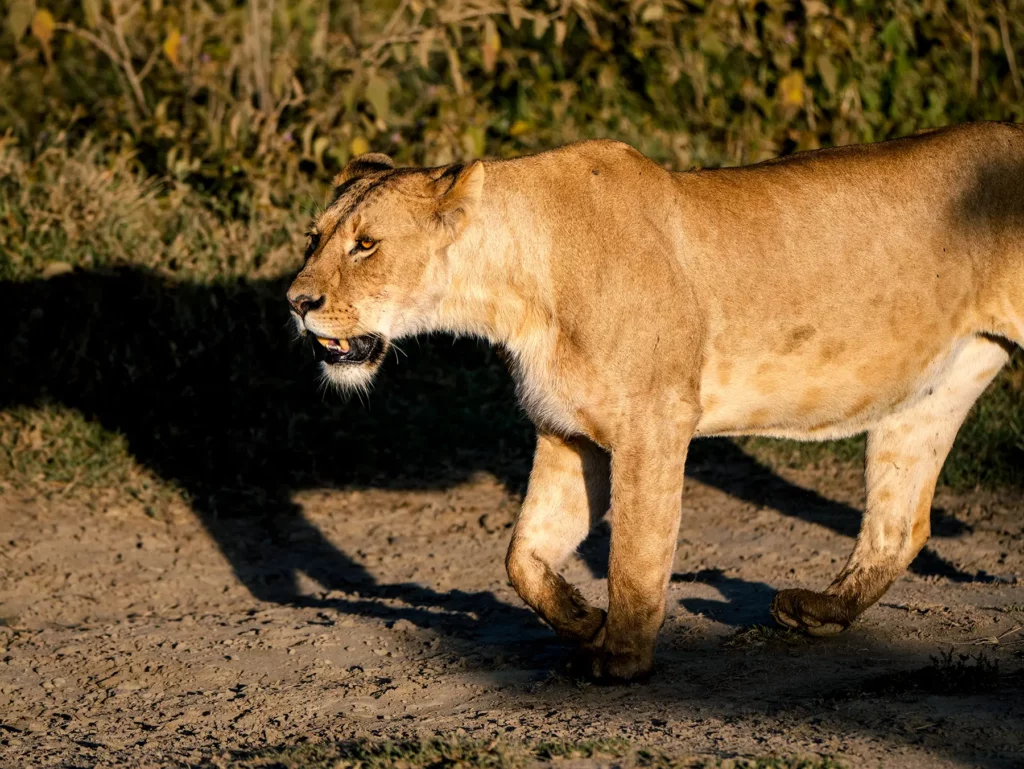
Pros of November in Tanzania
- Accommodation costs are low
- Fewer visitors in the parks
- Abundant wildlife
- Migratory herds have arrived back on the southern plains
- Migratory birds arrive from the Northern Hemisphere
- Black rhinos are easier to spot in Ngorongoro Crater as the fresh long grass brings them out into the open to graze
Cons of November in Tanzania
- Rains are unpredictable, but occur mostly in the afternoons
- Kilimanjaro is mostly muddy and wet
- Rains could make game viewing difficult
- Mosquitos start to become a nuisance once again
Best Tanzania Parks and Reserves in November
Below are Tanzania’s most popular destinations which are ranked as either excellent or good for this month.






My Personal Experience Visting Tanzania in November
You can view a video of my personal experience going on a Tanzania safari in November below.
Wildlife Viewing in November
Wildlife viewing is good during November, although the rains and dense foliage may make animals slightly more difficult to spot compared to the proceeding months.
Predators can sometimes be easier to spot at this time of year as their golden pelts stand out more against a green backdrop. The low number of vehicles may allow you to get closer to the wildlife than usual, and you’ll certainly have a number of special sightings to yourself.
Additionally, many herbivores such as gazelles and zebras start to give birth at this time of year, meaning that in addition to seeing an abundance of new life, witnessing a successful hunt is also on the cards.
How to Book with the Best Local Safari Companies
- Comparison sites which provide multiple quotes from verified suppliers such as Safaris By Ella
Join the rapidly growing tribe of over 1,000 travellers who’ve booked their dream safari using my insider tips and recommendations.
The Great Migration in November
By mid-November, the migration herds would have crossed the Mara River back into Tanzania’s Serengeti from Kenya’s Maasai Mara and are well on their way back to the southern Serengeti plains. This period provides excellent opportunities to witness the big cats in action around central Serengeti as they congregate around the wildebeest and zebra herds.
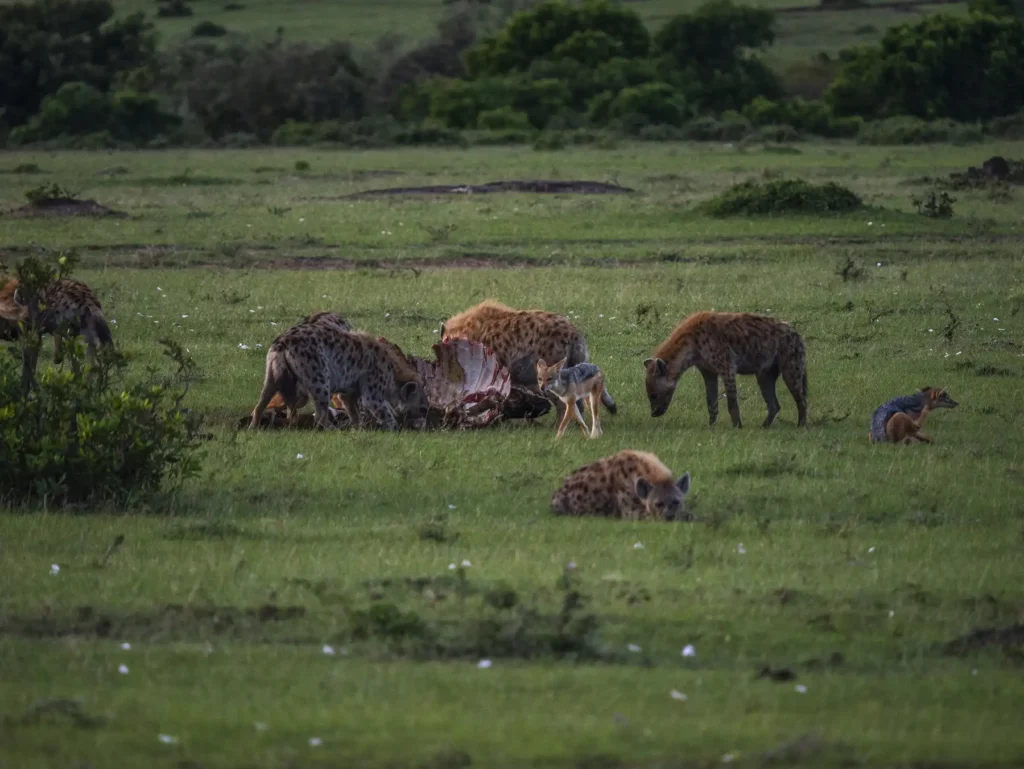
Birdwatching in November
November is a good time for birdwatching as the European, North African and Asian migrants are arriving en masse. At the same time, it’s courting season for the local birds, who are beginning to display their bright breeding plumage.
In the lakes, the flamingo breeding season is in full swing with thousands of these elegant birds adding a vibrant splash of pink to the lush green landscape.
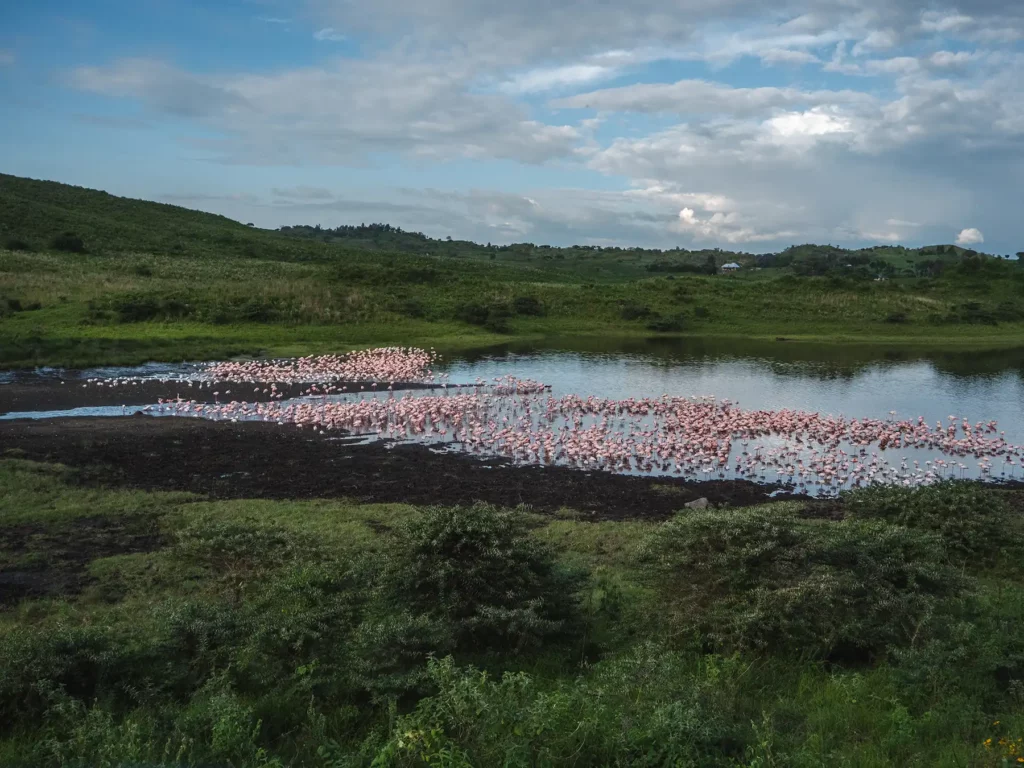
Weather & Temperatures in November
The one thing that you can expect with certainty in November is rain. Fortunately, it mostly rains during the afternoons, and showers are light and don’t last too long. This allows ample time to go on morning game drives, explore the old Stone Town on Zanzibar or chill on a beach.
Despite the rain, temperatures remain pretty comfortable, averaging around the upper 20s° C and seldom dropping below 18° C at night.
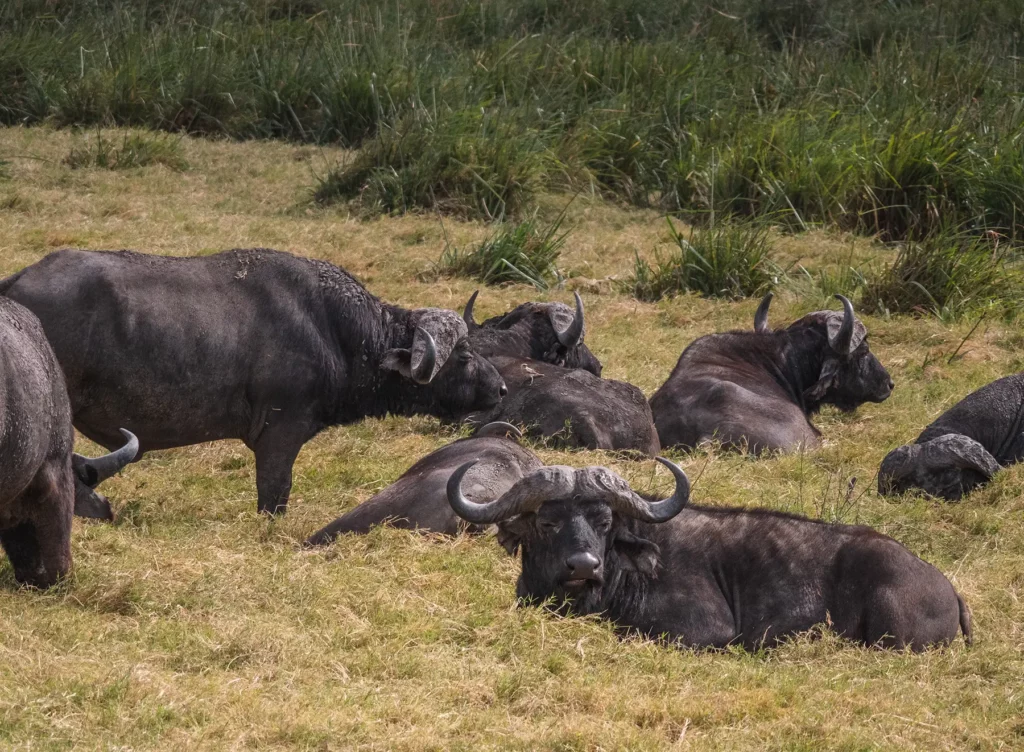
| Tanzania location | Daytime temperatures | Nighttime temperatures |
|---|---|---|
| Coastal Areas (e.g., Dar es Salaam, Zanzibar): | 25°C to 30°C (77°F to 86°F) | 20°C to 24°C (68°F to 75°F) |
| Northern Safari Circuit (e.g., Arusha, Serengeti, Ngorongoro): | 20°C to 25°C (68°F to 77°F) | 10°C to 15°C (50°F to 59°F) |
| Southern and Western Tanzania (e.g., Selous, Ruaha, Katavi) | 25°C to 30°C (77°F to 86°F) | 15°C to 20°C (59°F to 68°F). |
What are the Costs and How Busy are the Parks in November?
Costs remain lower during the ‘shoulder season’ which lasts until mid-December and parks are much quieter during November.
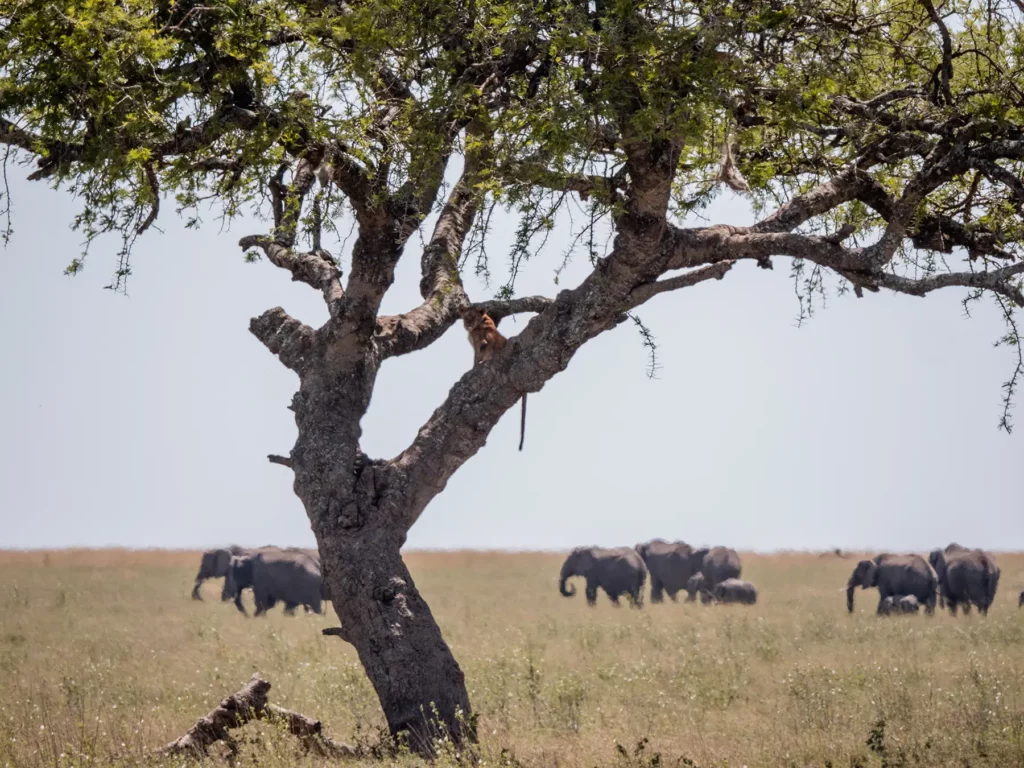
Kilimanjaro in November
Hiking up Kilimanjaro in November can be challenging as the trails and slopes are usually wet, muddy and slippery. Trails are, however, pretty quiet.
The constant cloud cover does not make for good scenic photography, but you can still capture magical pictures of the misty snow-capped peak.
Temperatures are generally warm and comfortable along the lower slopes.
Zanzibar in November
The main advantages of visiting Zanzibar in November are the lower prices and great snorkelling and scuba diving conditions. The unpredictable threat of rain puts most people off, although there is still plenty of sunshine to enjoy a morning on the beach or in the town.
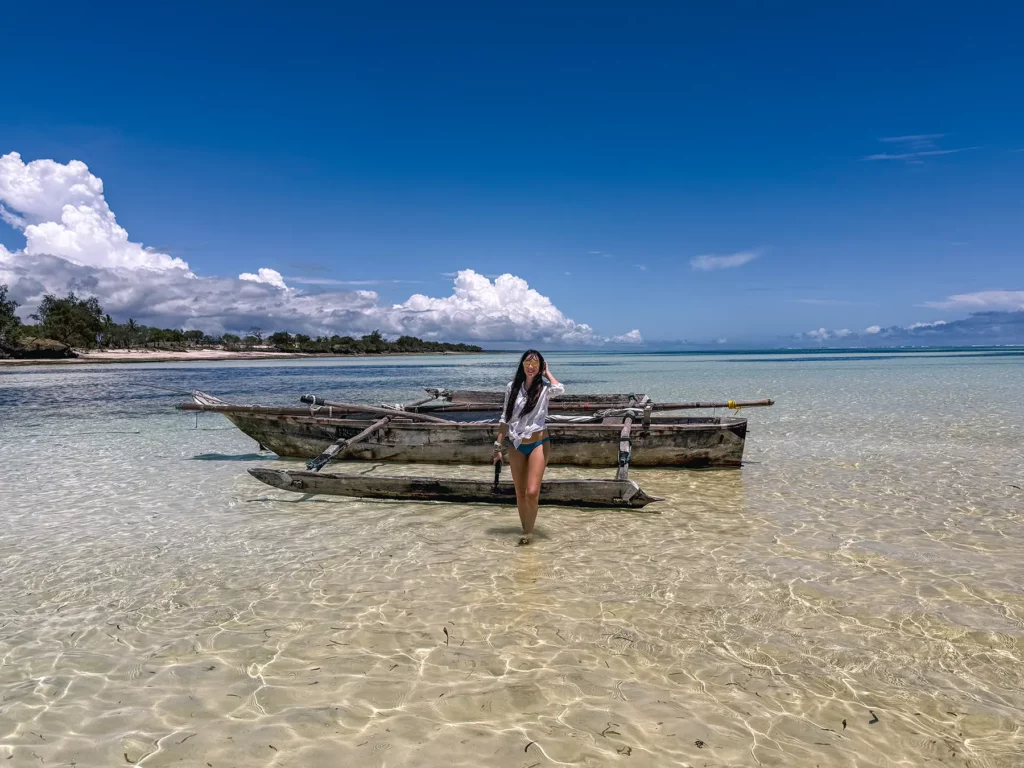
Save Time and Ensure an Incredible Safari Experience
Get quotes from the local safari companies I use to organise my own trips.
You’ll join the rapidly growing tribe of over 1,000 travellers who’ve booked their dream safari using my insider tips and recommendations.
Jump back to the List of all Months the or return to the Table of Contents.
December in Tanzania
- Good
Season: Short rainy season
December is good for birding enthusiasts and visitors who want to see baby animals and fairly reliable weather and whilst not as busy as the peak period it’s still popular time to go.
December in Tanzania can be quite unpredictable as it heralds the end of the wet season and the beginning of the short dry season. Hours of sunshine start to increase with each day, but there will often be some rain.
December Ratings Overview
Below are December’s ratings for wildlife, the great wildebeest migration, Zanzibar, busyness, and weather.
- Excellent
- Good
- OK
- Poor
Wildlife
Migration
Zanzibar
Busyness
Weather
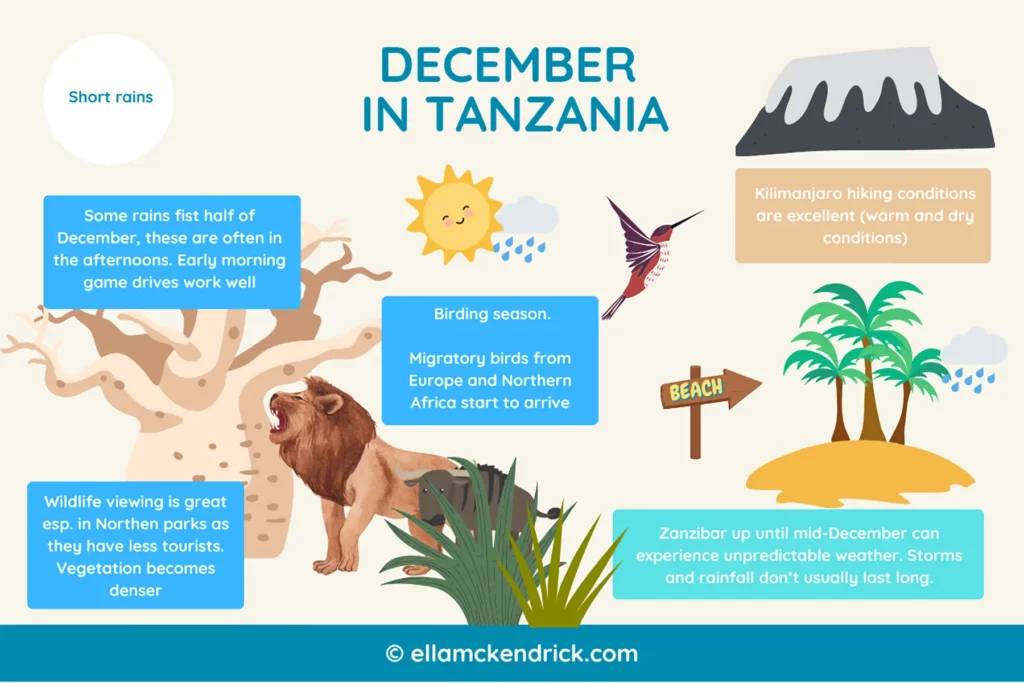
Tourism during December remains relatively quiet in Tanzania, with the exception of Christmas and New Year. It’s a great time for game viewing and birdwatching, and temperatures remain comfortably warm. Kilimanjaro and Zanzibar start to dry out and begin to get busy again, especially the latter half of the month.
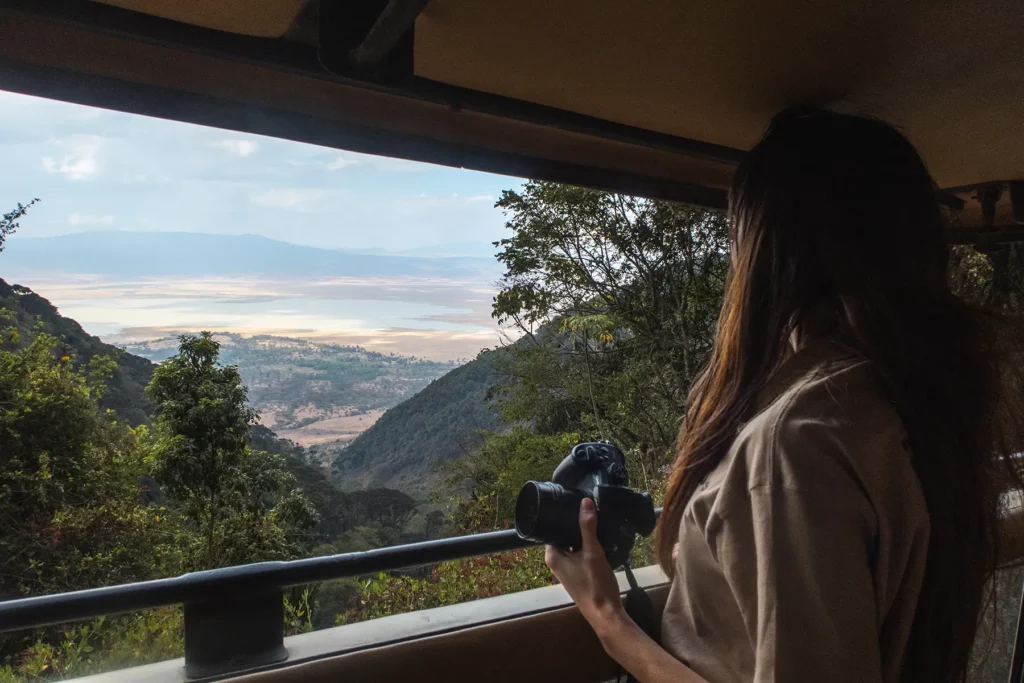
Pros of December in Tanzania
- Prices remain shoulder season until 15th December
- Fewer visitors in the parks make for better game viewing
- More sunshine hours than November
- Good time for Kilimanjaro
- The wildebeest are back and begin calving
- Good time for bird watchers
- Black rhinos are easier to spot in Ngorongoro Crater as the fresh long grass brings them out into the open to graze
Cons of December in Tanzania
- Unpredictable weather
- Prices start to rise after the 15th December
- Lush vegetation makes animals and birds difficult to spot
- More mosquitos compared to the period between June and November
Best Tanzania Parks and Reserves in December
Below are Tanzania’s most popular destinations which are ranked as either excellent or good in December.





Wildlife Viewing in December
Wildlife viewing is great in December. The migratory herds are back in the southern plains again and herbivores are starting to give birth, bringing out the big cats. Much, of course, depends on the timing of the rains.
This is also a fantastic time for photography, with lush green landscapes, dramatic skies, and active wildlife. While some roads may become muddy, the scenery and predator action more than make up for it.
How to Book with the Best Local Safari Companies
- Comparison sites which provide multiple quotes from verified suppliers such as Safaris By Ella
Join the rapidly growing tribe of over 1,000 travellers who’ve booked their dream safari using my insider tips and recommendations.
The Great Migration in December
The Great Wildebeest Migration should have now settled in the Ndutu plains in the south of Serengeti. They will remain there for the next 4-5 months, grazing on the lush grasses and foliage, giving birth and raising their young, until the long rains cease and the landscape begins to dry out. Then it’s time to move North.
Birdwatching in December
December is the start of the ‘official’ birdwatching season. The recent rains have nourished the landscape, providing food and cover for the birds just in time for their breeding and nesting season. The migratory species have also by now arrived in large numbers, adding more variety to the over 1,000 species of birds that already live in Tanzania, making December a bird watcher’s paradise.
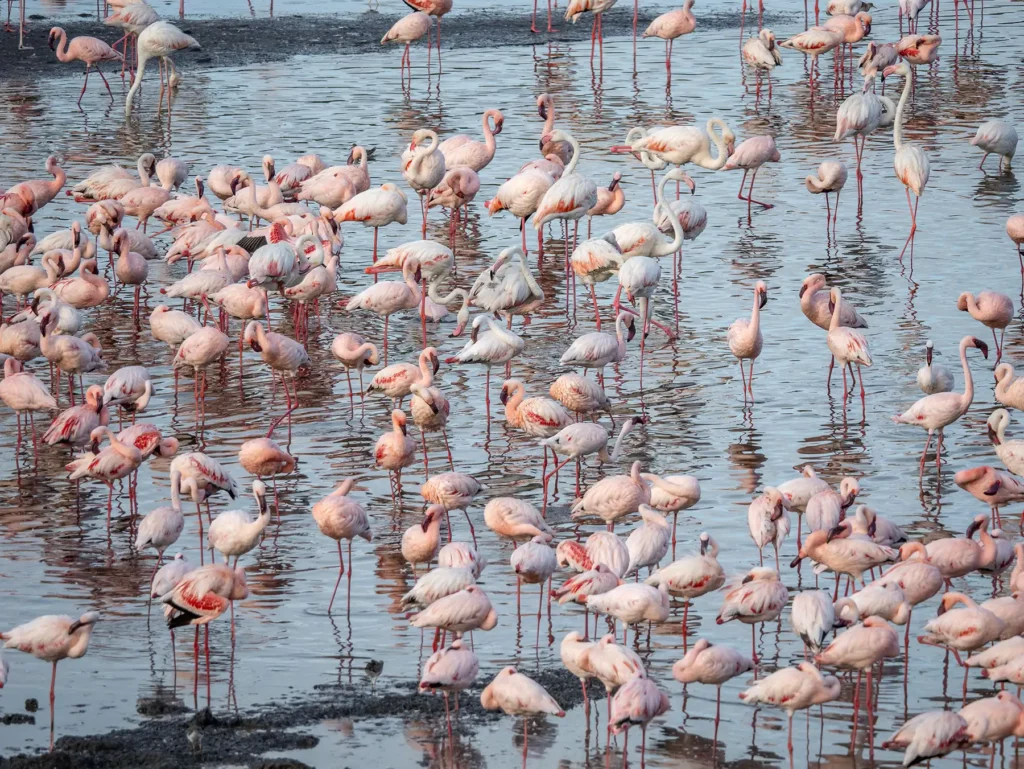
Weather & Temperatures in December
With the change of the seasons, the weather is unpredictable during December, but the sun does begin to make more regular and longer appearances with each day.
Temperatures can get quite warm, reaching 30° C or higher during the day in the game parks, and dropping to the lower 20s° C at night. It can also get quite humid.
Along the coast and on the islands it can get much warmer, and more humid, with the mercury reaching 35°C.
But as with November, in both Zanzibar and the game parks the rains normally fall in the afternoons. this means that morning game drives and visits to the beach are generally pleasant.
| Tanzania location | Daytime temperatures | Nighttime temperatures |
|---|---|---|
| Coastal Areas (e.g., Dar es Salaam, Zanzibar): | 25°C to 30°C (77°F to 86°F) | 20°C to 24°C (68°F to 75°F) |
| Northern Safari Circuit (e.g., Arusha, Serengeti, Ngorongoro): | 20°C to 25°C (68°F to 77°F) | 10°C to 15°C (50°F to 59°F) |
| Southern and Western Tanzania (e.g., Selous, Ruaha, Katavi) | 25°C to 30°C (77°F to 86°F) | 15°C to 20°C (59°F to 68°F). |
What are the Costs and How Busy are the Parks in December
From the middle of December, prices rise slightly and the parks do start to get busier, but nowhere near as busy as during the peak long dry season.
If you want to beat the crowds and higher prices, I’d avoid visiting Tanzania around Christmas and New Year as this is an extremely popular time of year.

Kilimanjaro in December
December through to January is the second busiest time for hiking Kilimanjaro. Although there is a good chance of rain and cloud cover on the lower altitudes, the higher slopes are normally clear and dry, except for the ever-present snow on the peak. Sunrises from the Uhuru Peak are absolutely breathtaking at this time of year.
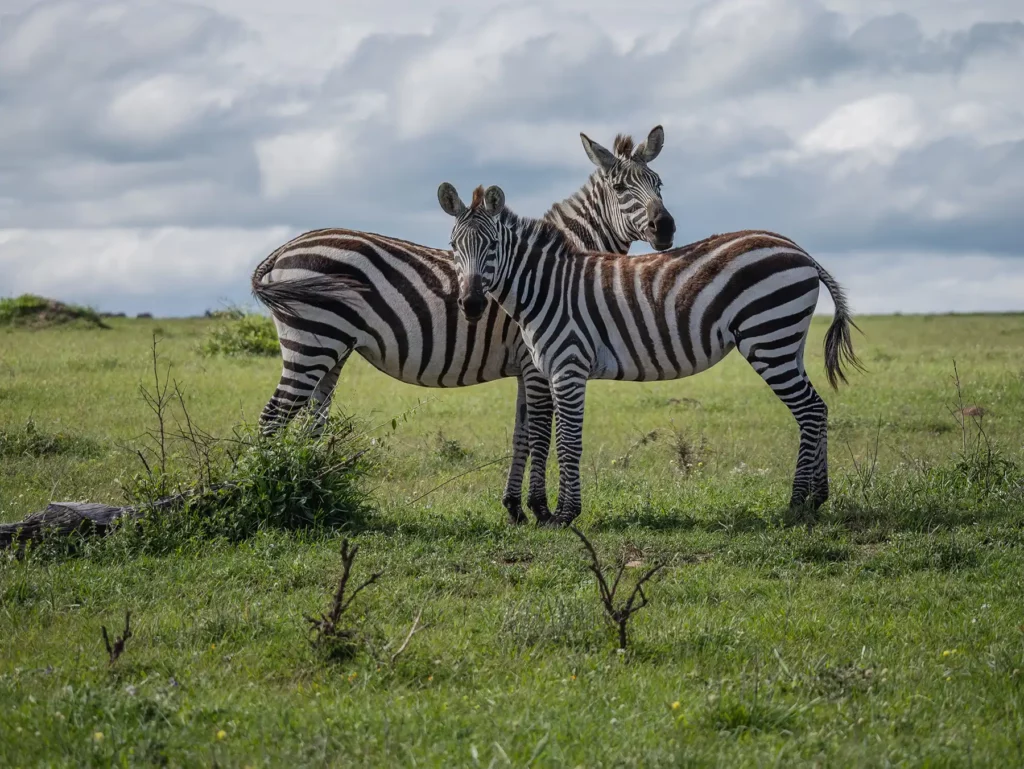
Zanzibar in December
December marks the end of the wet season and the start of the short dry season. The first half of the month tends to have more rain, which decreases during the latter half. Showers are light and short, and happen mostly in the late afternoons.
Hotels and beaches start to fill up after the quieter wet season and there is generally a festive atmosphere on the streets and beaches of Zanzibar. Stone Town is abuzz with several cultural celebrations and feasts taking place almost daily, adding to the already relaxed tropical island feel. All in all, a wonderful time to visit Zanzibar.
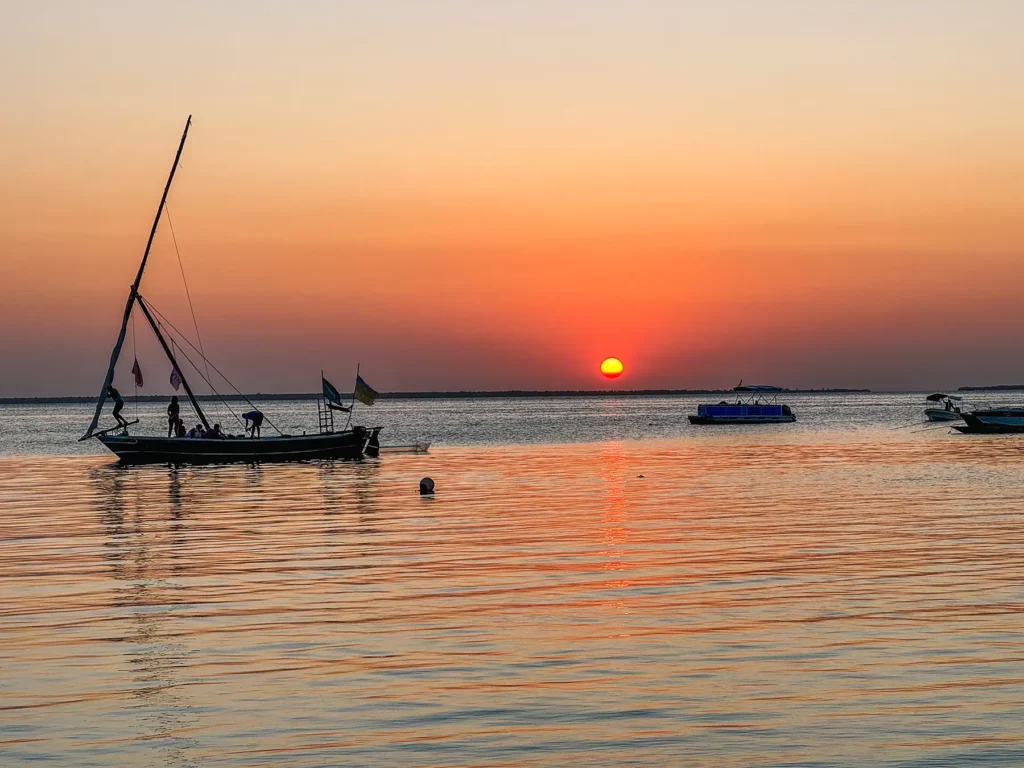
Save time and ensure an incredible safari experience
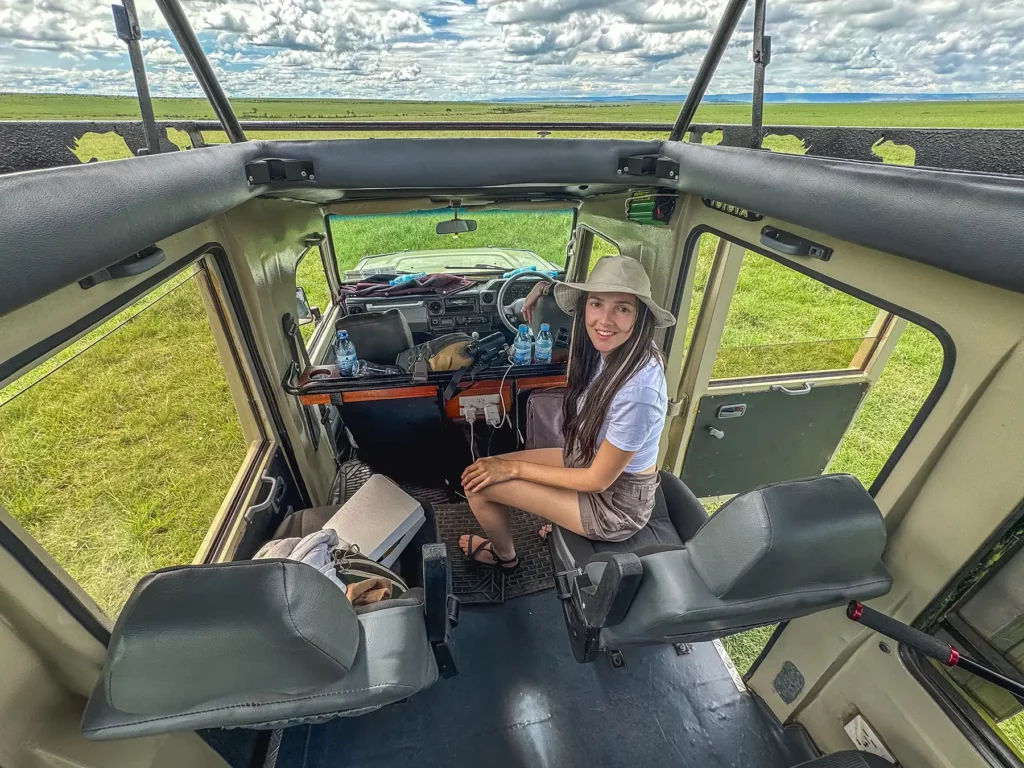
Get quotes from the local tour companies I use to organise my own trips.
You’ll join the rapidly growing tribe of over 1,000 travellers who’ve booked their dream safari using my insider tips and recommendations.
Jump back to the List of all Months the or return to the Table of Contents.
Best Time to Visit Tanzania for Safari
Below I’ve ranked each month in Tanzania for safari.
- Excellent
- Good
- OK
- Poor
The best time to go on safari in Tanzania would be during the long dry season, between June and mid-October when wildlife congregates around water holes and the climax of the great wildebeest migration , the Mara River crossing, is in full swing.
The herds have to cross two dangerous rivers, the Grumeti River between May and July and the Mara River between July and September and then back around September and October.
My personal favourite month to visit Tanzania for safari is September. The weather is incredible, it’s less busy than peak season in August, and it’s also better value for money. The Mara River crossing, part of the Great Wildebeest Migration, is in full swing in Northern Serengeti.
What’s more, big cat spotting is out of this world! Last but not least, Zanzibar is also great at this time of year.
The second best time of year to enjoy a safari in Tanzania is between January and mid-March. January to March is regarded as the calving season. During that time over 8,000 baby animals, mainly wildebeest, zebras and various antelope species are born each day in the southern Ndutu Plains of the Serengeti Ecosystem.
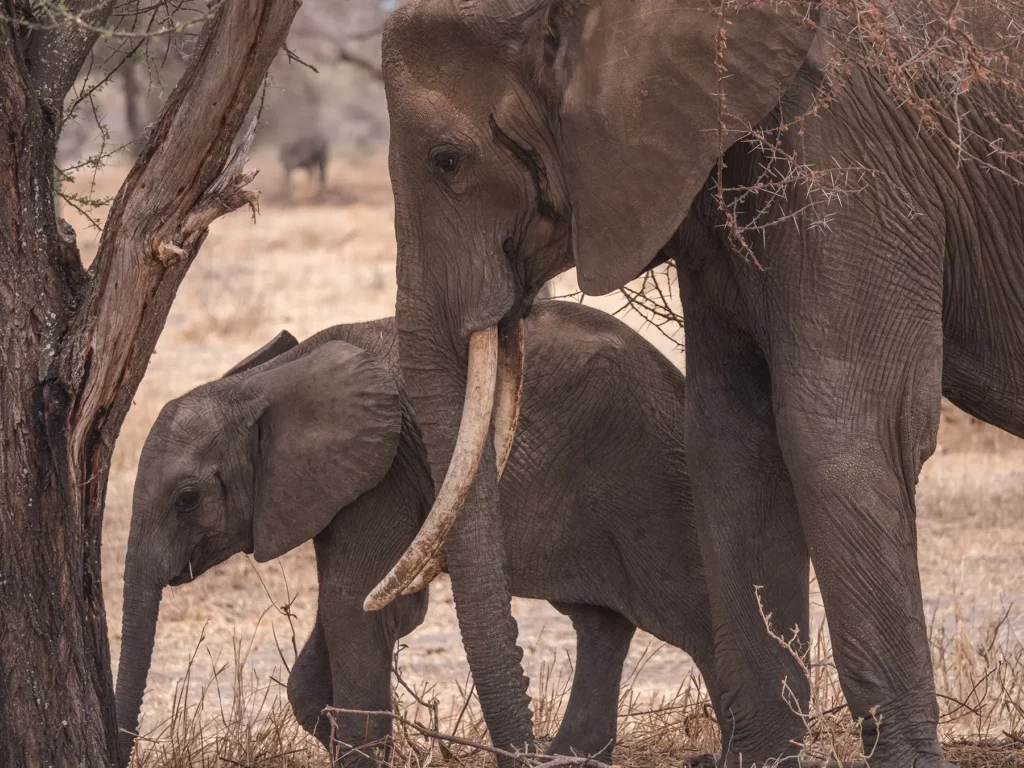
Worst Time to Visit Tanzania for Safari
The worst time of year to go on safari in Tanzania is between mid-March and mid-May as this is the long rainy season. Although wildlife viewing is still good at this time of year, the strong rains can really put a dampener on your experience.
Flooding is also possible at this time of year which can cause roads to close.
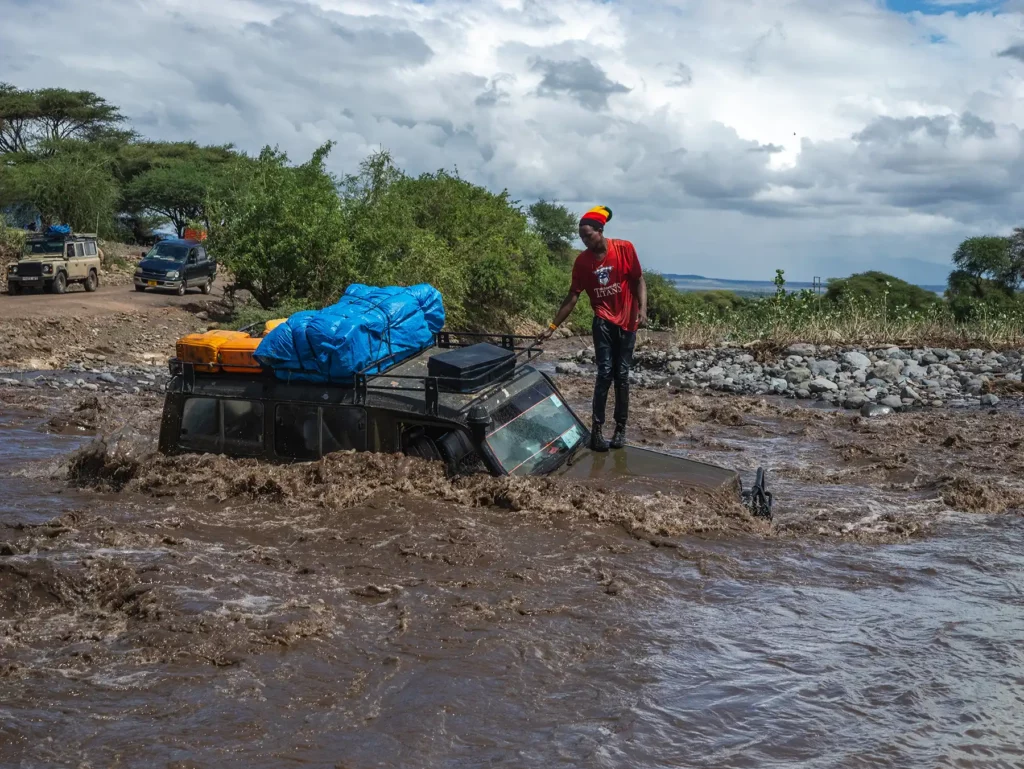
Best Time to Visit Tanzania for the Great Wildebeest Migration
The best time to visit Tanzania to see the great wildebeest migration is late July to mid-October when millions of wildebeests cross the crocodile-infested Mara River in the north of the Serengeti into the Maasai Mara and then back again.
The second best time is the January to mid-March when you can witness the wildebeest calving and related big cat activity on the Ndutu planes in Southern Serengeti.
The third best time is May to July when you have the chance to see millions of wildebeests crossing the Grumeti river in Tanzania’s Western Corridor.
You can see where the wildebeests are month by month in the graphic below:
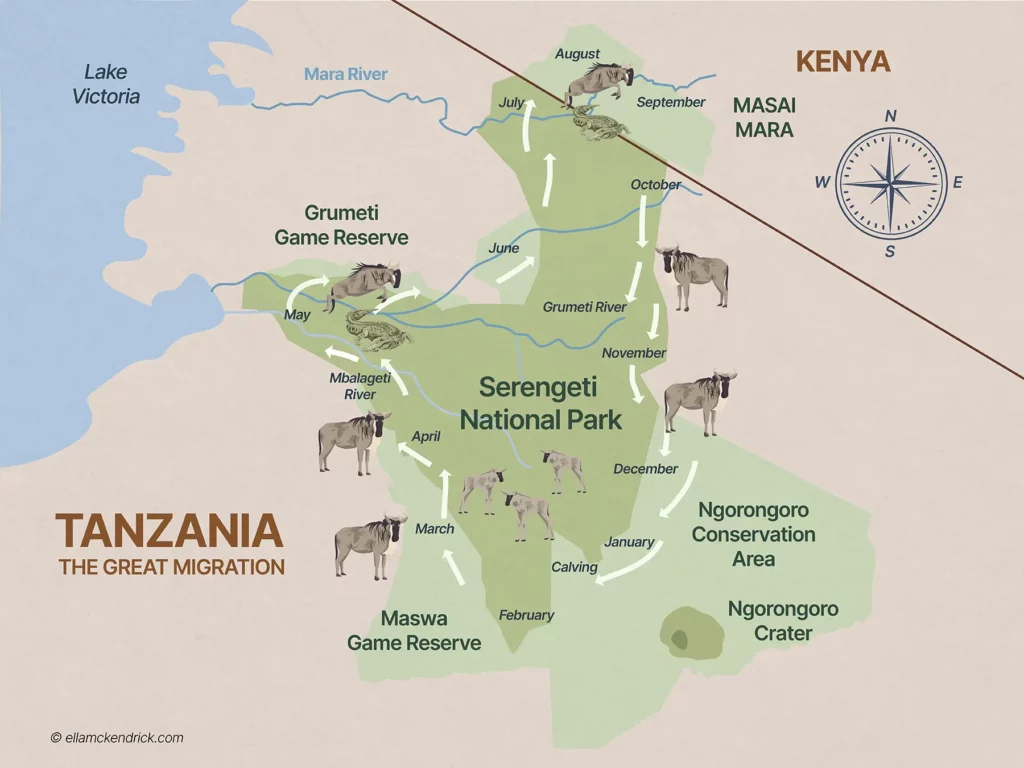
Below I’ve ranked each month in for viewing the great wildebeest migration in Tanzania.
- Excellent
- Good
- OK
- Poor
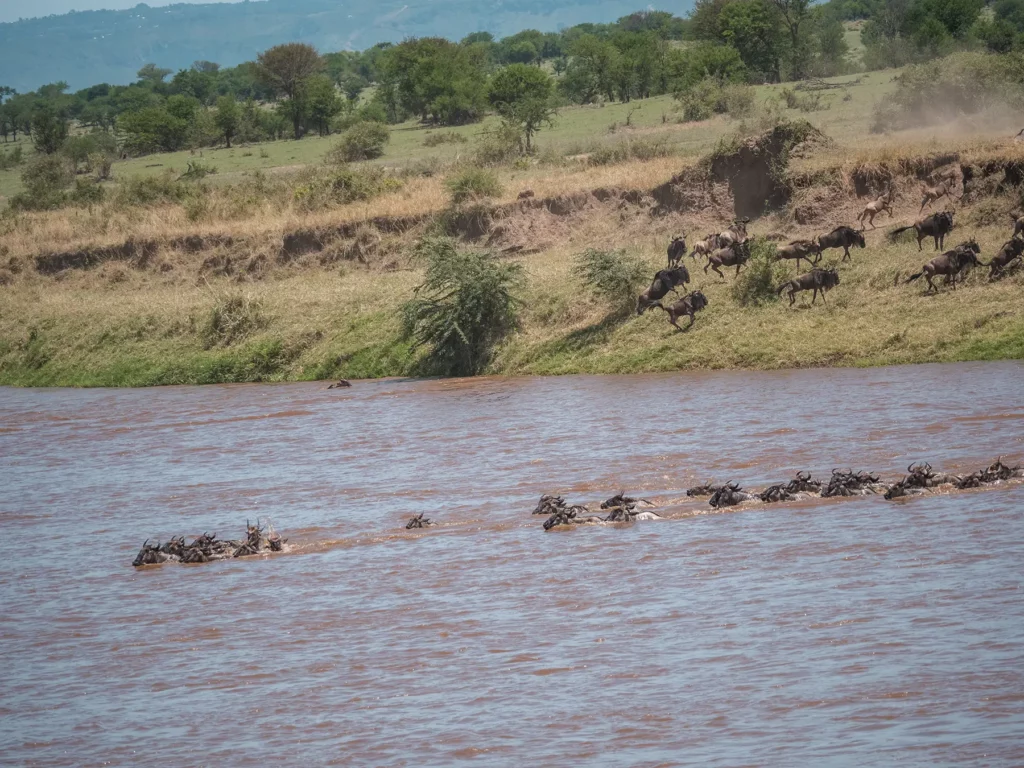
For more information see my guide on the Great Wildebeest Migration highlights.
Best Time to Visit Tanzania for Baby Animals
The best time to visit Tanzania to see baby animals is January and February when the great migration wildebeest calving is in full swing with up to 8,000 babies born per day on the southern plains of the Serengeti around the Ndutu planes.
Below I’ve ranked each month Tanzania in for seeing baby animals.
- Excellent
- Good
- OK
- Poor
The fertility of the southern plains is due to volcanic ash from the long-collapsed Kerimasi and Ol Doinyo Lengai volcanoes. Ol Doinyo Lengai is still active and continues to contribute unique mineral-rich ash.
This creates ideal conditions for the calving season to begin. During these two months or so, over 8,000 baby animals are born each day, attracting many visitors to the area to witness this miracle of nature. The sudden abundance of easy prey also attracts many predators to the area, who also need to eat and feed their own young.
I don’t know about you, but seeing a baby wildebeest being born and immediately trying to stand up on its wobbly legs just has to bring a smile to your face.
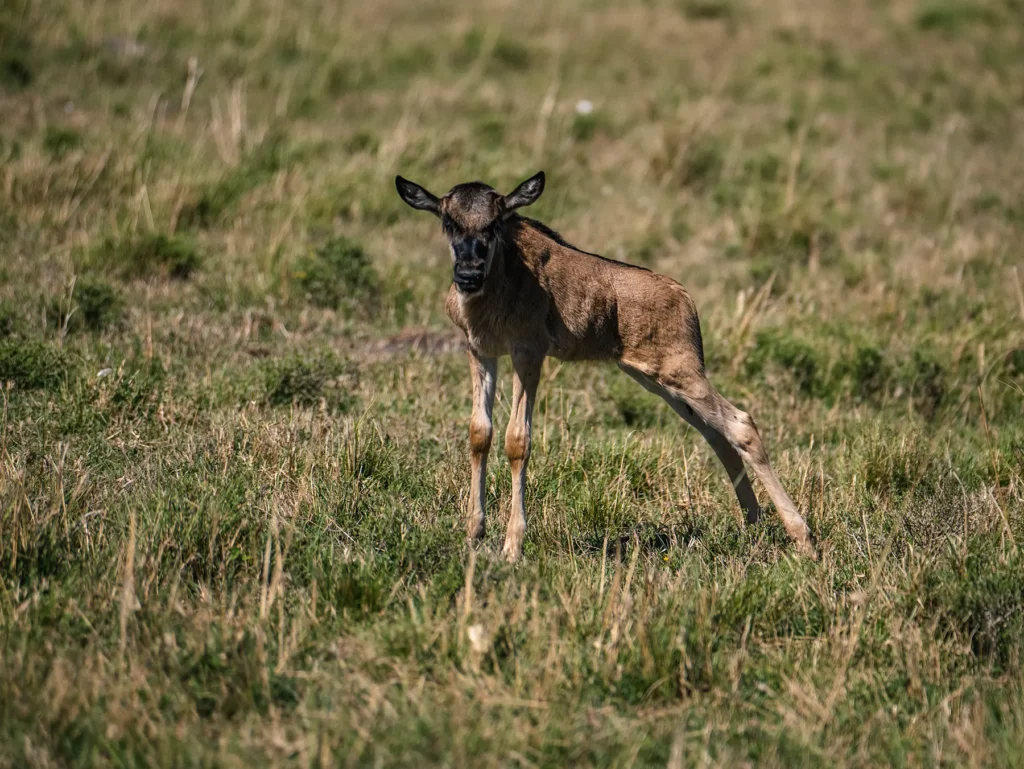
For the new-borns, their first challenge in life is to stand up and be running with the herds within minutes if they are to survive the next few days. Many do not. It’s hard to believe that within a few months, they will be joining the herds on their first migration across the entire Serengeti, a distance of 1,000 kilometres, enduring many perils along the way.
Other herbivores start to give birth with the arrival of the short rains in November. Gazelles, impalas, giraffes and zebras are some of the many animals that start to have their young. Therefore the second best time to see baby animals in Tanzania is November and December.
Predators such as lions and leopards have their young throughout the year. Their breeding cycle is triggered by their previous young either becoming independent or being lost. This can happen at any time of year.
You’re most likely to see an abundance of lion cubs a few months after a pride takeover as the new males try to secure their bloodline by eliminating previous cubs and fathering their own as soon as possible.

Best Time to Visit the Top Safari Parks in Tanzania
Below I’ve provided guidance on the best times to visit Tanzania’s most popular National Parks and reserves.
Quick Links to the Parks
Northern Circuit: Serengeti | Ngorongoro Crater | Tarangire | Lake Manyara | Arusha NP
Best Time to Visit Serengeti National Park
Tanzania’s huge Serengeti National Park is the home of the great wildebeest migration and boasts a super high density of big cats which helps make it one of the best safari reserves in the world.
The very best time to visit Serengeti National Park is during the wildebeest Mara River crossing – the highlight of The Great Wildebeest Migration.
Two million Wildebeests cross the crocodile-infested Mara River in Northern Serengeti around late July, August and then back again around September and October. Times can vary slightly each year so August or early September would be the safest bet.
Below I’ve ranked each month in Serengeti National Park.
- Excellent
- Good
- OK
- Poor
The infographic below shows what you can expect in each month.
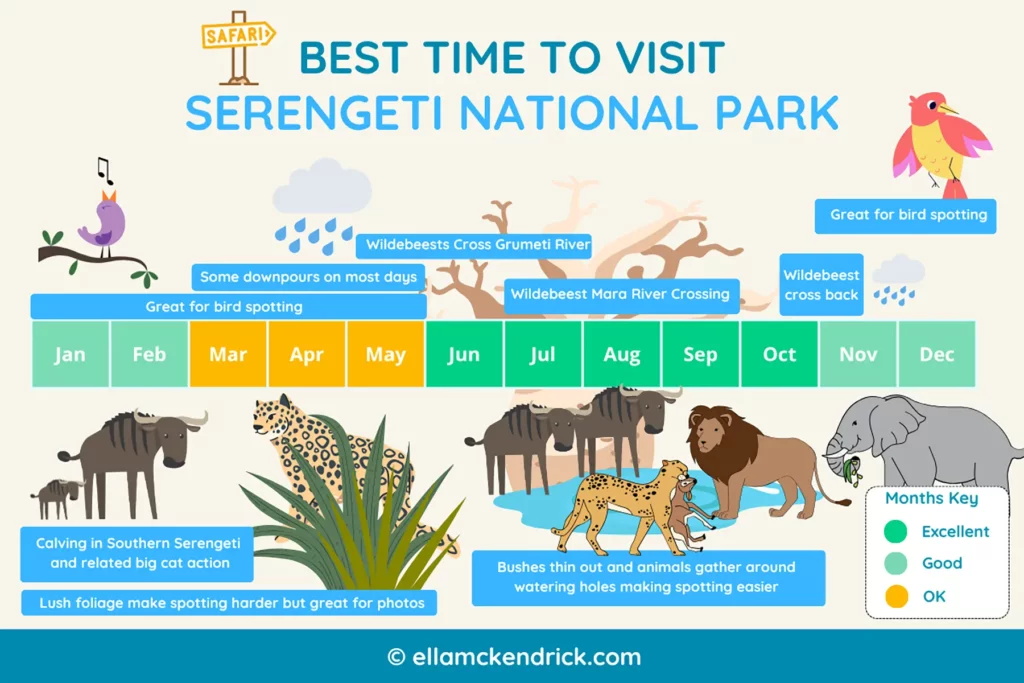
June to October (dry season) – as there is little to no rain in this period, the bush begins thinning out and the landscapes turn from green to orange. With water suddenly scares, animals start to congregate around water holes. Both these factors make wildlife viewing much easier in this period.
The sun shines and the weather is great during this period with temperatures around 25°C / 77°F.
There are fewer mosquitos at this time of year which reduces the risk of malaria.
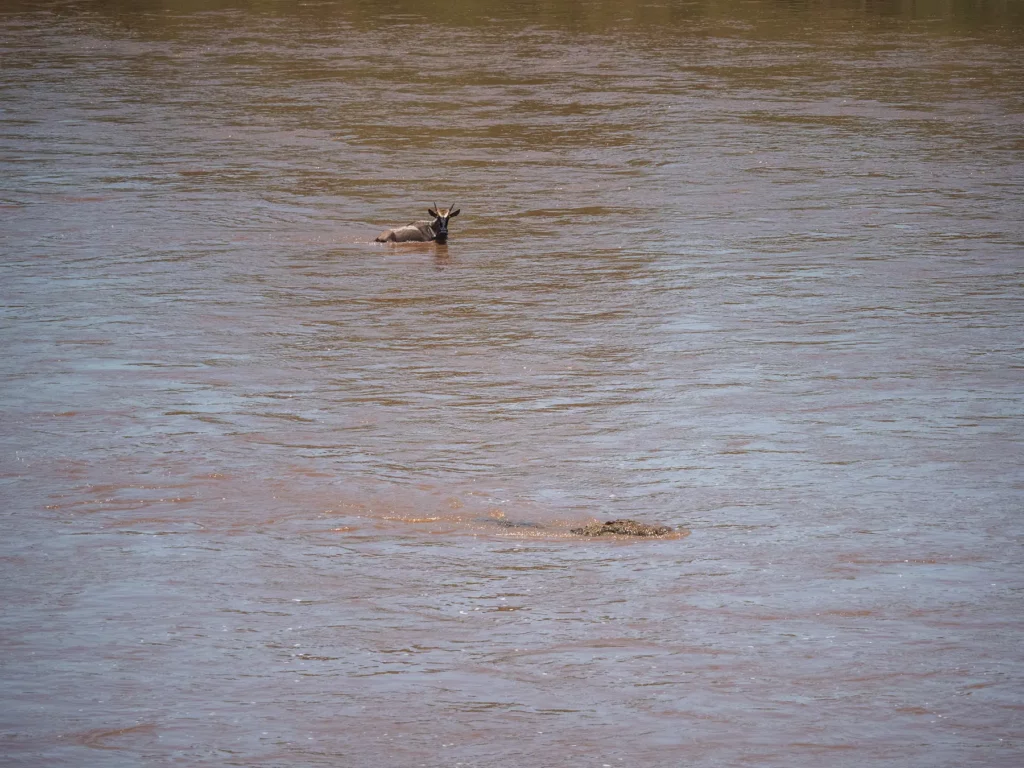
The highlights of the one of the earth’s greatest wildlife spectacles, The Great Migration takes place during this period. The Grumeti river crossing takes place in Tanzania’s western corridor around May to July.
Around mid-July to September the famous Mara River crossing takes place in northern Serengeti as the wildebeests cross from Tanzania to the Masai Mara in Kenya. mid-October to mid-November the wildebeests cross back over the Mara River into Tanzania again for calving.
The parks can get crowded at this time of year, although due to the size of parks such as Serengeti and Tanzania’s higher costs they are never as busy as other safari destinations such as Kenya. Temperatures can drop to 14°C / 57°F at night.
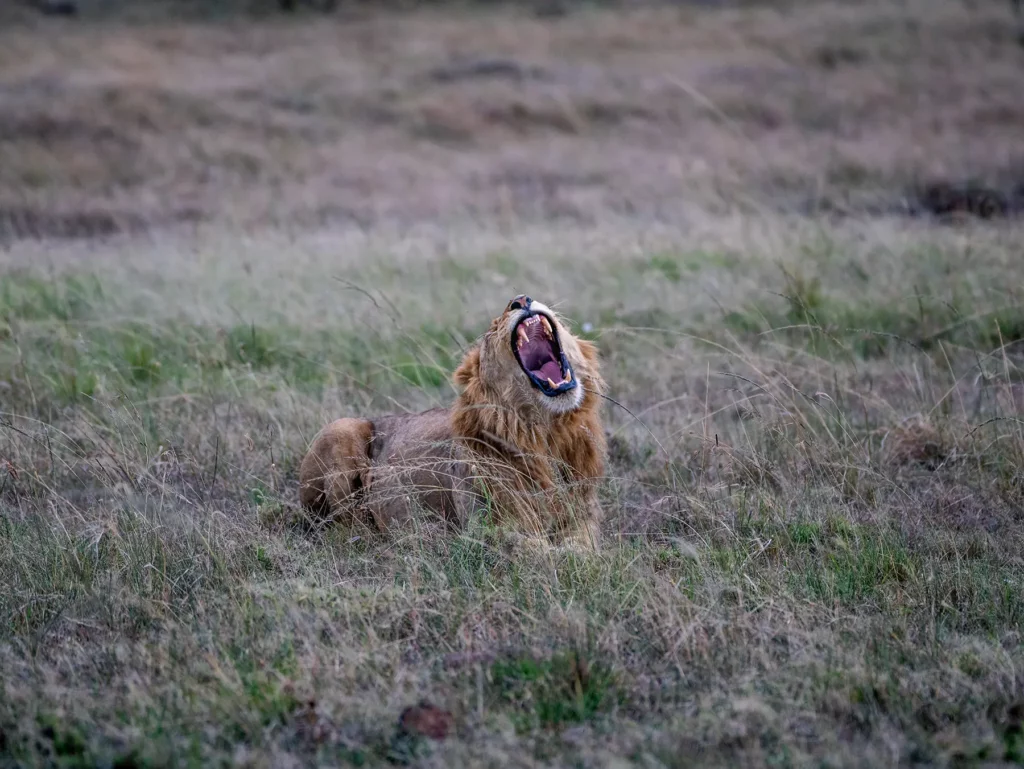
If you want to see baby animals and the related big cat activity, then January and February are your best bet as the wildebeests are calving in Southern Serengeti which attracts the big cats.
November is also excellent for big cats as other herbivores give birth around this time. Parks are also quiet in terms of tourists at this time of year, making spotting easier. However, you do have to contend with denser vegetation.

Best Time to Visit Ngorongoro Crater
Formed from a collapsed volcano, Ngorongoro Crater is often referred to as Tanzania’s “Garden of Eden.” It offers one of the best chances to see rare black rhinos in the wild and has the highest density of lions in the country.
Ngorongoro Crater is great for safari all year round as most animals don’t migrate. The crater is probably one of the best opportunities you will ever have to spot the endangered black rhino in the wild.
Below I’ve ranked each month in the Ngorongoro Crater.
- Excellent
- Good
- OK
- Poor
The infographic below shows what you can expect in each month.

The best time to see lots of baby animals in a lush and green environment such as zebras and wildebeests is the beginning of the year.
If you want to see as many animals as possible, visibility is best in the long dry season between June and October.
Birdwatching is great all year round. However November to April sees the arrival of the migratory birds from Europe and North Africa. This time of year is also breeding season for the resident birds, which allows you to see them with their beautiful plumage.

Black rhinos are easier to spot in Ngorongoro Crater in the wet seasons as the fresh, long grass brings them out into the open to graze.
The most spectacular landscapes and flowers are during the wet season. Lake Magadi’s higher water levels at this time draw in more flamingos.
There are usually afternoon showers in the short rainy season, in November and December. However it’s quite easy to plan your safaris around the rain.
The heavy downpours in the long rainy season make safaris a little more challenging.
Learn more by reading my guide to a Ngorongoro Crater safari.
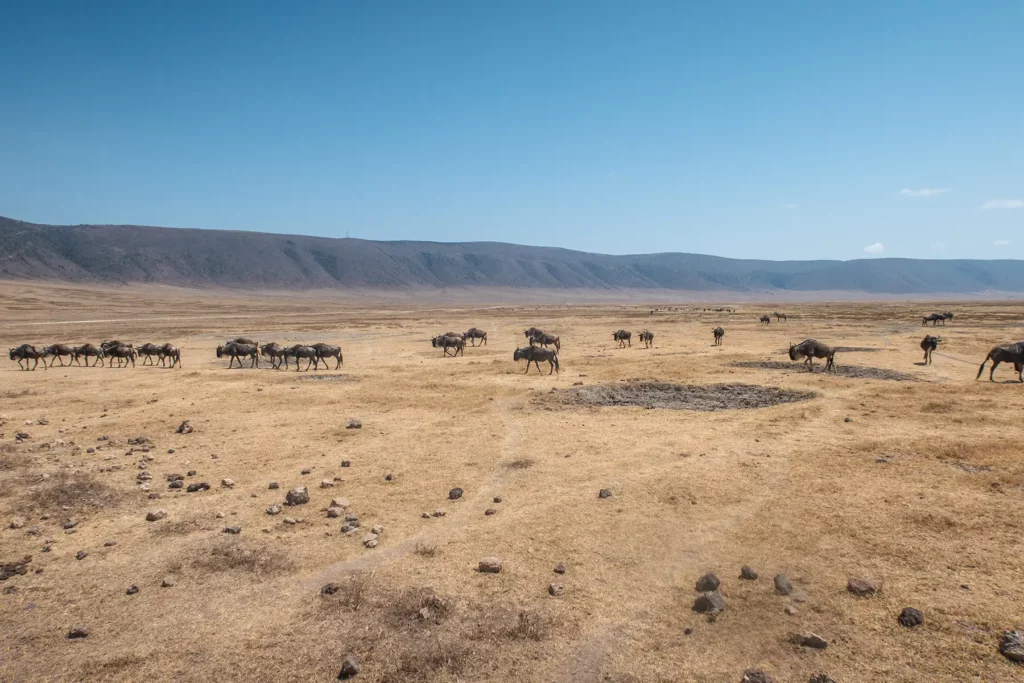
Best Time to Visit Tarangire National Park
Tarangire National Park is is part of Tanzania’s Northern safari circuit and is famous for its huge elephant population, rare tree-climbing lions, massive red termite mounds, diverse birdlife and ancient baobab trees.
The best time to visit Tarangire National park is during the long dry season from late June to October. Migratory herds arrive in search of water due to the depleting water supplies. Animals congregate around Tarangire River and the swamps of the river valley. Mosquitos and flies are at their lowest levels of the year so the risk of malaria is at its lowest too.
Local guides still recommend visiting at any time of year as the park always has something to offer.
Below I’ve ranked each month in the Tarangire.
- Excellent
- Good
- OK
- Poor
The infographic below shows what you can expect in each month.
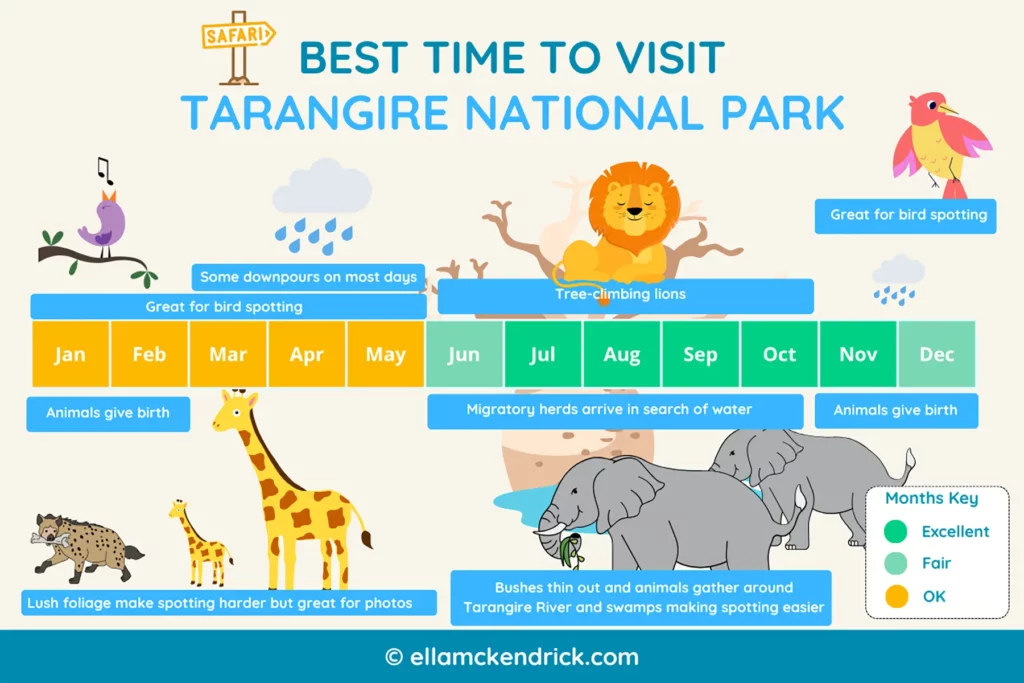
Tarangire’s migratory herds such as elephants, oryx and gerenuk, move up into the Masaai steppe during the short wet season in November and return at the start of the long dry season in June.
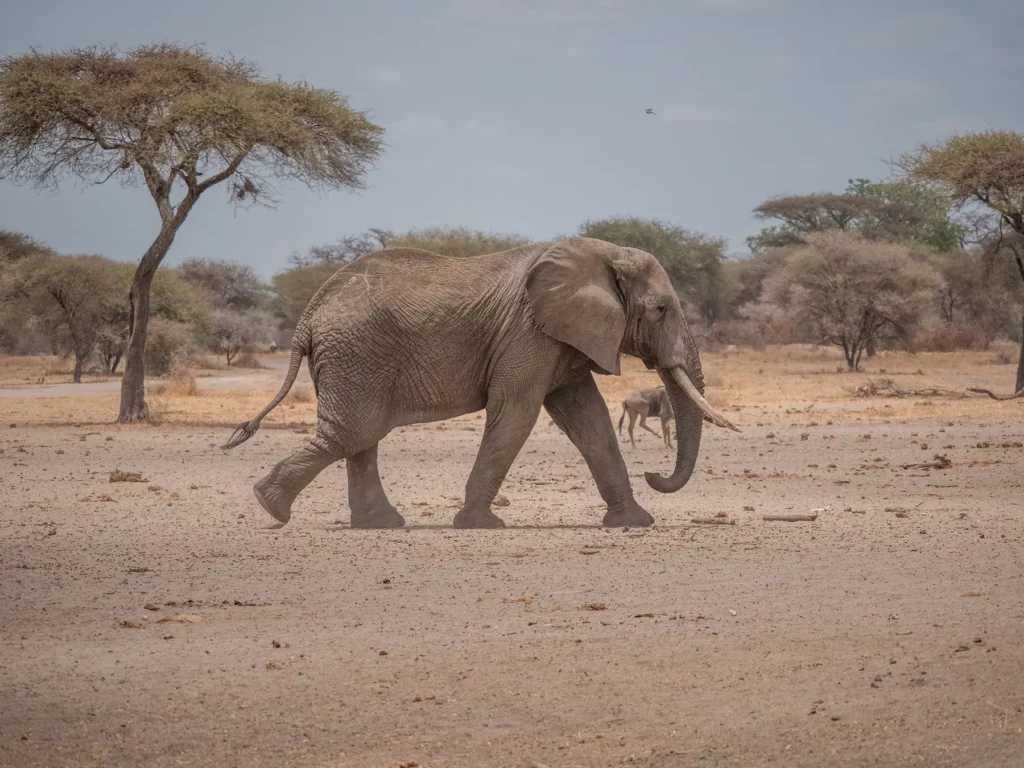
There is some unpredictability in terms of the exact arrival and departure dates of the migratory herds. If the long wet season finishes early then the migratory herds come to the park earlier and leave earlier. On the other hand, if the long rains finish late then the migratory herds arrive at the park late and leave later.
The shorts rains usually start around mid-September and breathe life into the park. Many animals start giving birth to babies, vegetation turns a vibrant green and flowers bloom.
Birdwatching is at its best in the wet season, when the migratory birds are present.
The most challenging time to visit is during the long rains in March, April and May, as there are regular, heavy downpours.
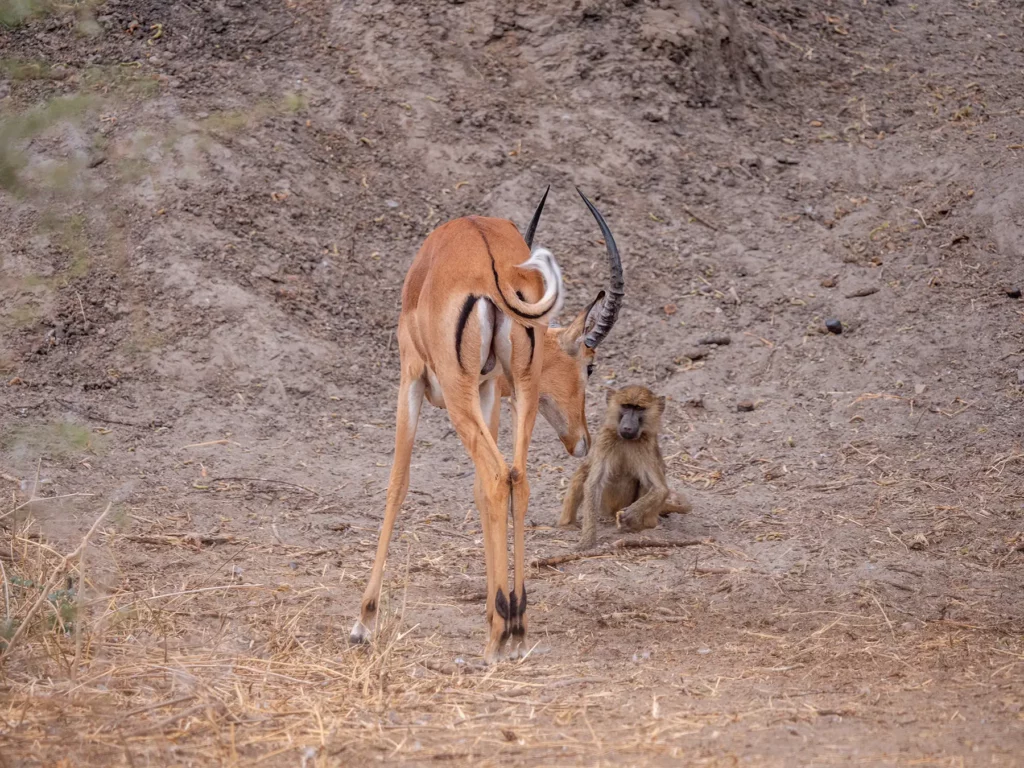
Best Time to Visit Lake Manyara National Park
Lake Manyara is a scenic soda lake in northern Tanzania, known for its tree-climbing lions, large flocks of flamingos, and rich birdlife.
Due to Lake Manyara expanding and flooding surrounding areas in recent years, the park is not as popular a travel destination as it once was. In my opinion, it’s still worth a visit as you can enjoy a ride in a traditional boat on the lake, and game viewing is excellent.
The best time to visit Lake Manyara National Park is the same as the Serengeti, with June to October being the best time.
Below I’ve ranked each month in Lake Manyara.
- Excellent
- Good
- OK
- Poor

Best Time to Visit Arusha National Park
Arusha National Park is a small and easy to access reserve near Arusha, known for its lush forests, Mount Meru, and wildlife including giraffes, colobus monkeys, and flamingos.
The best time to visit Arusha National Park is during the long dry season from June to September, when wildlife is easier to spot as animals gather around water sources and vegetation is thinner.
Below I’ve ranked each month in Arusha National Park.
- Excellent
- Good
- OK
- Poor
January and February: Short dry season. Good for wildlife viewing and birdwatching in Arusha National park, especially migratory species.
March to May: Long rainy season. Lush scenery but wildlife in Arusha National Park is harder to spot due to thick vegetation. This is the best time to see flamingos in Arusha National Park, when large numbers gather on the Momella Lakes. Some roads may become muddy or impassable.
June to October: Long dry season. Peak wildlife viewing with animals congregating near water and vegetation is sparse. Colobus monkeys can be seen year-round in the park’s montane forests, but sightings are easiest during this period. This is also an ideal for trekking Mt. Meru which sits inside Arusha National Park.
November and December: Short rains. Arusha National Park is still accessible with fewer tourists. Birding is excellent with the arrival of migratory species, though some rain expected.

Although it is a relatively small park, covering just over 500 square kilometres, the park’s varied landscape consists of open grasslands, rolling hills, volcanic mountains, dense forests, as well as lakes and marshlands. These cannot be truly appreciated in excessively rainy conditions.
Since the park is a short drive from the city of Arusha, it’s possible to stay in the city and travel back and forth each day, so that you enjoy a range of attractions. The abundant wildlife consists of elephants, buffalos, zebras, warthogs, and many antelope species. It also has one of the biggest populations of giraffes in the world.
The absence of big cats makes Arusha an excellent park for walking and canoe safaris.

Best Time to Visit Ruaha National Park
Situated in the remote southern region of Tanzania, Ruaha National Park is one of the lesser known parks, despite being one of the biggest.
The best time to visit Ruaha National Park is during the long dry season from June to September, when wildlife is easier to spot, large elephant herds gather at the Great Ruaha River and most lodges are open.
The second-best time to visit is during November and December, when the short rains bring fresh greenery, fewer crowds, and the arrival of migratory birds, while most lodges remain open.
During the long wet season, heavy rains make some areas inaccessible and many lodges close.
Below I’ve ranked each month in Ruaha National Park.
- Excellent
- Good
- OK
- Poor
Even at its busiest, this park never gets crowded. The relatively low numbers of safari trucks on the trails make game viewing a far more pleasant experience. This park is so big and so remote you often feel as if you have it all to yourself.
Ruaha is renowned for its large populations of lions, leopards, and cheetahs, along with vast herds of elephants, buffalo, giraffes, zebras, wildebeest, hippos, crocodiles, hyenas, wild dogs, and numerous antelope species. The park is also home to over 500 resident bird species.
The best time to spot Ruaha’s rare antelope species such as sable, roan, and both greater and lesser kudu is during the dry season from June to October when they gather near water sources.
It takes some getting to Ruaha by road, with most visitors choosing to fly in and out using the airstrip a mere two hour drive from the park.
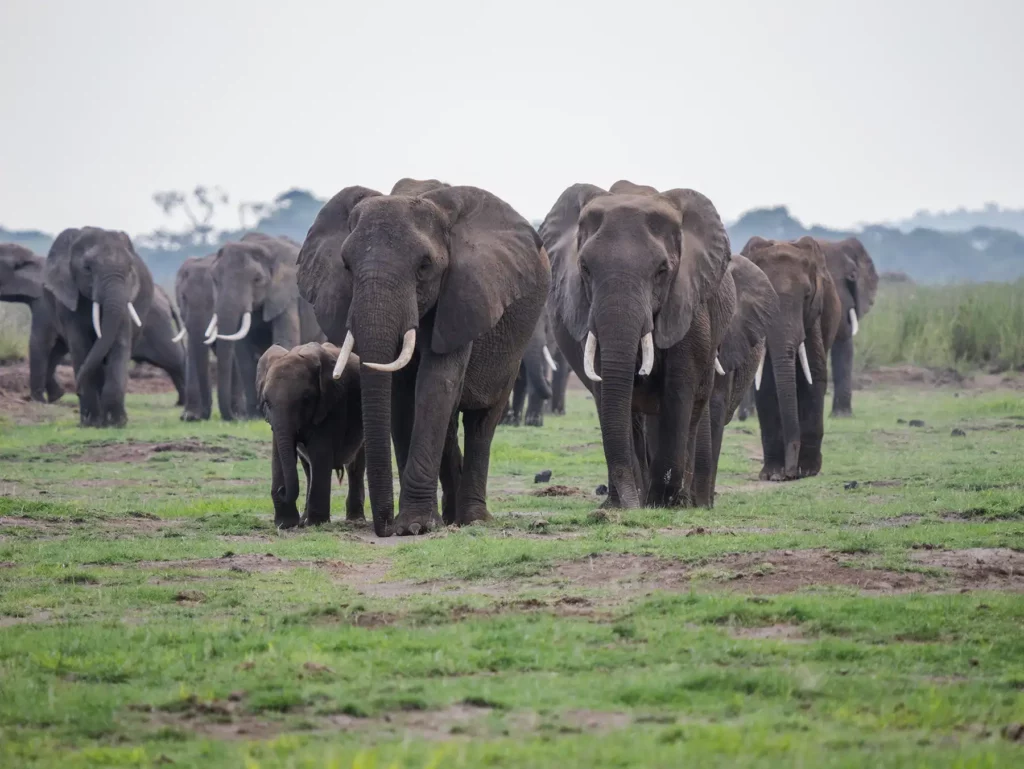
Best Time to Visit Nyerere National Park
Established from part of the former Selous Game Reserve, Nyerere National Park lies in a remote region of south-eastern Tanzania. It is one of the largest national parks in Africa and the largest in Tanzania.
I’d recommend visiting Nyerere National Park during the long dry season between June and October because wildlife is easier to spot as animals gather around shrinking water sources, the weather is more predictable, and road conditions are generally better for game drives.
Below I’ve ranked each month in Nyerere National Park.
- Excellent
- Good
- OK
- Poor
Its remoteness and lack of reliable roads mean that access to Nyerere is only practical for most visitors by air. This makes visiting during the clear, dry seasons advisable, as flying conditions are more predictable. Several airstrips are scattered across the park to serve different lodges, with regular flights from Dar es Salaam and between safari camps.
Unlike Serengeti or Tarangire, Nyerere never gets crowded, even in peak season. You can experience a true wilderness atmosphere with few vehicles—best appreciated in dry months when game viewing is easier but still applies year-round.
During the short rains in November and December, the Rufiji River’s wetlands attract a wide variety of migratory and resident bird species, making this an excellent time for birdwatching in Nyerere National Park.
Since it’s close to the coast, during the wet seasons Nyerere is far more humid than the other parks in the western highlands. This not only makes life uncomfortable but also increases the numbers of mosquitos and raises the risk of malaria.
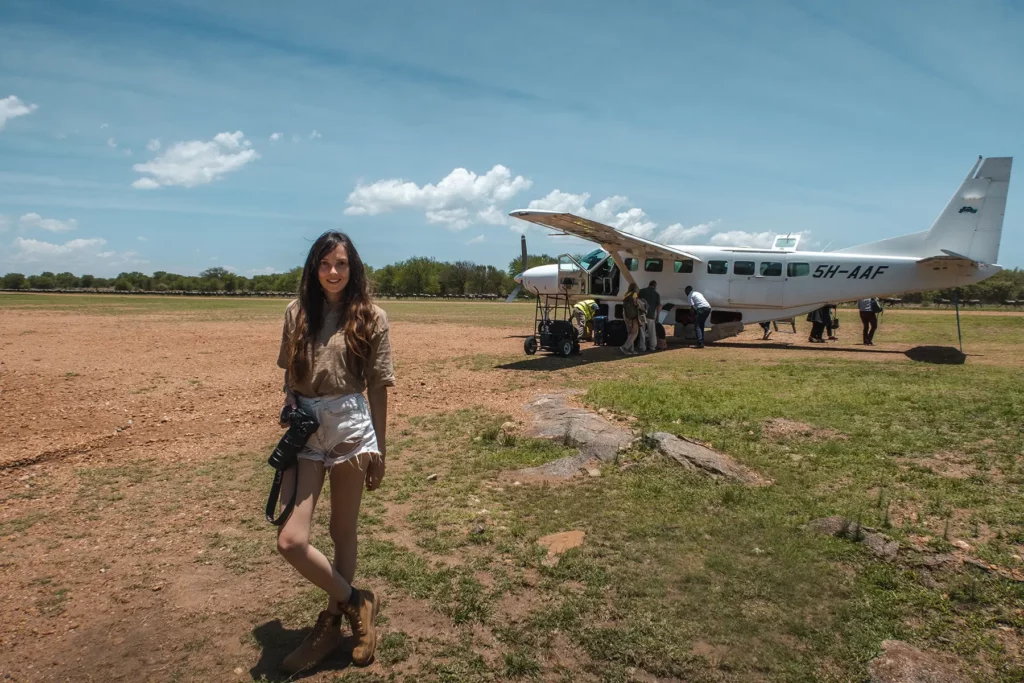
Best Times to Visit Both Tanzania and Zanzibar for Safari and Beach
Zanzibar is a tropical archipelago off Tanzania’s coast, known for its white-sand beaches, turquoise waters, spice farms, and historic Stone Town. It’s popular to combine a safari in Tanzania with beach-time in Zanzibar, which is a just a short domestic flight away from Tanzania’s mainland, for some rest and relaxation.
The best times to go on safari in Tanzania correspond well with the best times to visit Zanzibar. These are the long dry season from June to October and the short dry season from January to February.
The best time to combine safari and beach is from June to October, when Tanzania’s parks such as the Serengeti and Tarangire offer excellent wildlife viewing during the dry season, and Zanzibar enjoys sunny weather, low humidity, and calm seas.
The second-best time to visit is January to February, when the calving season takes place on the Ndutu plains in the southern Serengeti, offering dramatic wildlife action, and Zanzibar experiences warm beach weather with some humidity but generally pleasant conditions.
Below I’ve ranked each month in Zanzibar based on weather and sea conditions.
- Excellent
- Good
- OK
- Poor
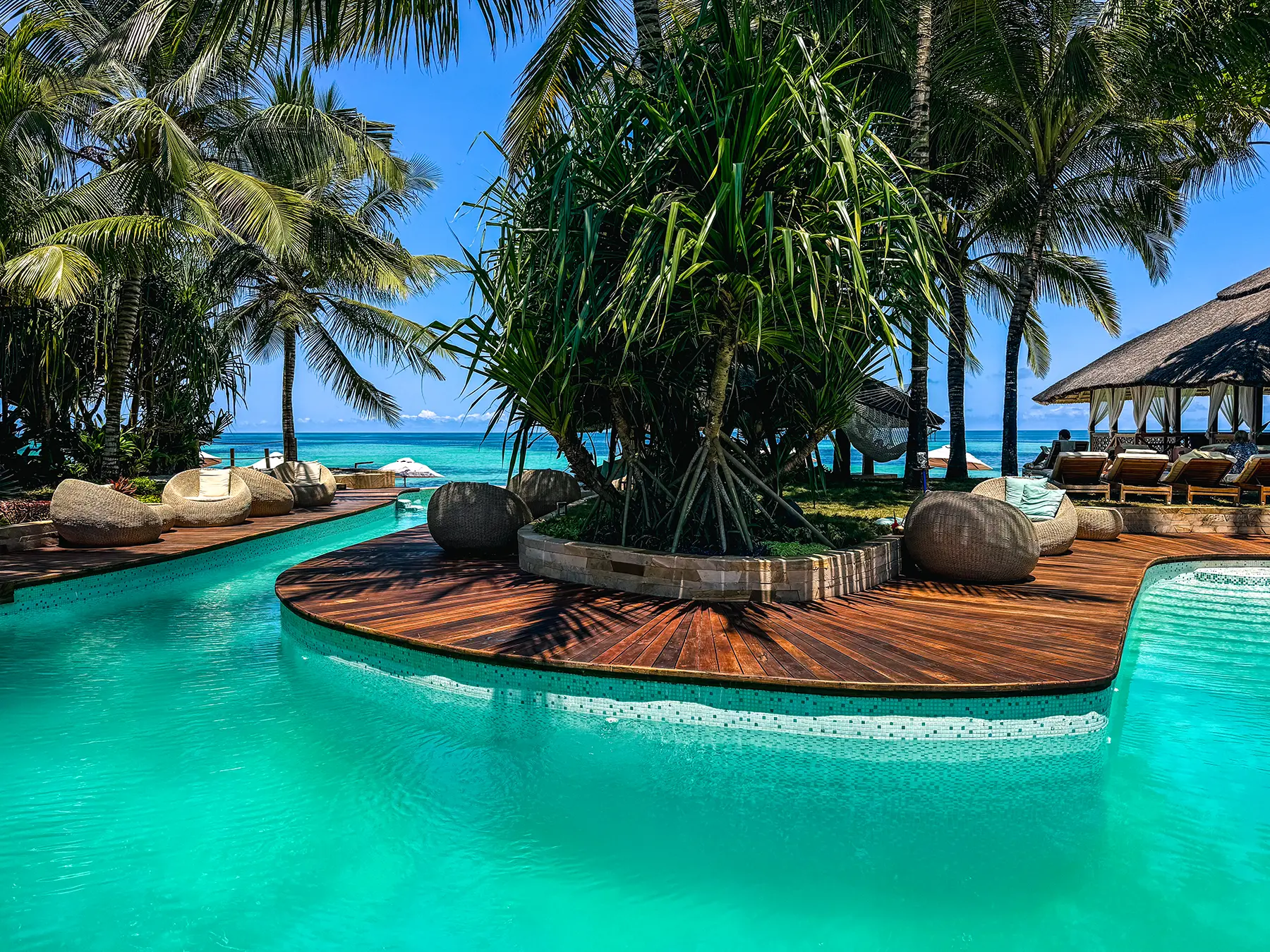
For inspiration and the perfect safari and beach itinerary, take a look at my Tanzania safari and beach honeymoon itinerary which is also a great itinerary even if you’re not on honeymoon.
Save time and ensure an incredible safari experience
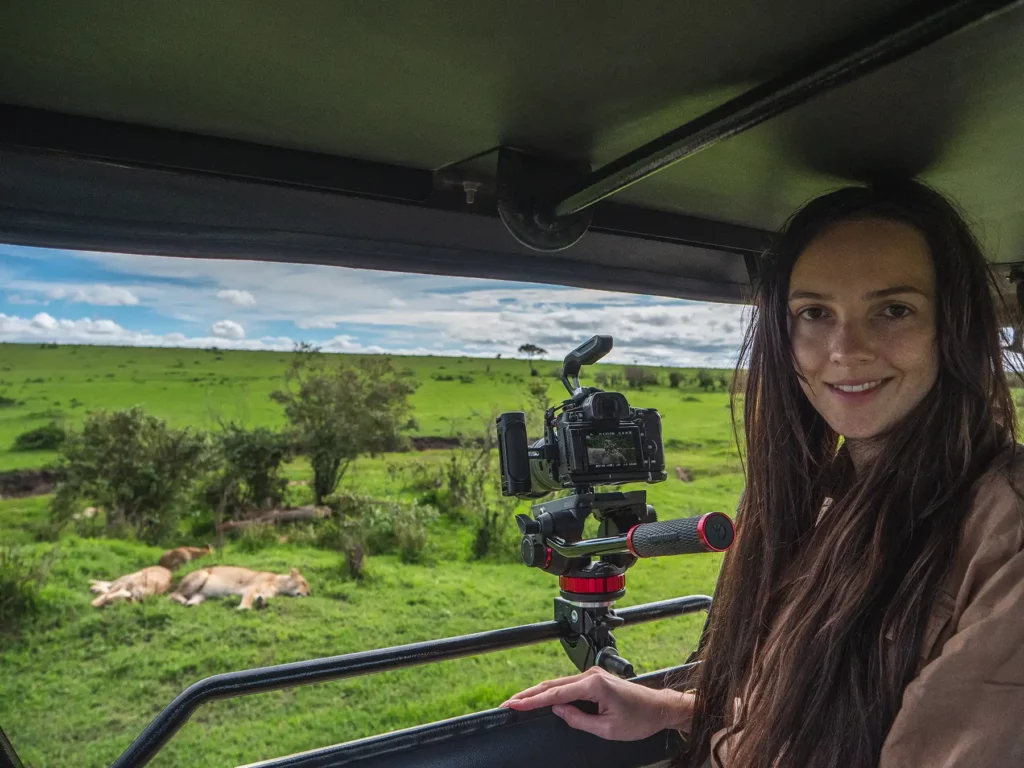
Get quotes from the local tour companies I use to organise my own trips.
You’ll join the rapidly growing tribe of over 250 travellers who’ve booked their dream safari using my insider tips and recommendations.
Best Time for Hiking Kilimanjaro
Hiking Tanzania’s Mount Kilimanjaro is a bucket-list trek that takes you through diverse climate zones, from rainforest to alpine desert, culminating at Africa’s highest peak, Uhuru at 5,895 meters.
The best time for hiking Kilimanjaro in Tanzania is from January to early March because the weather is generally clear and dry with good visibility, making for comfortable trekking conditions and scenic views from the summit.
The second-best time is from mid-June to mid-October because the weather remains dry and stable, trails are in good condition, and the skies are often clear, offering excellent views from the mountain. However, it is not quite as warm as the January to early March period.
These times are very similar to the best time to visit Tanzania for safari and also Zanzibar.
Below I’ve ranked each month based on its suitability for hiking Kilimanjaro.
- Ideal
- Good
- Challenging
- Avoid
Kilimanjaro is made of various bands with the top being the Uhuru Peak, which is always extremely cold. Visiting during the warmer periods makes the peak slightly less cold than at other times of year.
The infographic below shows what you can expect in each month.
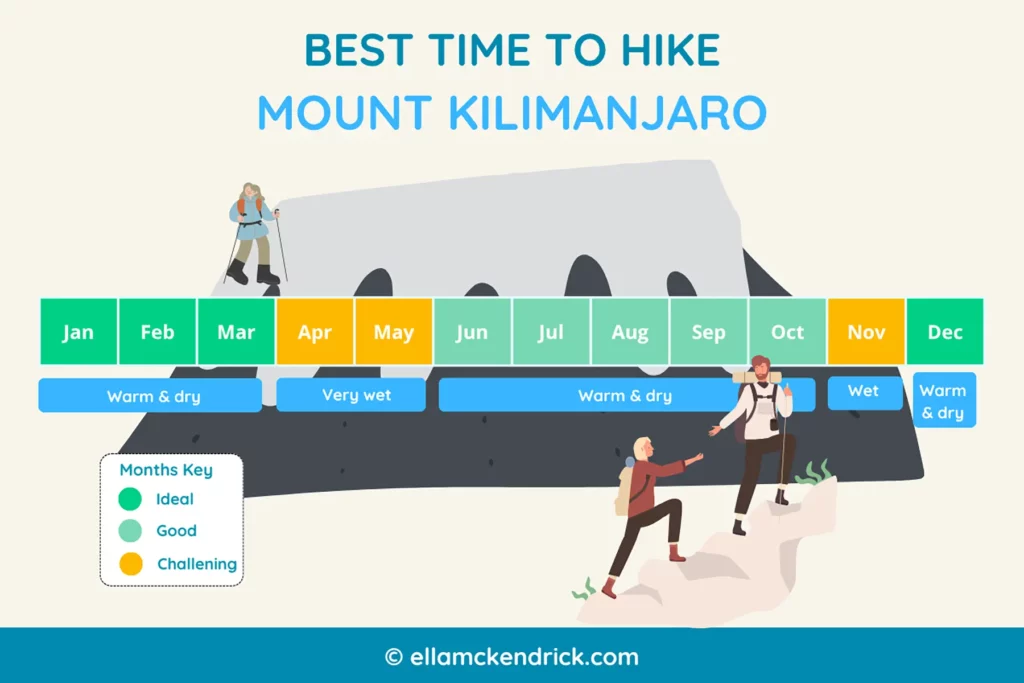
Best Time To Visit Tanzania for Birdwatching
The best time of year to visit Tanzania for birdwatching is from January through to April, when resident birds are in breeding season and display their most vibrant plumage, and migratory birds from Europe and other parts of Africa are also present.
The second-best time is from November through to December, when migratory birds begin to arrive, but resident birds are not yet breeding.
Whilst they are the very best times, It’s worth noting that birdwatching is fantastic throughout the whole year in Tanzania.
Below I’ve ranked each month for birdwatching in Tanzania.
- Excellent
- Good
- OK
- Poor
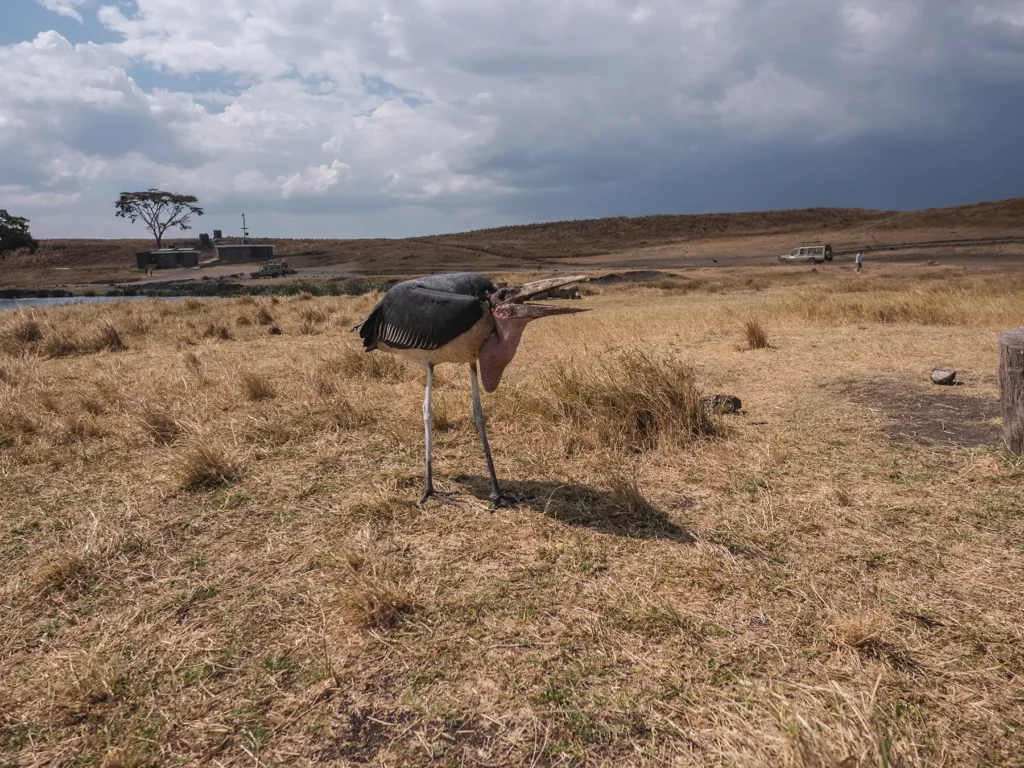
Tanzania High Season Vs Low Season
Tanzania has four key seasons made up of one short and one long wet season, the first being shoulder season and the second being low season and then one short and one long dry season, which are both high season.
With Tanzania being just a few degrees south of the equator, the seasons are not separated by periods of hot and cold, but rather by the arrival and cessation of the rains.
Tanzania High Season
Tanzania’s high season is the long dry period from June to September with July and August being the peak as well as the short dry period from January to February.
Pros of High Season in Tanzania
- Weather is at its best with dry, sunny days and pleasant temperatures
- Vegetation has died back, making wildlife easy to spot
- The highlights of the migration including the wildebeest calving and Mara River crossing take place at this time of year
- Wildlife tends to congregate around water sources, making them easy to locate
Cons of High Season in Tanzania
- Prices are at their highest
- Parks are at their busiest
- Many of the best lodges sell out up to a year in advance
- Black rhinos are harder to spot in Ngorongoro Crater as they retreat to the forests
Tanzania Shoulder Season
Tanzania’s shoulder season is the short wet period from October to December.
Pros of Shoulder Season in Tanzania
- Prices are more favourable than peak season
- Parks are significantly quieter than peak season
- Lush greenery is great for photographs
- Rain is typically limited to afternoons meaning mornings are often dry and pleasant
- Herbivores star to give birth which means lots of baby animals can be seen as well as related predator action
- Black rhinos are easier to spot in Ngorongoro Crater than in the dry season
Cons of Shoulder Season in Tanzania
- Rain is a possibility, especially in the afternoons
- Denser vegetation can make wildlife a little tricker to spot
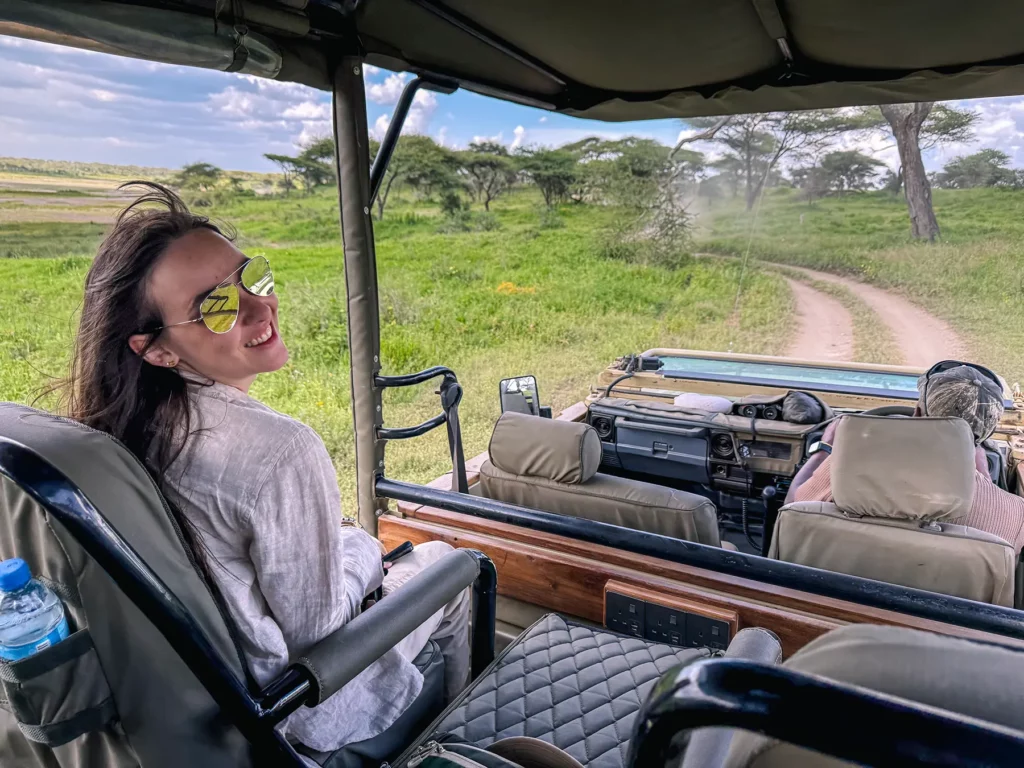
Tanzania Low Season
Tanzania’s low season is the long wet period from March to May with April being the wettest month.
Pros of Low Season in Tanzania
- Prices are at their lowest
- Parks are at their quietest
- Wildlife is still plentiful
- Migratory birds can be seen making it a great time for birdwatching
- Black rhinos in Ngorongoro Crater are easier to spot than in the dry season season
Cons of Low Season in Tanzania
- Plenty of heavy rain with high temperatures and high humidity
- Flooding is a real possibility which can make some roads impassible and disrupt travel
- Downpours can make wildlife spotting tricky
- Denser vegetation can make wildlife harder to spot
I personally like the high season and shoulder season. The rains in the low season have become increasingly difficult to predict due to the changing climate which makes me hesitant to recommend this time of year. Whilst sometimes the rains are minimal, other years they can cause devastating flooding which can be dangerous.
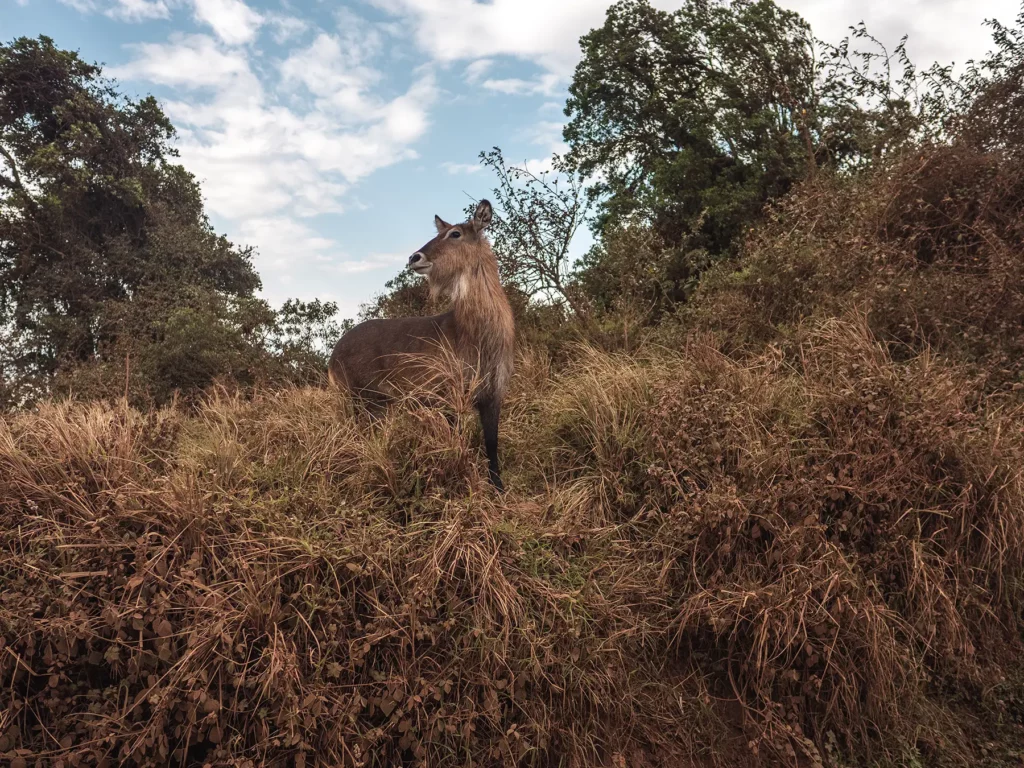
When is the Rainy Season in Tanzania?
The first rainy season is from March to May and is known as the ‘long rains’. The rains during this period can be quite intense, making it difficult to view game, hike Kilimanjaro or visit Zanzibar. Flooding is also common in certain areas and many lodges close during this period.
The second rainy season is towards the end of the year from mid-October to Mid-December. This period is known as the ‘short rains’. During this period, the rains are not as heavy as the long rains and showers normally occur in the afternoons and don’t last for too long. This allows almost all the normal activities like game drives, hiking, and enjoying the beaches to take place.
Having said all that, it must always be kept in mind that the weather all around the world has become quite unpredictable and severe at times, now that climate change is impacting the weather system. The seasons mentioned above are based on past averages. Timings of the rains, and their severity, vary with each season.

Risks of Visiting in the Rainy Season
The risks of visiting in the rainy season may depend on where you want to go and what you want to see or do.
Visiting during the short rains does not typically present too many risks, as the rains are short and light. You can still experience fantastic game drives and see a host of wildlife on your safari. However, be prepared for unexpected showers.
When I visited Tanzania in November, some roads had become impassable after a few nights of heavy rains and en route to Lake Natron we were forced to a stop as a gushing torrent of water cut the road in half. This was the only road into Lake Natron from the south (there’s another road from the Serengeti but that was around 10 hours away) and so we had to abandon our plans to visit Lake Natron.
I visited during November of 2023 when Tanzania experienced an unusually heavy short rainy season. This was classed as a freak weather event, but shows how the effects of climate change do make unusual weather more likely.
The intense rains experienced during the long rainy period from March to mid-May may hinder many activities. Parks may experience flooding (look at what happened to the Masai Mara, next door to the Serengeti, in late-April 2024), which may result in certain areas being closed off completely. Your safari truck may also get stuck in a remote area, which can lead to even more serious consequences if you’re on a self-drive safari.
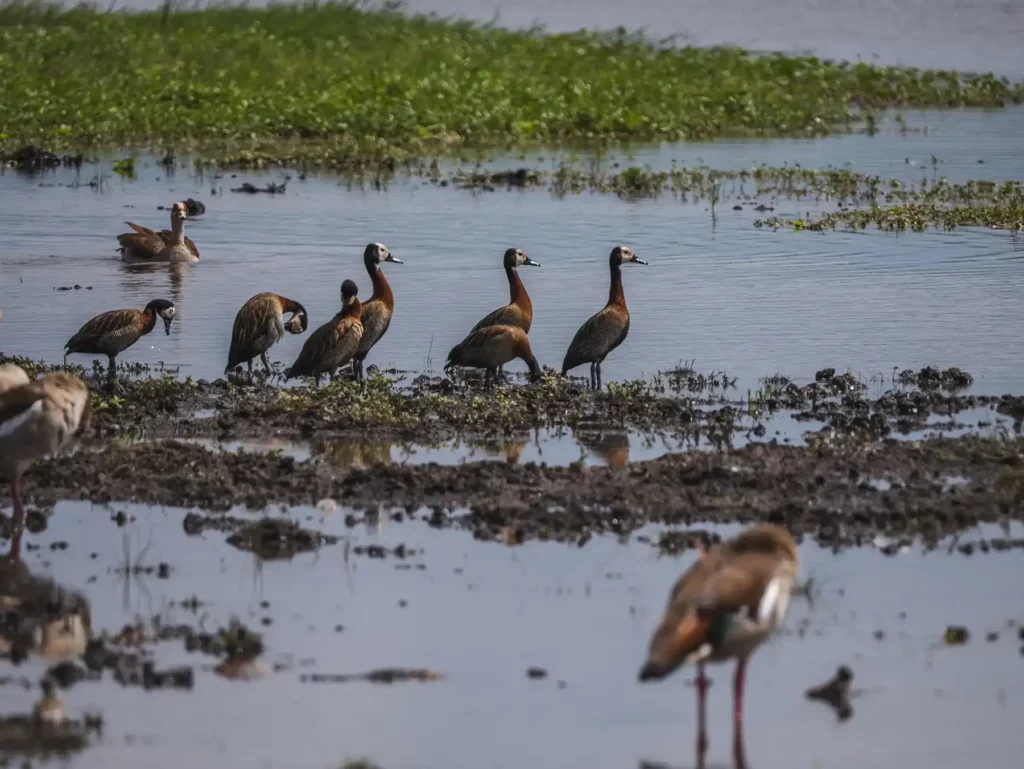
During the rainy season you also run the risk of not enjoying the breathtaking views from the slopes and summit of Kilimanjaro. You’ll also have to endure muddy trails, which can somewhat spoil the whole experience.
Another reason for choosing the dry season over the rainy season is the high numbers of mosquitos in the rainy season. They’re not only annoying but also raise the risk of malaria.
In general, Tanzania is not a cheap destination, whether you’re going on safaris, hiking Kilimanjaro or visiting the Zanzibar Islands. The experiences in those places can be truly memorable but much depends on the weather. Unless you’re set on coming during the long rains for a specific purpose, you will always run the risk of actually missing out on what Tanzania really has to offer.
In my opinion, considering how much you will spend to get there in the first place, it makes sense to follow through with your investment and visit Tanzania during a more favourable time of year.

Cheapest Time of Year to Visit Tanzania
Tanzania is not the cheapest safari destination, so if your budget is really tight you might prefer to look at slightly cheaper safari destinations such as Kenya. However, if you have your heart set on Tanzania – and I completely understand why that might be the case -the cheapest time to visit would be during the long rains from March to April.
Typically, most of the rain falls in the afternoon, so you can usually schedule morning game drives to avoid the rain. Whilst many of the accommodations in the south close over this period, the more popular northern accommodations typically stay open and offer lower rates.
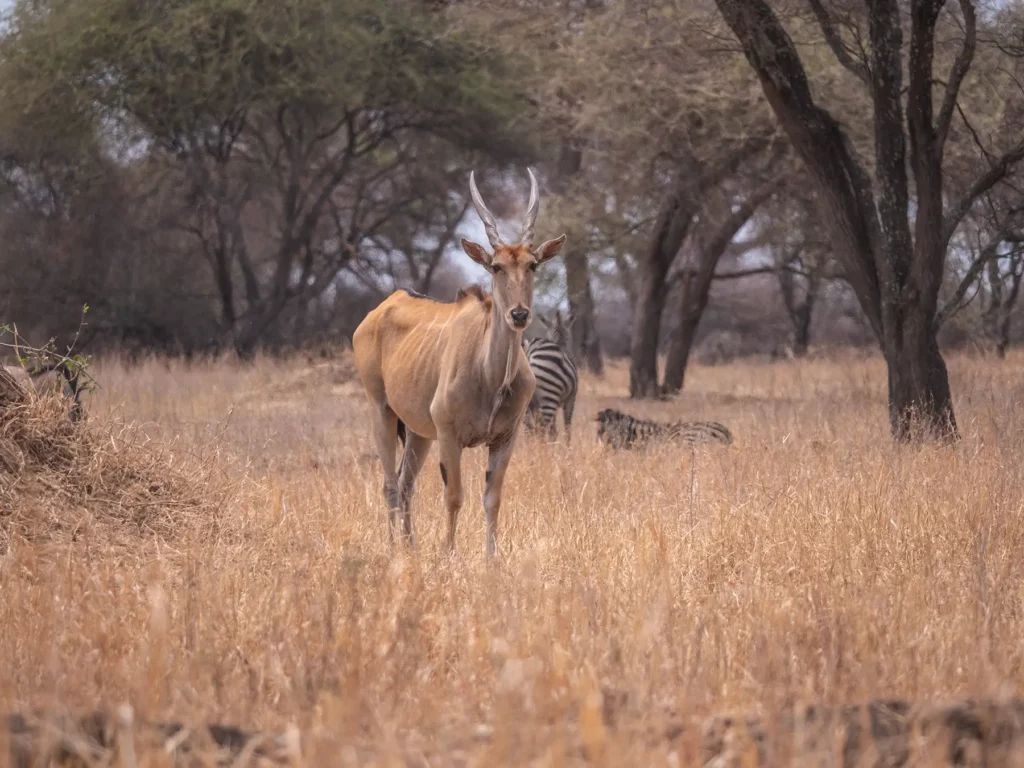
Save Time and Ensure an Incredible Safari Experience
Get quotes from the local safari companies I use to organise my own trips.
You’ll join the rapidly growing tribe of over 1,000 travellers who’ve booked their dream safari using my insider tips and recommendations.
Jump back to the table of contents

Embark on the Safari of Your Dreams
Save time and ensure an incredible safari experience by getting quotes from my recommended local safari companies
I’m here to make booking your perfect safari quick, easy and risk-free.
Join the rapidly growing tribe of over 1,000 travellers who’ve booked their dream safari using my insider tips and recommendations.

It takes under 60 seconds to fill out the form and in under 48 hours you will receive multiple, no-obligation proposals from my favourite local tour operators with glowing online reviews.
Get your free no-obligation safari quotes and my top safari tips and recommendations
Ellamckendrick.com is a free online resource. If you have found this website useful for planning your adventures, you can show your support by buying me a coffee. Thanks so much!

Read More Tanzania Guides
For an overview of planning your safari, you can read my Ultimate Tanzania Safari Guide.
Tanzania Itineraries
Recomended itineraries and how to book them.
7-10 Day Tanzania Safari Itinerary & Costs
5-Day Tanzania Safari Itineraries & Costs (6 unique Itineraries)
3-Day Tanzania Safari Itinerary & Costs
2-Week Tanzania & Zanzibar Safari Itinerary & Costs
3-Week Tanzania Safari Itinerary & Costs
10-Day Tanzania Honeymoon Itinerary & Costs
Tanzania and Kenya Itineraries
Multi-country itineraries and how to book them.
10-Day Kenya and Tanzania Safari Itinerary
2-Week Kenya & Tanzania Safari Itinerary
Costs & Planning
How to get the most bang for your buck and the best time of year to visit depending on what you want to do and see.
Tanzania Safari Cost – Everything You Need to Know!
The Great Wildebeest Migration Guide
Zanzibar Island – The Complete Guide
National Parks & Reserves
Complete guides to the best and most famous safari reserves, including the wildlife you’ll see, entrance costs and best time to visit.
Other Popular Safari Destinations
How to Book Your Safari
Save time and ensure an incredible safari experience by getting quotes from my recommended local safari companies.
Join the rapidly growing tribe of over 1,000 travellers who’ve booked their dream safari using my insider tips and recommendations.



